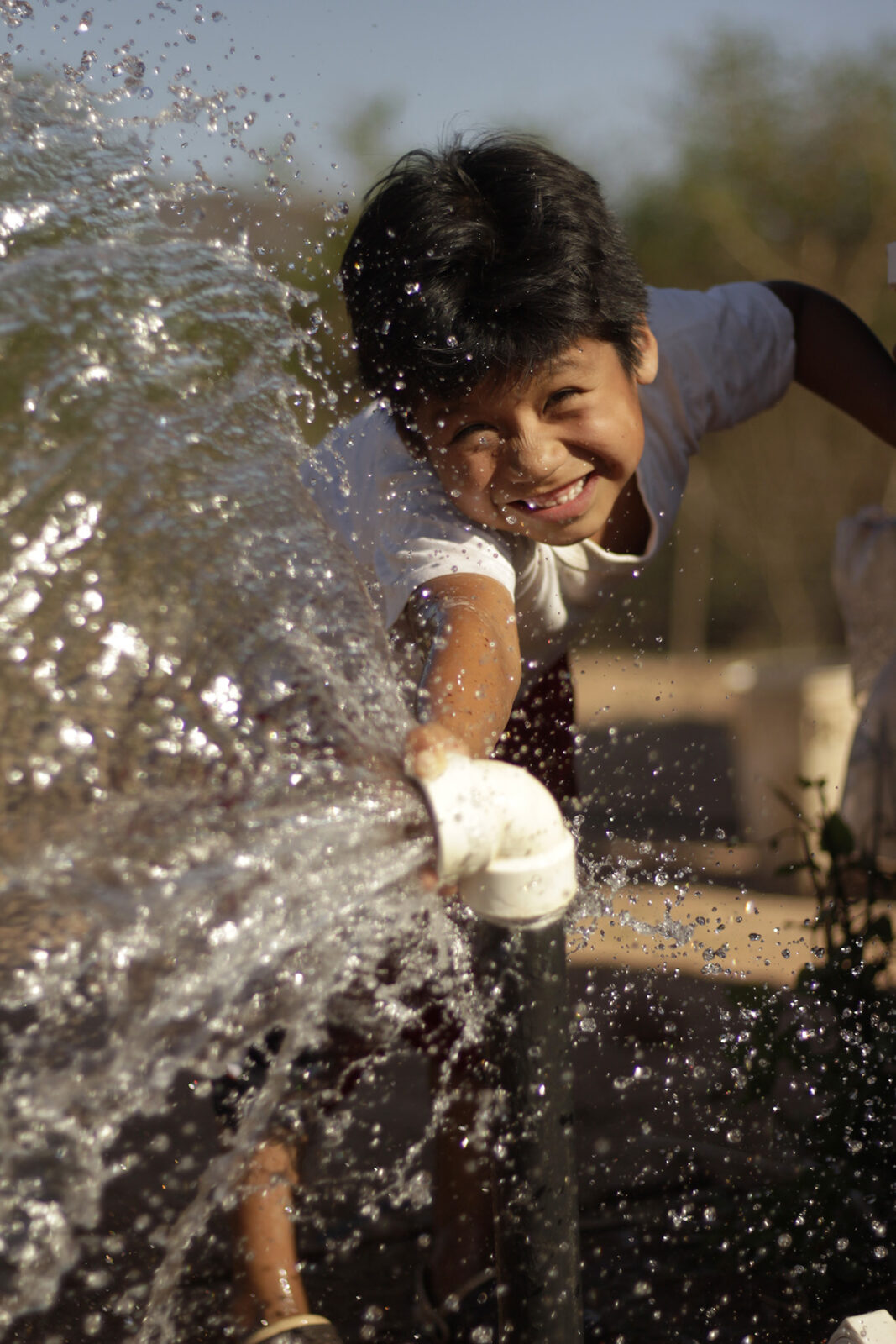
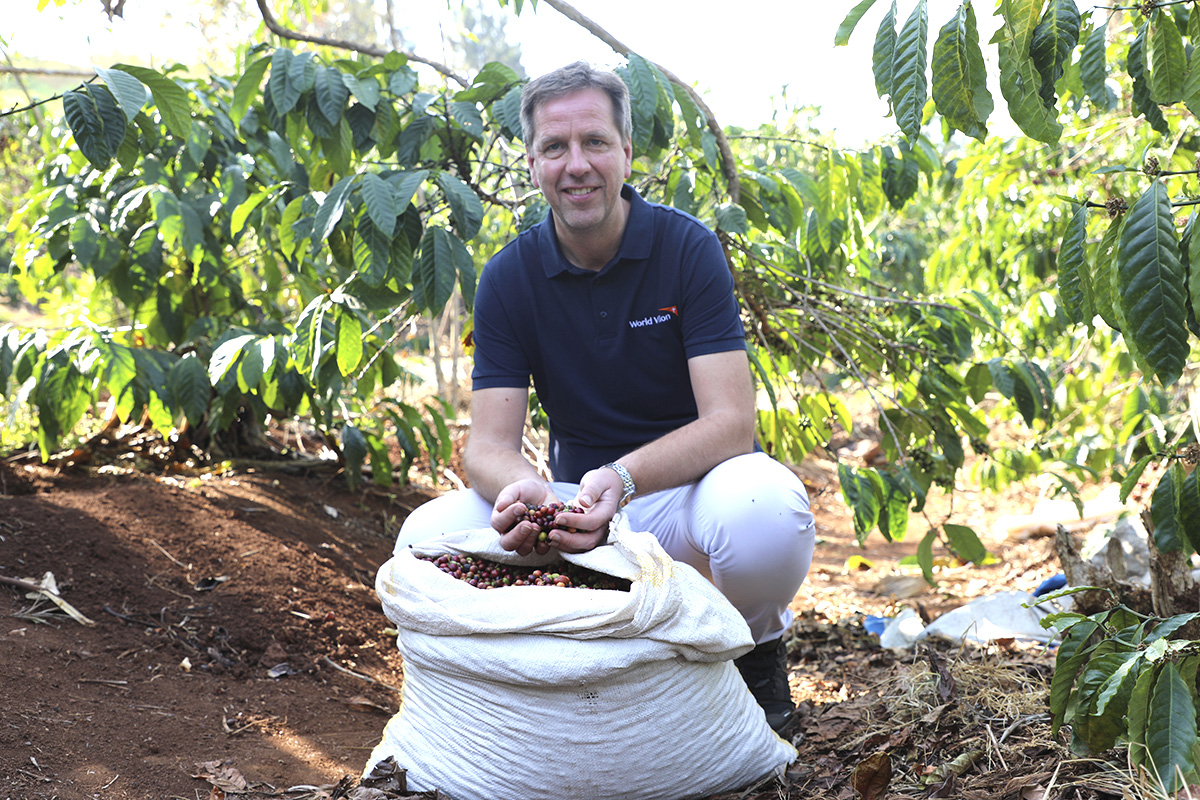
A message from the Executive Board and CEO
It was a day in February, the morning after the conflict in Ukraine started. As I was eating my cereal that morning, my phone rang. It was a donor who wanted to donate a significant donation to World Vision. I remember being overwhelmed not knowing how to respond. The conflict had just started, and World Vision was not even on the ground in Ukraine. How were we going to help?
Now as I look back, it is one of the largest responses we ever had. And a crisis that is in your face: literally across the street from where our office building is, hundreds of Ukrainian refugees are being housed.
“It makes me more aware and passionate about what our core business is: helping children towards a better future.”
What really struck me was the Ukrainian mothers and children I saw at the border of Ukraine and Moldova. I remember fear and uncertainty in their eyes. One day they were in their safe homes and another they were fleeing their country, leaving their husbands and fathers behind.
With their lives packed in a suitcase not knowing where to
go next.
Currently we are dealing with the global hunger crisis that is a direct effect of conflict and of climate change that’s been going on for a while now. At times, it can be overwhelming, and you feel incredibly powerless. So much is happening in the world. However, at the same time it makes me more aware and passionate about what World Vision’s core business is: helping children towards a better future. If we don’t depend on Christ in all of this, our work will be in vain. Therefore, we make a conscious choice to place Him, who holds the world in His hands, at the centre of all that we do, and we trust Him. In 2023 too.
On behalf of the leadership team,
Marco van der Graaf
Executive Board and
CEO World Vision Nederland
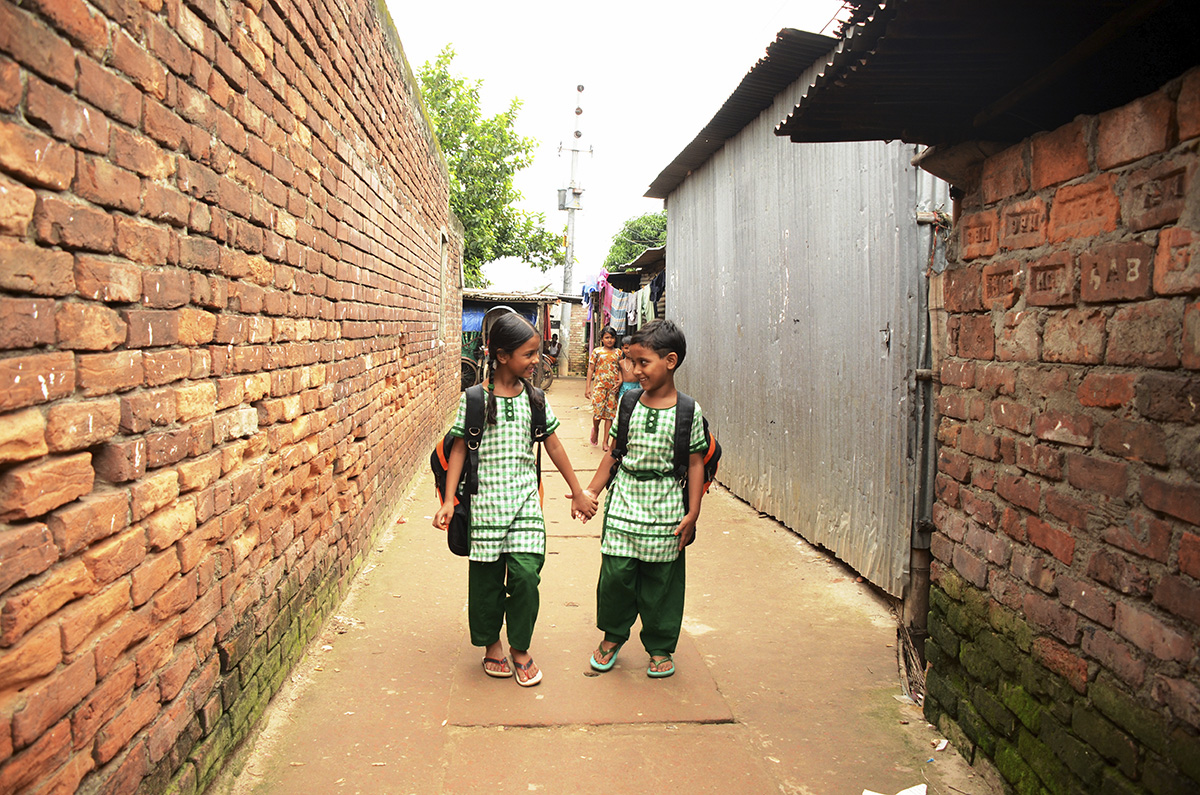
We are World Vision
World Vision Nederland was founded in 1981 as an independent legal entity within the World Vision Partnership. Guided by more than 70 years of experience and expertise, our dedicated staff employ proven and effective development and relief practices to empower communities to become self-sufficient and bring real, lasting change.
As a leading global partner, we labour alongside supporters, stakeholders, families and communities to transform lives and offer hope. As a result, all our lives are enriched. Together, with our partners, we have positively impacted the lives of more than 200 million vulnerable children around the world.
World Vision Nederland is a registered foundation based in Amersfoort, the Netherlands, employing approximately 42 staff (35.5 FTE) and volunteers. Since its establishment, World Vision Nederland has focused on supporting vulnerable children in developing countries by raising funds and awareness. In Financial Year 2022, the total (expected) income raised by World Vision Nederland exceeded €35 million, which we used to support over 1 million vulnerable children in 20 countries.
As World Vision, we believe it is important that employees experience the impact of their work. That is why we offer all employees the opportunity to visit one of the projects once every 5 years.
Carina Koerting, Senior Fundraiser
As a senior, Carina Koerting leads the fundraising team of World Vision Nederland. The team is there to recruit sponsors. “I believe, as Christians, we are called to contribute to society and help the poor and weak. So, I want to use all my God-given talents to be part of the solution.”
In all its work, World Vision goes for quality and helps people escape the cycle of poverty. “Last year I went to visit my colleagues in Sierra Leone. On paper, we say that we want to do our work with love, courage, and inspiration, but to see it put into practice was just amazing. We do not tell people what to do but try to find a solution together. We talk to leaders of communities on the ground because they know best.
“I want to be part of the solution.”
When I was in the capital of Sierra Leone, I did not realise what the effect was of the water tower World Vision had built. The chief told me that children can go to school because they do not have to fetch water. Moreover, it makes the world safer, because the girls are not molested on their way to the water wells. Never did I connect clean drinking water with safety. That was intense.
When I started working for World Vision, I also started sponsoring Edishu, an eleven-year-old girl in Ethiopia. Fundraising became personal through her. Edishu is the face of what I do. She helps me to be connected to a world in need. Currently there are many famines worldwide, including in Ethiopia. I remember when I was a little girl, years ago, that country was also affected by famine and the song ‘We are the World’ planted a seed in my heart. So, when I saw them on the world ranking list again, I saw Edishu’s face and got so discouraged. I get emotional just thinking about it. It seemed that nothing had changed. At the same time, I felt hope. Hope grounded in my personal faith but also in togetherness. If we work together there is hope for the world.”
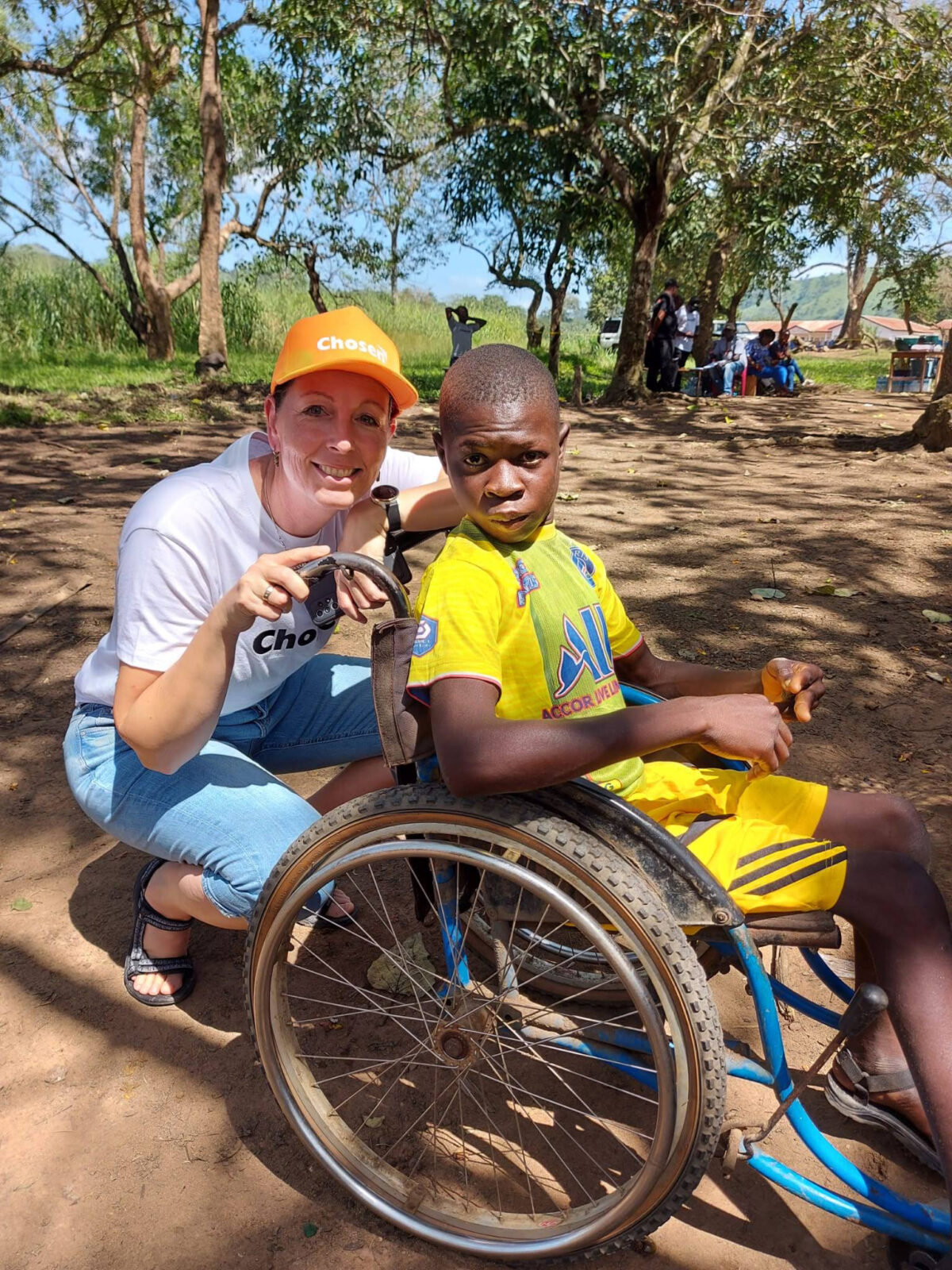

Our vision
The vision statement of World Vision is as follows:
Our vision for every child: life in all its fullness.
Our prayer for every heart: the will to make
it so.
World Vision Nederland understands the phrase “life in all its fullness” in the most holistic sense possible: in our vision, it includes material, social and spiritual well-being. We partner freely with the poor, donors, other organisations and people of all faiths and ideologies, collaborating on the basis of our shared values of justice, love and hope, which we believe are vital to the fulfilment of God’s purpose.
Our Mission
While our vision embraces every child, our focus is on the most vulnerable – those furthest from “life in all its fullness”. Enabling these most vulnerable ones to see this purpose fulfilled in their lives requires people around the world to act together for their well-being. This, we believe, is God’s ‘world vision’. We seek to participate in this vision by placing ourselves wherever our ministry distinctiveness can best contribute and inspire others to have “the will to make it so”.
Our strategy
The overarching vision for the World Vision Nederland FY21-25 strategy is:
Our vision for 2025: life in all its fullness for
10 million vulnerable children
Our prayer: the will to make it so for 50,000 hearts in the Netherlands
In the World Vision Nederland Strategy for FY21-25, we have identified three strategic goals:
Greater impact, for more vulnerable children;
More sustainable funding, from more donors;
More hearts engaged and more influence, based on heightened visibility of World Vision’s identity.
To enable the organisation to achieve the above goals, World Vision Nederland has formulated an internal, enabling goal: invest to grow.
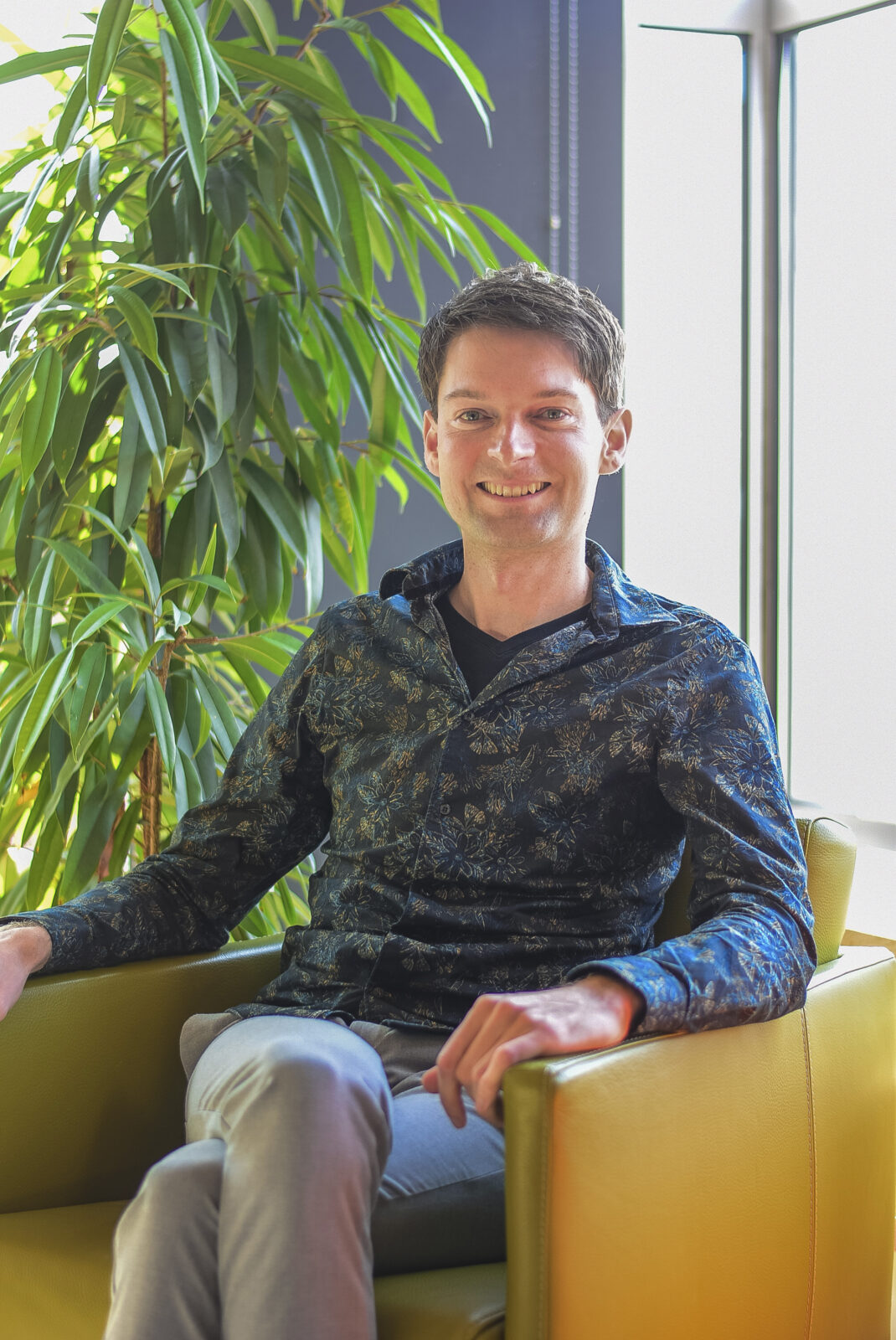
Matthijs Bokhorst,
Business Controller
Matthijs Bokhorst (36) joined the team quite recently as a business controller. “What I like about World Vision is that the focus is on helping people without there being a hidden agenda. I think through helping, you shine God’s light into the world.”
Matthijs monitors the targets sets for the year and is responsible for giving sound data and financial advice to several teams by predicting the future, so to speak. “Overall, it was a good financial year, and we met our targets. In fact, we raised even more due to the various crises in the world.
Numbers do not always tell the tale, but because we share the stories from the field on a weekly basis, you get to hear what’s going on. This year I was struck by the many traumatised children in countries which have gone through periods of conflict. These children have never experienced war – unlike their parents – and yet they are depressed. Most of them are not even ten years old! They have no hope for the future which is quite disturbing to me. The effect of war is passed on from one generation to the next.
Since I began working for World Vision, I am more aware of what is happening in the world. It is easy to close yourself off from it all.
“If I can change one person’s life, it is worth a million.”
Because of my work, I feel closer to reality, and I don’t want to walk away from it. It is the individual stories rather than the huge amounts of funds we raise that motivate me. A realistic drive because although I cannot solve every crisis, if I can change the life of one person or a whole family, it is worth a million.”
Goal 1
Greater Impact for more vulnerable children
Greater impact for more vulnerable children is both quantitative and qualitative. During this strategic period, World Vision Nederland desires to reach out to more vulnerable children and equally contributes to the breadth, and depth of impact on vulnerable children. The Partnership's focus on fragile contexts is leading.
Goal 2
More sustainable funding, from more donors
The focus in achieving this goal is to increase and sustain the funding from current, diversified, new private and public donors. To achieve this focus, we plan to increase our targets, lower match requirements, and grow public funding through diversified and innovative channels.
Goal 3
More hearts engaged and more influence, based on increased visibility of World Vision Nederland’s identity
In our third goal, several aspects from our mission and strategy come together: we want to harness our Christian Identity. With our mission, we want to engage and transform more hearts (more people), increase our influence with external stakeholders, increase child participation in the Netherlands, and grow our brand awareness.
Enabling Goal: Invest to grow
“To achieve our goals, World Vision needs to grow. And growth requires investments and scalability. World Vision Nederland will therefore continue to improve its internal organisation and IT systems for which the initiative has been outlined in the multi annual strategy.”
Gonnie de Vries,
Programme Officer
Gonnie de Vries works at the programme department and is responsible for contracting sponsors and donors. She is a teacher and anthropologist and is passionate about people. She cares for people in need, especially children involved in child labour.
“A girl told me she did not know what ‘childhood’ was. She has to work.”
Gonnie finds stories like this, where children have no idea that they have the right to play and that it is not normal for a child to work every day, very disturbing. She went to Mali for monitoring last year and met several children in a World Vision programme. “These stories really get to you. Fortunately, this particular girl was able to talk to her parents about it and they listened; she was allowed to stop working. If you want to improve the environment of children for them to flourish, it is very important that you offer an alternative to parents to make a living without having to resort to child labour.”
“What World Vision put on paper I saw put into practice.”
However, not every child gets so lucky. That is why community leaders select child leaders. They are role models for other children who cannot talk to their parents. “There was another girl, she was really shy and thin. You could see that she had been through a lot. She was vulnerable but as soon as she started to speak, she was so passionate. She was supposed to get married at a very young age and she told her parents that child marriages are not healthy. Now she is a role model for other kids. The collaboration between World Vision and the various communities in a country is so powerful to see. What World Vision put on paper I saw put into practice in Mali. That really excites me.”
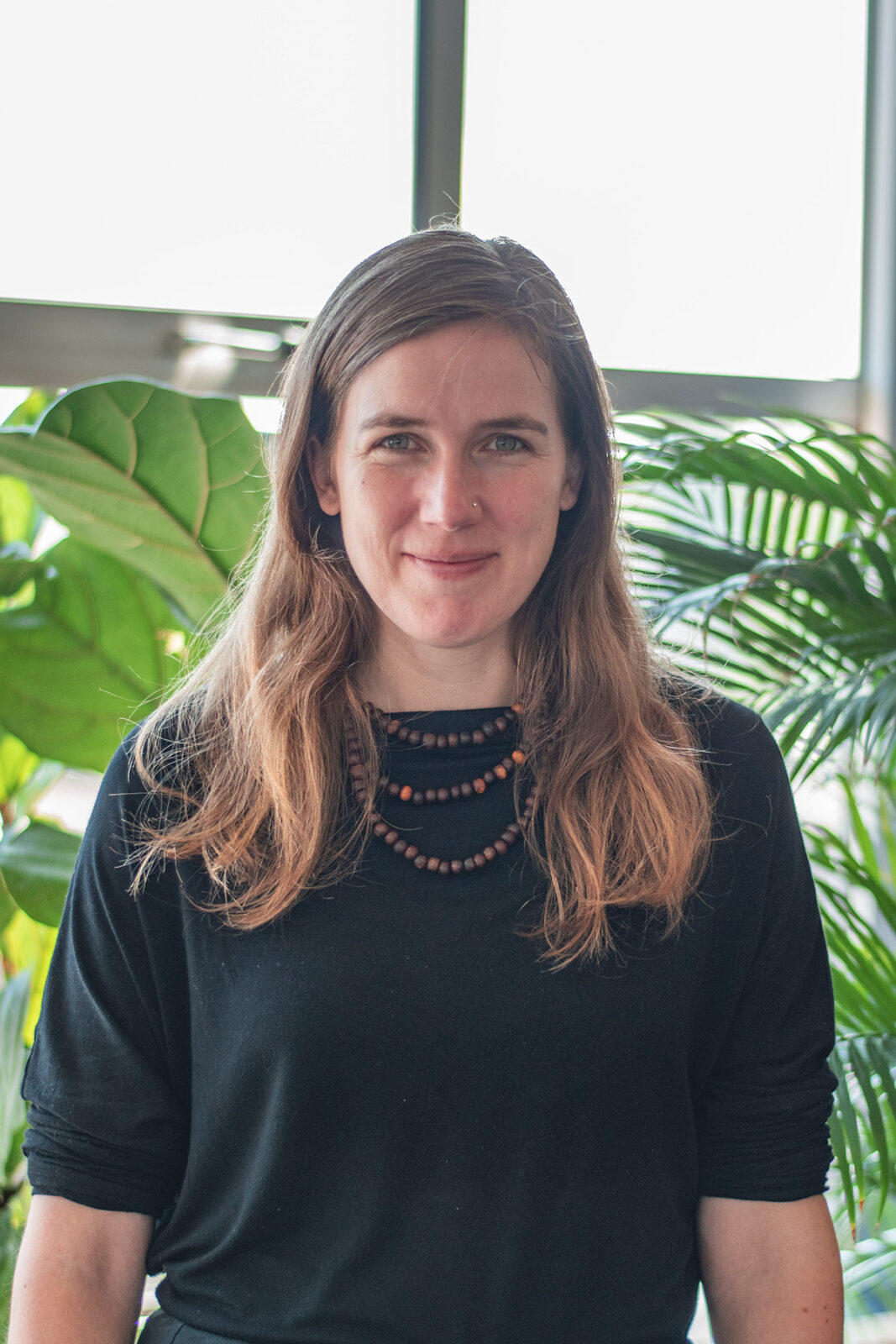
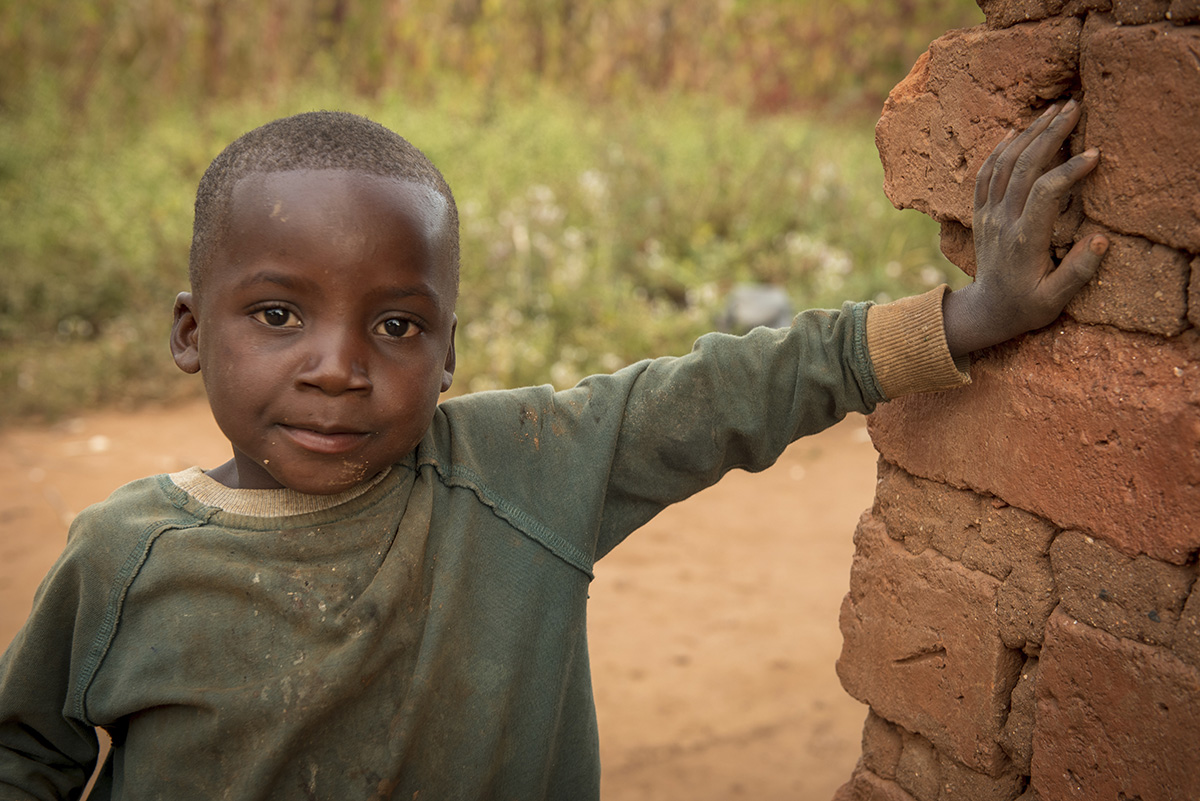
What did we achieve in 2022?
Transformational Development
Our vision is ‘life in all its fullness for every child’, characterised by dignity, justice, peace and hope. The way we do this is by transforming the overall context in which the most vulnerable children grow up, so they can live their life in fullness. We address the root of child vulnerability and strengthen the drivers of sustainability. We do this through the work in Area Programmes, ten-to-fifteen-year programmes in communities, funded largely by individual sponsors. Secondly, we have short-term programmes, funded by institutional donors, private partners, and foundations. In this past year 145,000 lives of children were changed because World Vision Nederland contributed to the improvement of their well-being.
“We can bring hope and happiness in the lives of children by providing them with a safer environment to grow up in.”

We value partnerships
Over the years we have built important and strong partnerships with (local) governments and communities as well as with peer organisations. Over the last year World Vision received support from the European Union (EU). This enabled us to provide humanitarian aid to people in need in North-West Syria, South Sudan, Vietnam, and Uganda. Furthermore, to add to the development of areas in Mali, Angola and Indonesia. The support of the Dutch Relief Alliance (DRA) – an alliance of 14 Dutch organisations funded by the Dutch Ministry of Foreign Affairs – allowed World Vision to respond immediately to crises in the Democratic Republic of the Congo, Afghanistan, Somalia, and Burkina Faso. Also, through Giro555– consisting of 11 Dutch collaborating humanitarian organisations – we were able to address the urgent needs around the conflict in Ukraine. Together with The Hunger Project, Action against Hunger, Max Foundation, Save the Children, we partner with the Dutch Ministry of Foreign Affairs to reduce malnutrition for children in Mali, Ethiopia, South Sudan, Uganda and Bangladesh.
During this past year we also partnered with a number of foundations and major donors. We specifically want to thank HAF for their partnership in Burundi and Sierra Leone, Bernard van Leer Foundation for their involvement in Jordan and Made Blue for their trust in our water solutions in Vietnam.

WASH
World Vision is the largest NGO water provider in the world, reaching 1 person with clean water every 10 seconds! Based on figures from last year, 3 million people gained access to clean water, while 2.3 million people gained access to improved sanitation and 3.5 million people gained access to hand washing services. Clean water within reach not only provides families with safe drinking water, but also adds to the success of income generating activities such as gardening and animal husbandry. Safe sanitation and hand washing facilities keep children and their families free from disease. WASH services in schools enables especially girls to stay in schools. It also enables healthcare facilities to have a higher quality of care for patients, especially for mothers and their newborn babies.
At community level, World Vision Nederland made the biggest impact by providing WASH services in Vietnam, Sierra Leone, Burundi (with Made Blue, the Heineken Africa Foundation) and Angola (with the European Union).

Child protection
World Vision’s aim is to stand up for boys and girls who are familiar with abuse, neglect, exploitation, and other forms of violence. With our Child Protection programmes we focus on partnering with communities to provide a safe environment for children, to strengthen families to adapt positive norms and practices to protect their children. We also empower them with life skills and support them to become influential protection champions in their own communities. In collaboration with the European Union, started a project in Mali to support and strengthen children who were victims of child labour by reintegrating them in the school system and strengthen the livelihoods of their families with income generating activities. In addition to this we create awareness on child protection attitudes, norms and behaviours by the children themselves, their family and community.

Livelihood
World Vision Nederland continued to work with Dutch companies who work with geodata, satellites, and applications. These companies have translated data into abilities to farmers in Angola so their farming skills can be enhanced and predictable so that there will be an increase in the harvest. They receive information through a voice- or chatbot about matters such as weather conditions or advice on soil conditions and fertilizers. This way local farmers in Angola are trained towards self-sufficiency.
In Indonesia we provided recovery assistance to people who were struck by Covid-19 which affected people’s livelihood. World Vision Nederland also supported economic empowerment for displaced people in Armenia.
Click the highlighted programmes below to see more information
Emergency relief
In 2022, the world faced multiple crises: ranging from armed conflicts like the outbreak of increased fighting in Ukraine in late February 2022, to climate-related crises like the drought and hunger in Somalia and many other countries, to epidemics like new Ebola outbreaks in countries such as DRC and Uganda. The aftermath of Covid-19 and economic/energy crisis have an impact all over the world. Often, children are the most affected.
Making vulnerable children more resilient
This all makes it challenging to reach the target we have set ourselves: to reach 10 million vulnerable children by 2025. But thanks to the tremendous resilience of children, our partners and colleagues on the ground, and the generous support of our donors, we have been able to do a lot.
In 2022, the World Vision Partnership delivered humanitarian aid to approximately 30.1 million people, in response to 55 disasters across 52 countries. We at the support office in the Netherlands were able to support children in crisis from Ukraine to Afghanistan.
“The world faced multiple crises: from armed conflicts to climate-related crises. Often, children are the most affected.”

Early warning to prevent disaster
Thanks to our global structure and worldwide network, we are available to provide emergency relief within 24 hours if a disaster occurs almost anywhere in the world.
But even before disaster strikes, we work hard to make sure children and their families understand how to reduce their vulnerability to disasters. Take Vietnam, a country which is prone to droughts and floodings, where World Vision works together with CARE Nederland and Plan Finland, and with the support of the European Union, to improve the preparedness of communities to respond to natural disasters. This helps reduce the likelihood of severe implications like death. We do so by working on early-warning systems and improving the capacity of local governments and villages to respond to predicted disasters.

Education in emergencies
In January 2022, children in Uganda finally were able to return to school, almost two years after they were closed, the worlds’ longest school closure due to Covid-19. Uganda is one of the countries in the world hosting the largest number of refugees. With the support of the European Union, World Vision started a new education project in May 2022 to provide dropouts or children at risk of dropping out with education opportunities. The project will run at least 21 months and the goal is to reach 64,259 people, of which 96% are children.

Life-saving food
Across the globe, over 45 million girls, boys, women and men – around half of them children – in 43 countries were at risk of starvation in 2022. 923,000 people in Afghanistan, Ethiopia, Somalia, South Sudan, Nigeria and Yemen were facing famine-like conditions (IPC5). This is an increase of over 500% in one year alone.
With the support of our valued donors in the Netherlands, we were able to provide life-saving food support to 626.818 people in Afghanistan, Democratic Republic of the Congo and Ukraine in 2022.
Thanks to our donors in the Netherlands, World Vision in collaboration with the World Food Programme (WFP), was able to provide 201,417 people with food in the Afghan provinces of Ghor and Badghis. In the Democratic Republic of the Congo, also in collaboration with WFP, we were able to support 284,821 people with food in North Kivu province. In Ukraine, thanks to the generous support of the Dutch public to Giro555, World Vision Nederland was able to rapidly distribute tonnes of food in 21 out of 24 oblasts all over Ukraine, including some of the most conflict-prone areas, reaching a total of 140,580 beneficiaries.

Revolutionising cash
Cash and Voucher Assistance (CVA) is an effective, efficient and transparent way of providing humanitarian aid to the most vulnerable. It ensures people have the freedom, dignity and independence to decide on their own recovery. It connects beneficiaries, as consumers, with local suppliers and service providers, building the local economy where supply is adequate. So wherever markets are functioning well, we prefer to provide CVA instead of distributing aid relief items. World Vision has been using CVA in emergency and recovery contexts for over 15 years and is one of the worlds largest implementers of CVA in humanitarian settings.
In 2022, the Dutch support office was able to provide cash to many thousands of households in a wide range of projects in Afghanistan, Somalia, Romania, Ukraine and Zimbabwe.
One example is Burkina Faso, where we were able to provide 1,047 of the most vulnerable households in Sahel and Centre North provinces displaced by violence, with multipurpose cash to meet their most urgent needs. We did so in the context of the World Vision Dutch Relief Alliance Acute Crisis Joint Response project, supporting a total number of 10,234 people, as families in Burkina Faso are large.
Post-distribution monitoring in Zhytomyr Oblast in Ukraine where 2,700 households received multipurpose cash assistance funded by Giro555 (out of a total of 10,301 households in Ukraine and Romania in 2022), showed that most beneficiaries had lost their jobs and had relatives in other countries or in the military. They put the money to three uses: food (86%), medicines (51%) and utilities (48%).

Ethiopia
Total Registered Children: 1,985
Characteristics
Dembia area programme focused on Education and integrated WASH activities to change the root causes of vulnerability of children. 1,091 people obtained access to safe and potable water by upgrading an existing shallow well into a solar-powered water scheme. 1,896 people now have access to household sanitary facilities thanks to community-led sanitation and hygiene activities. Community working groups and school WASH clubs were established, enhancing hygiene awareness in the wider community.
Implementing reading camps, giving parents, care givers and teachers training courses in facilitating reading activities and providing reading materials to 3,430 children enhanced the quality of education, significantly increasing average marks and strengthening children’s school enrolment and retention. 57% of children reported that they now participate in reading activities at home.
Other help
• The area programme supported 33 children with disabilities with medical devices & medication to continue education.
• The area programme supported families of 36 Registered Children with sheep, helping them to increase their income and enabling them to care for their children.
Future plans
In its last 3 years, the Dembia area programme has continued to focus on Education, iWASH and community engagement.
 Yemisrach, a 10-year-old Registered Child did not read or listen to stories in her spare time. Neither did her friends. “There was no one to support me in reading at home.” She couldn’t identify letters or read fluently. “Due to this, I was ashamed to read aloud in front of my classmates and teachers whenever asked to do so, and my classmates mocked me.”
Yemisrach, a 10-year-old Registered Child did not read or listen to stories in her spare time. Neither did her friends. “There was no one to support me in reading at home.” She couldn’t identify letters or read fluently. “Due to this, I was ashamed to read aloud in front of my classmates and teachers whenever asked to do so, and my classmates mocked me.”
Yemisrach made real progress in her reading fluency when she started to attend the World Vision reading camp. Yeshimebet, a leader in the reading camp that Yemisrach attended said that “when Yemisrach joined she used to read 10 words per minute and after attending the reading camp session on a regular basis, her reading speed increased to 20 words per minute.”
“The challenge of identifying letters and my inability to read fluently are now things of the past. Thanks to my reading camp volunteers, I became one of those students who can read with fluency. I am also able to read in front of classmates, teachers, and anyone else with a lot of confidence.”
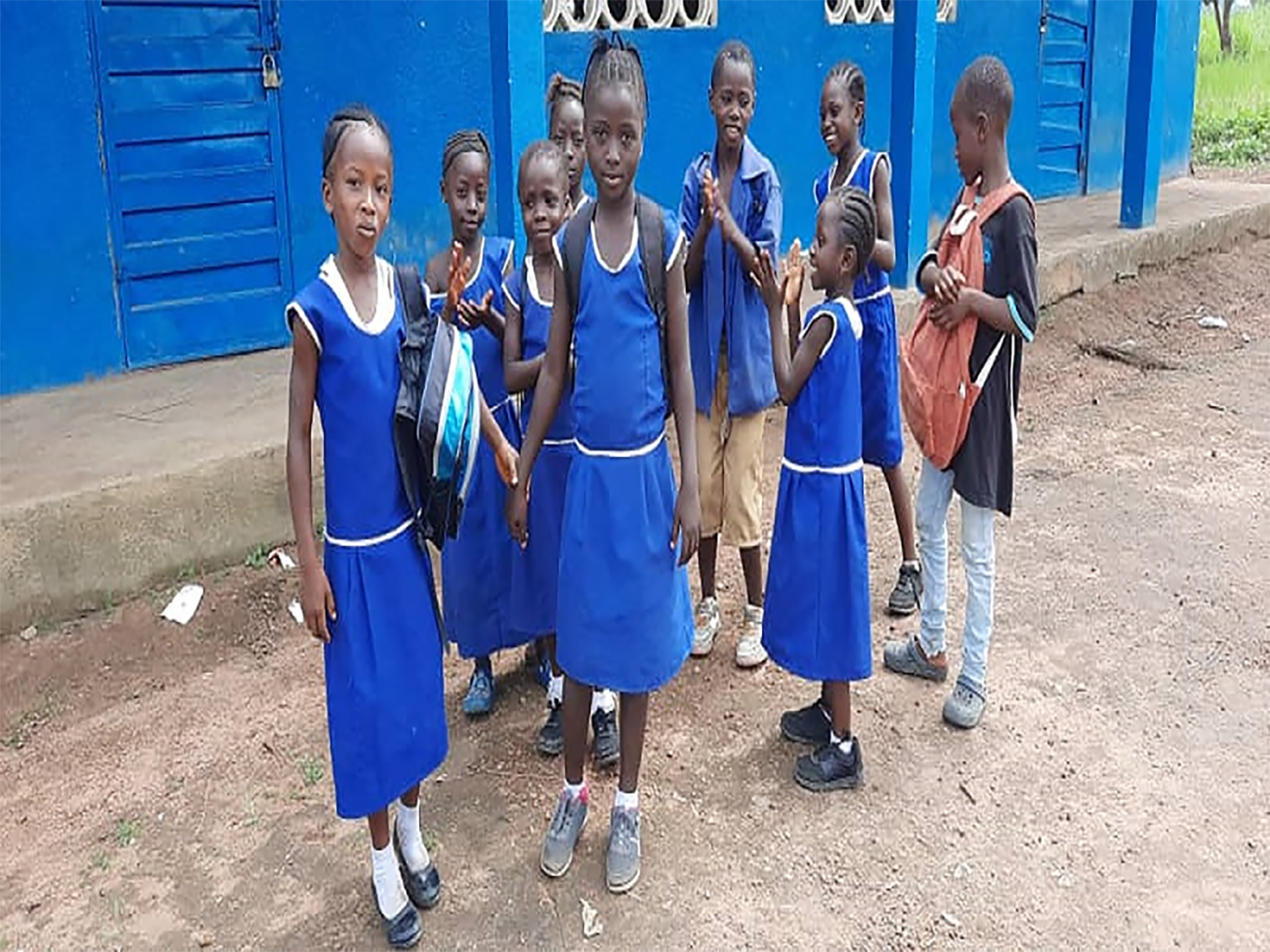
Sierra Leone
Total Child Sponsors: 1,045
Characteristics
Sierra Leone is one of the poorest countries in the world and Sarwah community is facing many challenges, such as malnutrition, a weak health system, child abuse and absence of child protection systems.
Sarwah area programme responded to this by focusing on Health, Education and Child Protection interventions. Activities of 6 children’s clubs targeting 156 children strengthened them in identifying abusive relationships and dangerous situations. The area programme increased the financial resilience of 25 savings and credit cooperative societies and their 625 members, mostly women, through training in basic financial literacy, benefiting 603 children by enabling them to pay their school fees and medical bills and to buy food and other basic needs. To improve reading skills, 90 girls and 60 boys attended reading clubs and together with distributing reading and print-rich material to schools, children in the community were supported in improving their reading skills.
Other help
The programme targeted 58,482 community members with health activities such as improving the knowledge of pregnant women about the importance of antenatal care and diversified nutrition.
638 gained access to a diversified diet, and 392 care givers were able to prepare nutrient-dense meals at home. In Suduku community a new mechanised borehole, powered by solar energy, was drilled and water points installed, increasing sanitation and hygiene for 7,685 community members and 14,627 patients of the nearby health facility.
Future plans
In 2023, just like in 2022, the Sarwah Area Programme will focus on health, education and child abuse interventions.
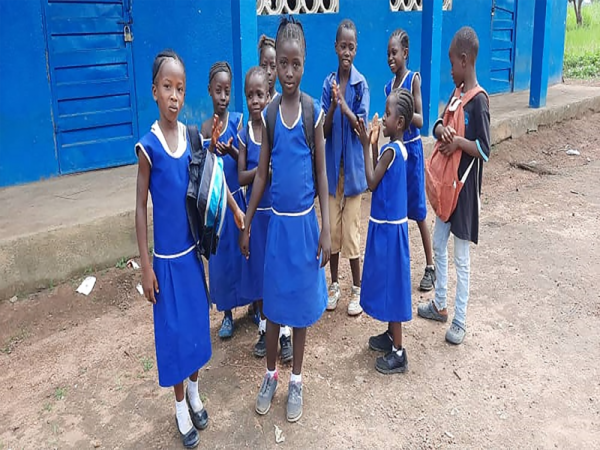
Theresa, a 7-year-old girl is the third child of her parents. She has 5 siblings and did not have the opportunity to go to school because of her parents’ belief that schools are for boys and not for girls.
During one of the awareness meetings regarding Sierra Leone’s radical inclusion policy, Theresa’s father learned that girls’ education contributes to more stable, resilient communities that give all individuals, including boys and men, the opportunity to fulfil their potential.
Today Theresa is attending school and has the dream of becoming a lawyer so that she can always defend her people.
Theresa’s father has guaranteed to support her education up to university level. “I am ready to support my child’s education to realise her dream of becoming a lawyer” Theresa’s father remarked.

Uganda
Total Child Sponsors: 2,389
Characteristics
As a means of recovery from the two years of Covid-19 lockdown, there were various activities and information campaigns for children to let them know about how to protect themselves, transformational skills on prevention and response to harmful social norms. This resulted in a significant reduction in child marriage and fewer adolescents reporting physical violence and/or psychological aggression.
The area programme focused on interventions and activities that provide an encouraging environment for children to attend and participate in learning and reading programmes. Through the Literacy Improvement Project (LIP), 48.0% of children in grade 3 attained at least a minimum level in reading, higher than the 36.8% national average. Additionally, the proportion of children who had access to reading materials at home remained stable (83%).
The area programme continued to strengthen efforts preventing the spread of Covid-19 in the community by working with the district government to support community sensitisation initiatives and awareness creation. As a result, 58 community village meetings were held reaching 830 community members.
Other help
262 children that were identified with medical and psychosocial issues due to the Covid-19 lockdown were supported with food, medical and psychosocial support.
Future plans
Kiyabigambire area programme will continue to focus on supporting the communities through education and child protection interventions in FY23.
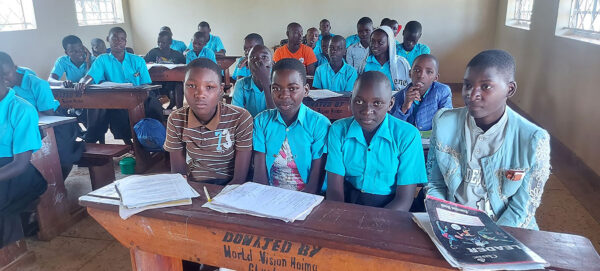
Patricia (11) was the first child born in her
family. She is in primary school and lives with her grandmother Norah.
“Before the World Vision intervention, life at school was miserable. I never liked going to school because my classroom was dusty and whenever it threatened to rain they would send us back home and lessons were postponed. Our classrooms would leak.”
The community was concerned about the
sorry state of the school and started to raise
this issue, lobbying for support.
“I am thankful to World Vision for building a new beautiful classroom block for us. I and my friends are no longer worried about our uniforms getting dirty, I no longer dreaded going to school and I am sure my dream of becoming a nurse will be fulfilled.
Many other children joined school and our teachers are friendly. The learning environment has greatly improved and many girls are determined to realise their dreams.”

Tanzania
Total Child Sponsors: 732
Characteristics
FY22 was the first year of Idumbala area programme and it addressed child protection and child health, specifically maternal health and nutrition. The area programme staff was able to reach 6 malnourished children who then were treated and gained weight. 18 nutrition groups in 9 villages were formed where women share nutrition behaviours with their neighbours to improve the nutrition status of young children (under 5), old women, pregnant women and lactating mothers.
The area programme worked on raising awareness on child abuse resulting in the reporting of abuse cases where previously none had been reported. Through an essay competition in primary school, children became agents of change, arguing for an end to early pregnancy and childhood marriage before primary school teachers, ward education officers and government leaders.
Idumbala area programme trained 18 water committee members, strengthening the resilience of the communities in water conservation and stressing the importance of water preservation.
Other help
15 savings and credit cooperative societies have been formed. About 270 members have been engaging in these groups in which they participate in saving and taking out loans for starting small businesses.
Future plans
Idumbala area programme will continue to focus its support of the communities in the area through an integrated WASH, Health & Nutrition programme.
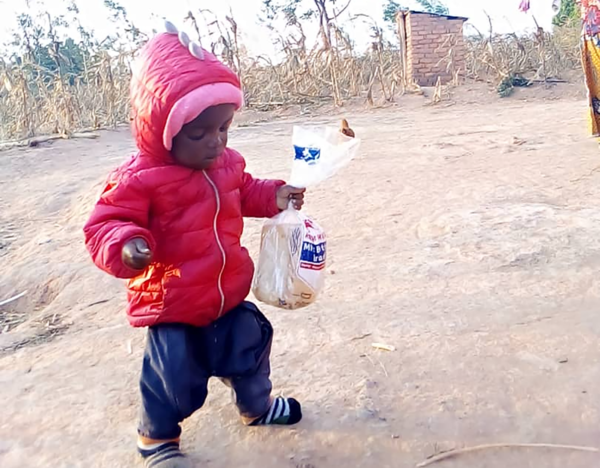
Yustin is a boy with a twin sister Yustina (2 years). Yustin was severely malnourished unlike Yustina. When Yustin turned 2, he could still not walk. “I still breastfed him because he could not eat anything, he had no appetite at all” added Yustin’s mother.
During the baseline survey the area programme staff together with health workers visited the family. They advised to take Yustin to the hospital as it was feared that his life was in danger. Here, Yustin was treated for severe malnutrition and was given nutritional supplements.
“I can’t believe my boy can eat and drink cow milk with joy” said his father standing beside the hospital bed with a wide smile looking at Yustin who is holding a cup of milk drinking.
Yustin was hospitalised for a week but his health has much improved. He can walk now and has gained weight.
Yustin’s mother: “I give thanks to God and World Vision for such a good heart to help those who are in need”.
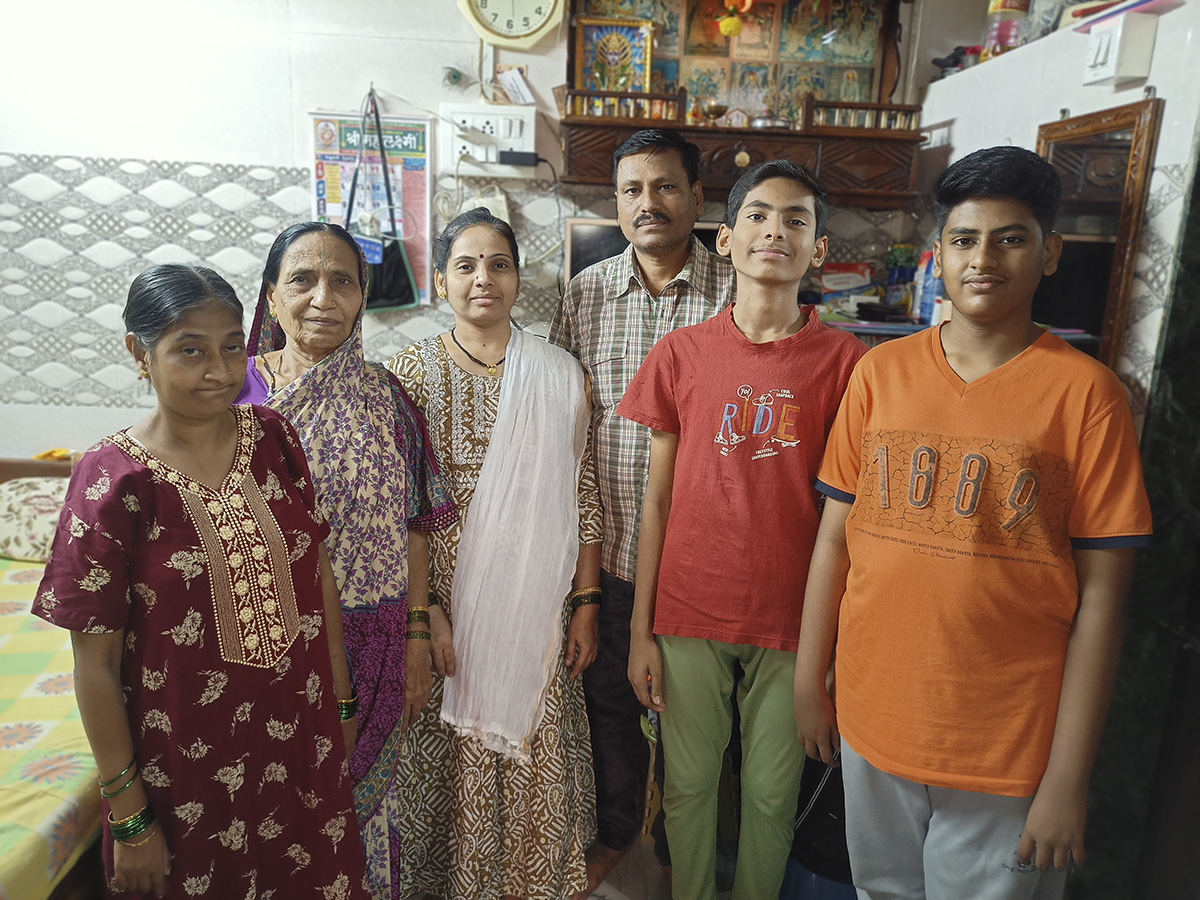
India
Total Child Sponsors: 2,229
Characteristics
Poverty continues to be one of the biggest reasons of vulnerability in Dharavi area programme. Families living in slums were the ones who were severely affected by the Covid-19 pandemic, many losing their jobs and income. Through the Livelihood Recovery project financial assistance was provided to 1,371 families and 246 families received livelihood assistance to start, or restart, their own business. 237 youths from different communities were provided with different skills training courses, strengthening their earning power. 25,039 community members were reached through awareness campaigns on accessing government welfare schemes.
1,311 children were enrolled in Unlock Literacy classes and Remedial Education Centres. Most children are showing improvement and 112 children graduated in maths and language. 3,692 children received writing and education materials and school fees were paid for 156 children, thus enabling them to attend school and continue their education.
Other help
• 100% of the Registered Children received a birth certificate.
• 10 families received emergency rations support.
• 4 children received financial assistance for medical support.
Future plans
For its last 3 years Dharavi area programme will continue to focus on Education and Livelihood Recovery.
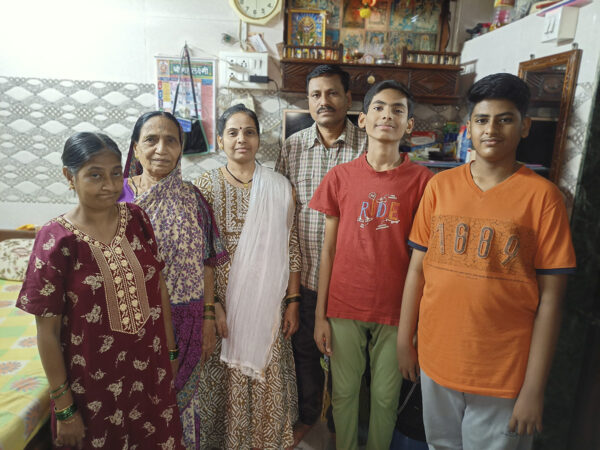
Yash is 14 years old and lives with his parents and 2 siblings in Dharavi, Mumbai. He became a sponsored child in 2018.
“The journey with World Vision has been no less than a miracle for me and my family.
World Vision is like an elder brother who not only guides us through counsel but also walks with us through the hard times. World Vision not only encouraged my parents to let us continue our studies but also supported by paying our school fees. What I love about World Vision is that they not only provided support to my family but also helped us to fight our daily battles.
World Vision came to our aid and provided cash to restart my father’s business. Today my father has employed two more people. Our standard of living has improved, and we have become capable of supporting others in our community. It makes me feel happy to see the smiling faces of my parents.
Thank you, World Vision, for making us capable of succeeding.”
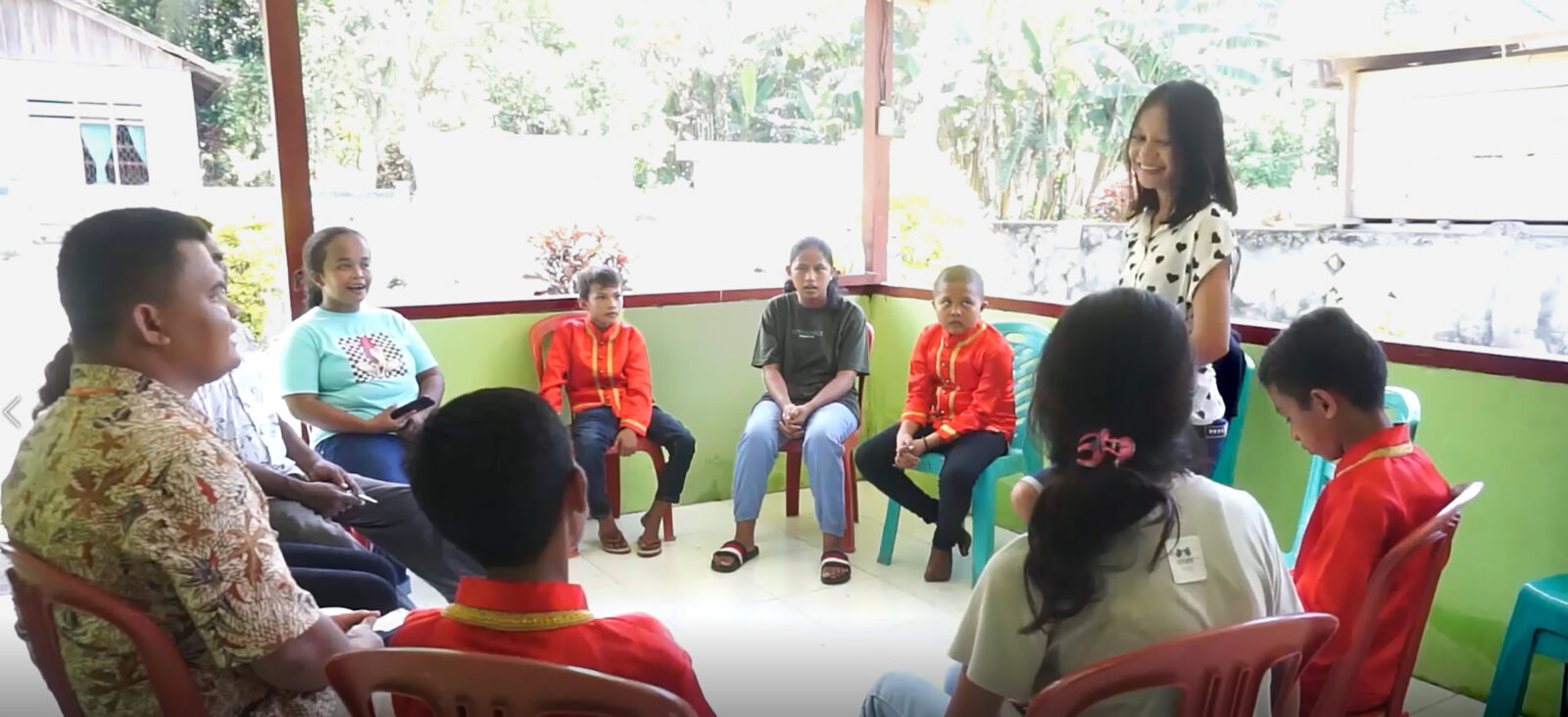
Indonesia, North Halmahera
Total Child Sponsors: 362
Characteristics
North Halmahera area programme came to an end in FY22. During the transition period the focus was on community engagement, and livelihood and resilience. The programme has been active since 2008: it covered 7 districts with 17 villages, with 14,463 direct participants.
Household capacities were strengthened through supporting income generating activities
such as producing coconut oil. 41 youths from the Child Forum in 2 villages were trained in agricultural business opportunities. Furthermore, savings and credit cooperative societies strengthened financial literacy of the communities. Families are better equipped to manage incomes, ensure savings, and access loans. Women experienced leadership and can make active decisions on household financial management. 73.77% of parents have increased their income and can provide for the education fees and basic needs of their children.
Responding to the view that child marriage is still normal, community and faith leaders committed to an integrity pact to prevent child marriage in the West Kao District.
Other help
An earthquake hit 10 villages around North Halmahera area programme (7 villages within the area programme with 283 Registered Children) in January 2022. The area programme supported 725 children and 560 adults in these villages through benefits from the emergency response programm.
Future plans
This project ended in 2022.
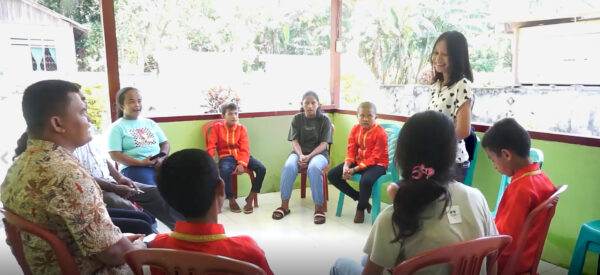
Novira (16) is grateful to be born in such a beautiful place. Her village is located between beaches, a lake and hills. She lives with her parents who farm their own gardens, which is the main source of income for the family. Novira was registered when she was 10 years old and is the head of the Child Forum in her village as well as a member of the Child Forum at district level.
“The active involvement of World Vision staff in our village has made our village more colourful. Colour was added by activities ranging from the processing of coconut derivative products to handicrafts. Child protection socialisation activities are always conveyed to us and all communities in our village. This is one of the reasons I was able to be actively involved in the children’s forums and in the end, I was appointed the chair of the children’s forum.
Together with all the people, we make sure that every child can get the most out of life.“
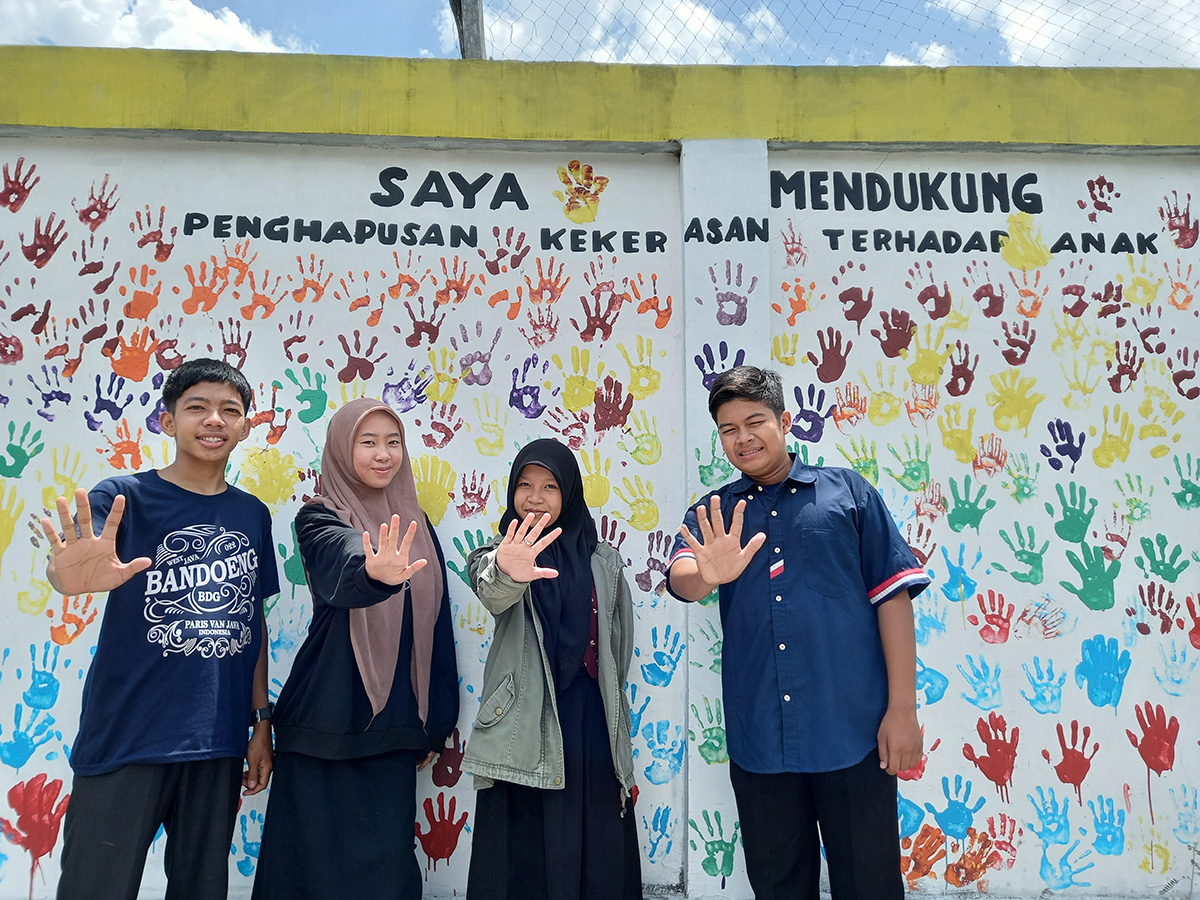
Indonesia, Sambas
Total Child Sponsors: 853
Characteristics
Sambas area programme focused on community engagement and child protection. Communication between parents and children positively changed and family members have more understanding for each other because of training in positive parenting behaviour.
The area programme supported 6 Child Forums through giving English courses and writing training resulting in the Child Forum publishing its first book. Through the child-led research on child labour, Child Forums enabled children to make recommendations to different stakeholders, making them active agents of change.
With the support of Sambas area programme the Badan Permusyawaratan Desa, a body of village community representatives, produced child protection regulations. Sambas area programme was also instrumental in putting forward a new policy at subdistrict level against child abuse.
Other help
• In addressing the Covid-19 pandemic, Sambas area programme distributed 30 bottles of hand washing, 10 digital weighing scales and 10 cans of disinfectant to village governments.
• The area programme facilitated the construction of a green school library building for 117 students in Tanjung.
Future plans
In its final year Sambas area programme will focus on successfully completing the transition of the programme.
 Pahmi (17), became a registered child in the 2nd grade of primary school. He is the leader of his village children’s forum and the 2nd joint leader in the county children’s forum. “Because I participated in the activities, I have increased my knowledge with child cadres in the village.
Pahmi (17), became a registered child in the 2nd grade of primary school. He is the leader of his village children’s forum and the 2nd joint leader in the county children’s forum. “Because I participated in the activities, I have increased my knowledge with child cadres in the village.
My confidence increased and I was involved
in child-led research and became one of
the authors of the book “Saya Remaja”.
The children’s forum programme in our village is an example of mutual cooperation to clean up places of worship and other public facilities,
I feel happy because I can do a good thing for
my village.
I have a change of purpose because my confidence has increased, I feel proud that my voice is being heard and my writing can be read by many people, highlighting children’s issues to the government.
I thank the sponsors who have supported
me through this programme. I hope that teenagers everywhere know about children’s issues and that it is important to voice them. Don’t be afraid.”
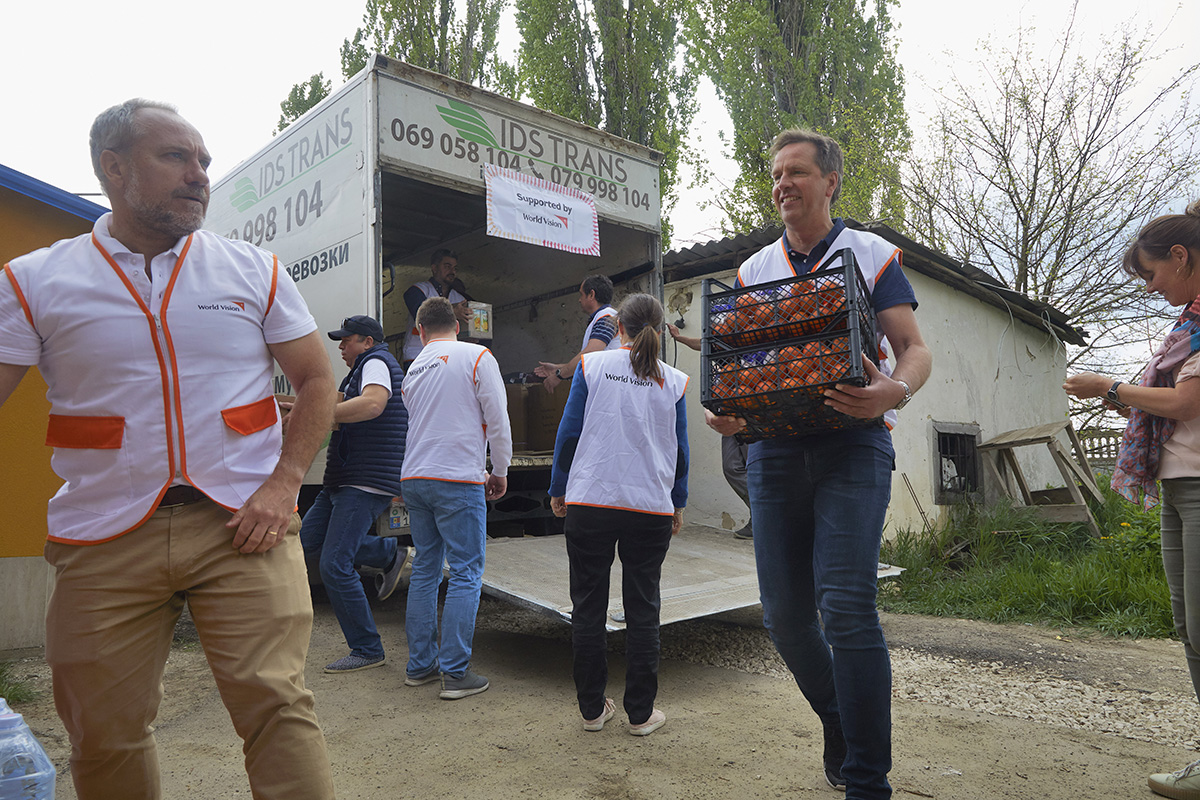
Ukraine response
Life-saving food distributions
Late February 2022, the world was shaken by the sudden increase of conflict in Ukraine. This soon caused the largest displacement of people in Europe since World War ll, causing over 7.9 million people to seek refuge in other European countries, and some 6.5 million people displaced internally. At least 17.7 million people in Ukraine have been in need of humanitarian aid and protection. Thanks to its regional presence, World Vision was able to respond within days when the conflict escalated.
Not least thanks to the generous support to Giro555, of which World Vision Nederland is one of the 11 organisations, it was able to effect large-scale and life-saving food distributions. 71% of the beneficiaries reached were women and children. With the support of the Dutch public, also large-scale cash support was provided to 10,301 households affected by conflict in Ukraine and refugees in Romania, so they were able to meet their immediate and most urgent needs. Emergency relief like cash support is continuing into 2023.
“In the past months we supported these people to get through the winter
in a safe and humane way. This is still a tough challenge. But, with
the knowledge, expertise and local networks of partners, I am confident that we can play a significant role in this, too.”CEO World Vision Nederland, Marco van der Graaf
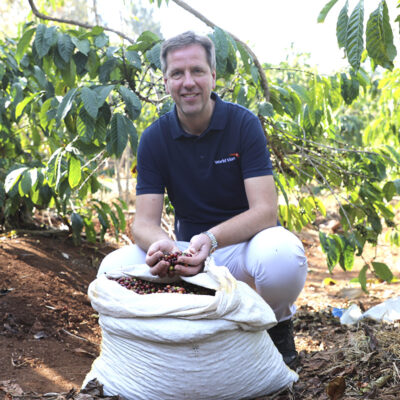
Multi-purpose cash assistance
In 2022, also with funding from Giro555, World Vision and its partners Arms of Mercy and Mission Eurasia were able to reach 140,580 beneficiaries in 21 Ukrainian oblasts with food kits, addressing the acute shortages of food at household level owing to disruption in markets, production and supply chains, inaccessibility of farms due to displacement or land mines, and lack of funds.
On top of that, with the support of the Dutch public, World Vision was able to reach 2,700 households in Zhytomyr Oblast with multi-purpose cash assistance (MPCA). Beneficiaries were mainly residents of the oblast affected by the Russian offensive on Kyiv; most had lost their jobs or were dependent on relatives in other countries or family members who had been conscripted. Post-distribution monitoring showed that most beneficiaries used the money to buy food (86%), medicines (51%) and utilities (48%).
Years of cooperation and immediate assistance
World Vision has been present in Romania for more than 30 years, and was able to provide emergency relief in the early days after the conflict escalated. Despite its regional presence, World Vision only started working in Ukraine in 2022. Offices were set up in Kyiv, Lviv, Dnipro and Chernivtsi.
Overall, World Vision responds to the devastating impact of the Ukraine conflict in Ukraine, Romania, Moldova and Georgia by providing life-saving relief assistance, protection, mental health and psychosocial and educational services. Most of World Vision’s work is done through partners. This builds on our commitment to localisation, particularly in Ukraine where we will focus more on building partner capacity and empowering those partners to become actors of community development. We will invest in empowering civil actors, including local social protection structures of countries in which we are active.
Providing dignity
In Romania, thanks to donations from Giro555, World Vision was able to meet the basic needs of mothers and children who had recently arrived in the country. In collaboration with the municipal council, we set up a coordination centre in the Romanian capital, Bucharest, where hundreds of new refugees from Ukraine reported daily for first aid and support. Between March and May 2022, 22,000 people were given access to food aid, essential supplies such as hygiene products and small-scale children’s activities in Romexpo shelters in Bucharest.
9,304 beneficiaries were identified and enrolled for cash assistance in Romania, as markets are functioning well there. This gives Ukrainian refugees a sense of dignity because it gives freedom of choice to spend the money where they need it most at the time. Out of these, 7,601 beneficiaries received cash assistance in FY22 and both cash distributions and access to registration for new beneficiaries will continue into FY23. The cash they receive ranges from unrestricted cash to the most vulnerable to enable them to meet their immediate basic needs and allows them to focus on purchasing essential items, to restricted cash for child protection to families with children up to the age of 17.
Two World Vision Nederland staff members were temporarily deployed to the Ukraine Crisis Response team to speed up the emergency response in 2022, following challenges for regular World Vision disaster management team expansion due to visa restrictions. They are Maartje Verkerk, in the capacity of MEAL Officer who, among other things, was involved in data collection and Eveline van Vliet, Programme Officer, who was involved in partnering and acquisition.
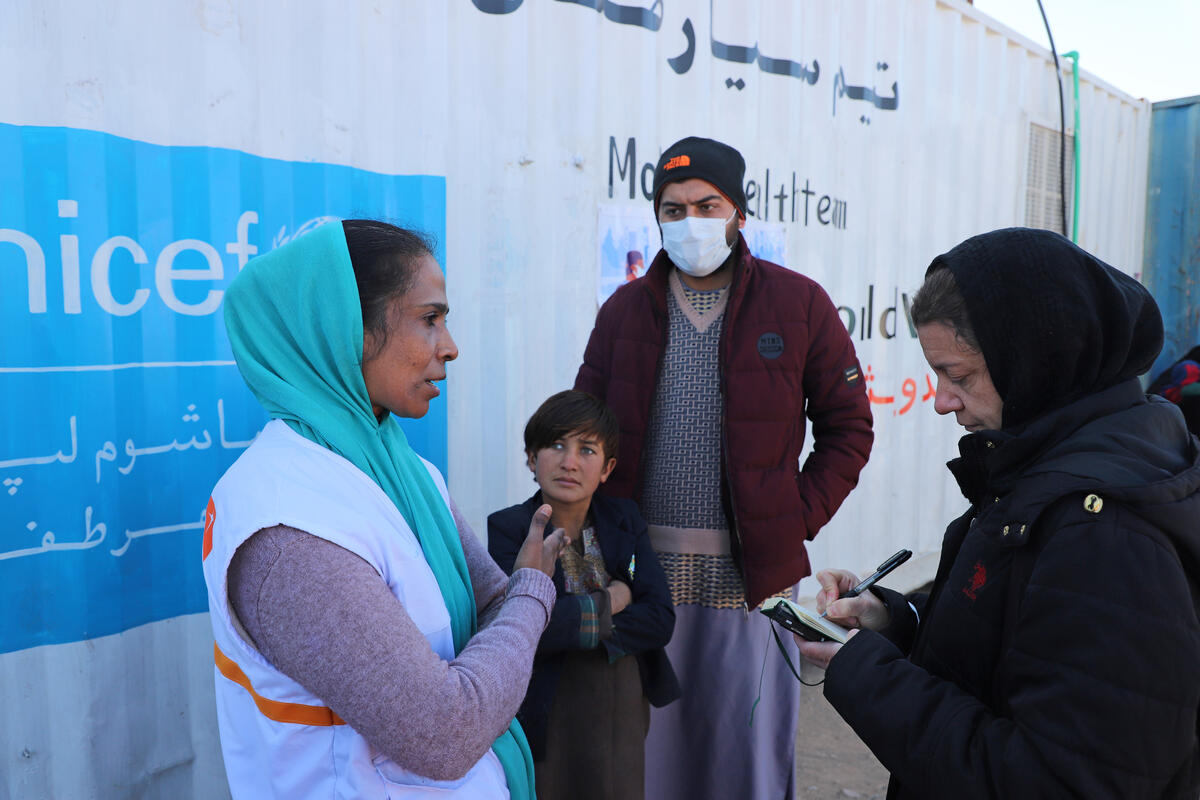
Asuntha Charles
country director World Vision Afghanistan
This summer, it was precisely twelve months ago that foreign troops withdrew from Afghanistan. Iconic images of a desperate Afghan man who clung on to a wing of the very last plane leaving Kabul airport were broadcast all over the world. The cameras that captured this global news have long since been packed up. But the misery in the country has become anything but better over the last year. Asuntha Charles, the National Director for World Vision Afghanistan, has great concerns about the hunger crisis that is developing.
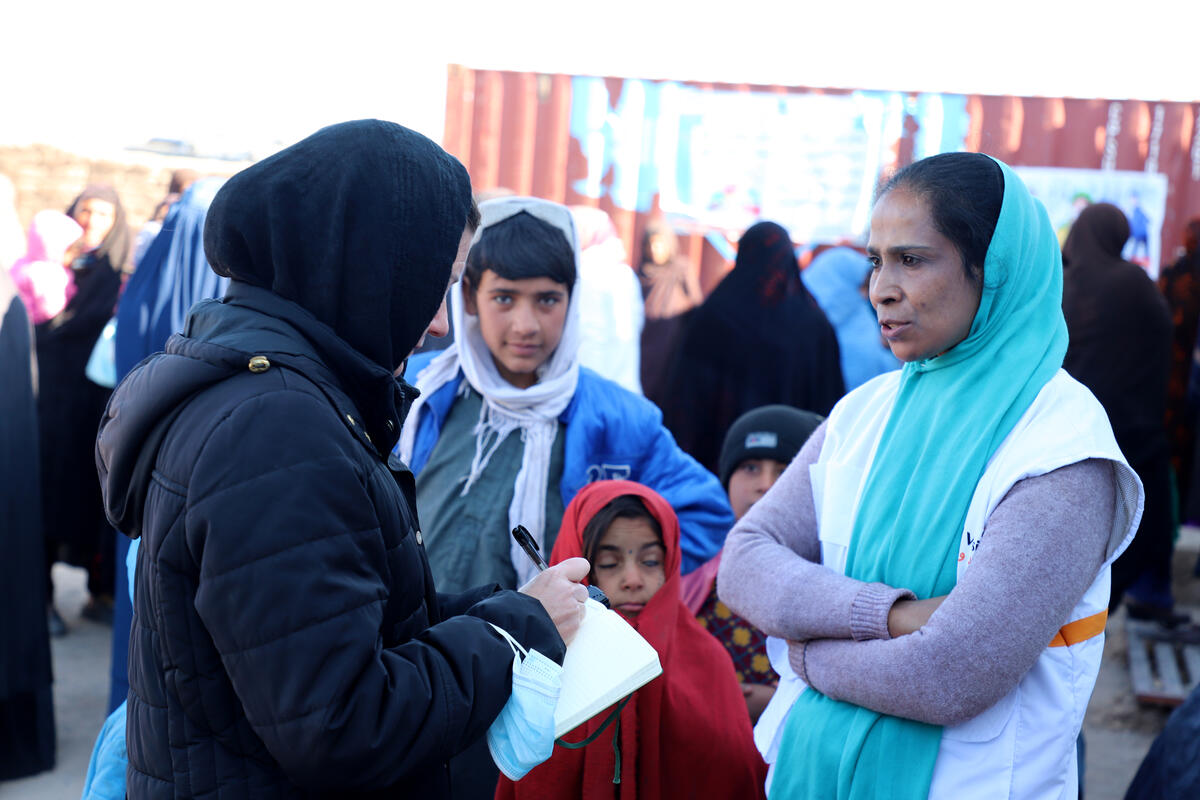
“The departure of the Western troops has especially affected the Afghan children. At times, I really lose sleep over that. There are children dying from hunger. Between January and March this year, 13,700 premature babies died, a direct result of malnutrition. Babies and toddlers shivering from hunger, for example, are images that are etched in my memory. There simply is not enough food. The economy has collapsed totally after the evacuation of the Western troops. Over 90% of the population is suffering from hunger; that is the bitter reality in Afghanistan in the year 2022.”
“In the past months we supported these people to get through the winter
in a safe and humane way. This is still a tough challenge. But, with
the knowledge, expertise and local networks of partners, I am confident that we can play a significant role in this, too.”Asuntha Charles, country director World Vision Afghanistan
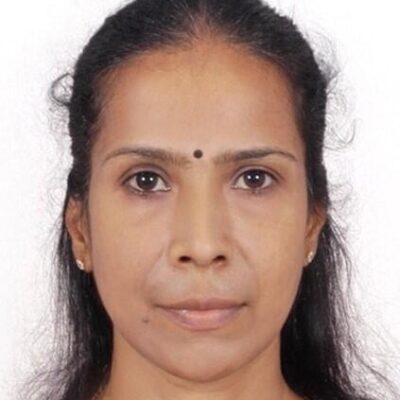
The whole world witnessed the chaotic evacuation via Kabul airport in August 2021. What do you recall from that day?
“Chaos and fear were everywhere. Afghans became infected with panic; it was intense and tangible all over the place. People were really worried about their lives, their future.” Asuntha personally witnessed the degrading situation at Kabul airport. She had a decision to make: stay or leave. Her phone was constantly ringing. Security teams of the Indian Embassy and World Vision were contacting her: whether or not she wanted to leave, and if so, when? However, the night before the Taliban took over the country, Asuntha was on her own in her apartment. In this quiet place, she was looking for her Creator. In all peace, she made her decision. “I wanted to stay; being the director for an organisation with 700 staff members, how could I ever stay true to our mission if I left at the most difficult period? It is especially at this time that the children in Afghanistan need help.
I do not want to abandon them now.”
Is there one particular child that has touched you?
“World Vision has been active in this country for more than twenty years. It is my decision to look at Afghanistan through the eyes of a child. Every child has dreams. How could I abandon the children in Afghanistan and discontinue our projects when things get tough? Eight years ago, I started working in this country. Meeting Fatima, a 10-year-old Afghan girl changed my life. When I asked her about her future dream, she answered: ‘I want to become the first female president of Afghanistan.’ I asked her: ‘Why?’ Her answer was: ‘Because I want peace for this country.’ Fatima is the reason for me to stay now. For her and all the other children in Afghanistan. They have the right to a future.”
What is the current situation in Afghanistan?
“18.5 million Afghans find themselves in a humanitarian crisis. Hunger is a major problem. After August last year, the economy collapsed. More than 500,000 jobs were lost. Behind every worker is a family with often four or five mouths to feed. Three million Afghan children are seriously undernourished. One million children are on the verge of death. Hunger is omnipresent in the country. Wherever I go in Afghanistan, I meet parents who sell their daughters for money. The price of a girl is about EUR 2,000. Selling your daughter is a heart-wrenching decision. What springs to mind is a mother with five children in a refugee camp in Herat. When I met her, she was in tears and in despair. Out of pure desperation, her husband had just decided to sell Fatima, their eldest daughter, she was only eight years old, to get married and work as a slave. With the money earned, the intensely sad father hoped to be able to give their other four children at least enough to eat. So tragic. This is the account of just one child, but it is the fate of many children, in particular girls. They literally pay with their lives for hunger. How can World Vision create a future for these children, if there is no food and schools are closed? That is the challenge I am facing, as a director.”
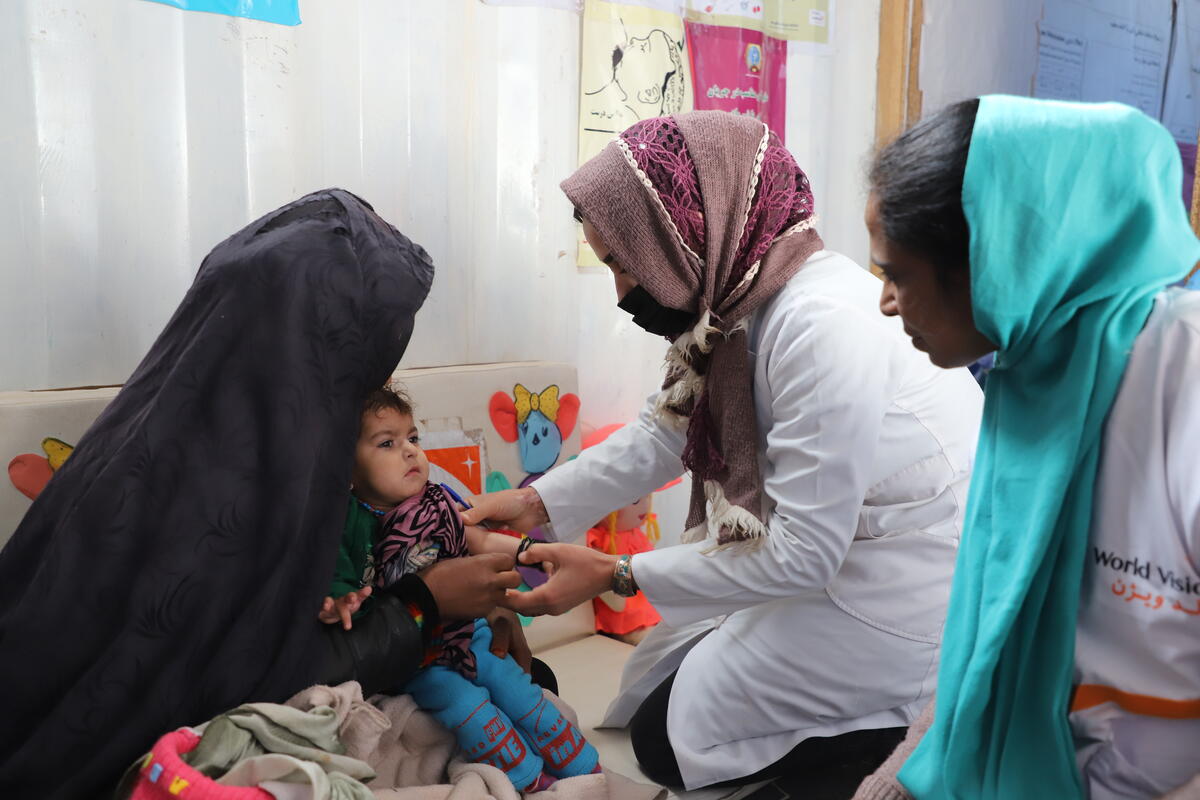
Is it difficult to work in Afghanistan, being a woman?
“In the past two decades, we have seen at World Vision how women can make a valuable contribution to any part of society. That is why we do not want to compromise in this respect. After the Taliban had taken power in the country, I made a strategic decision: I am going to stay. I want to show that Afghan women and young girls are entitled to live with dignity. I want the dream of every child in this country to materialise. That is why my commitment remains firm. That is what I want to contribute to.”
What do you want to achieve with World Vision in Afghanistan?
“We want to be the changemakers in this country, which is torn by war and hunger. We are committed to leaving behind a community that can survive on its own. That is our aim in Afghanistan. We do so by creating space for families. So that parents can work and be treated fairly, and can earn their own income. If families are stable and have enough food, Fatima’s dream really has a chance of becoming reality.”
Want to hear more about Asuntha? Check the video
The situation in Afghanistan remains one of the most serious humanitarian crises in the world. The consequences of 3 years of drought, a deteriorating economic situation and the aftermath of decades of conflict and recurring natural disasters has brought the country to the brink of collapse. Since August 2021, the living conditions of many Afghans have become even more precarious due to high levels of food insecurity, Covid-19 and the Taliban’s takeover of power. 64% of the Afghan population is negatively affected by drought, while 46% has insufficient food and 4 million women and children are malnourished. In total, two-thirds of the Afghan population (28.3 M) is currently dependent on emergency aid.
Despite the challenging circumstances, World Vision has continued to support the most vulnerable families in Afghanistan. As a member of the Afghanistan Joint Response of the Dutch Relief Alliance (DRA), World Vision provides food aid, health care, water and sanitation in Herat province. In addition, training courses have been organised for farmers to grow grain and irrigate their land. The most vulnerable families receive money, which they can spend on the foodstuffs that are most important to them. In this project, we will continue to collaborate with the DRA in 2023.
World Vision is also active in the provinces of Ghor and Badghis, where many people feel the effects of the drought and deteriorating economy on a daily basis. In both provinces, World Vision has organised food distributions to alleviate the food shortage of the poorest. World Vision Nederland contributed to this project, which was organised in collaboration with the World Food Programme. In total, more than 200,000 people received food aid.
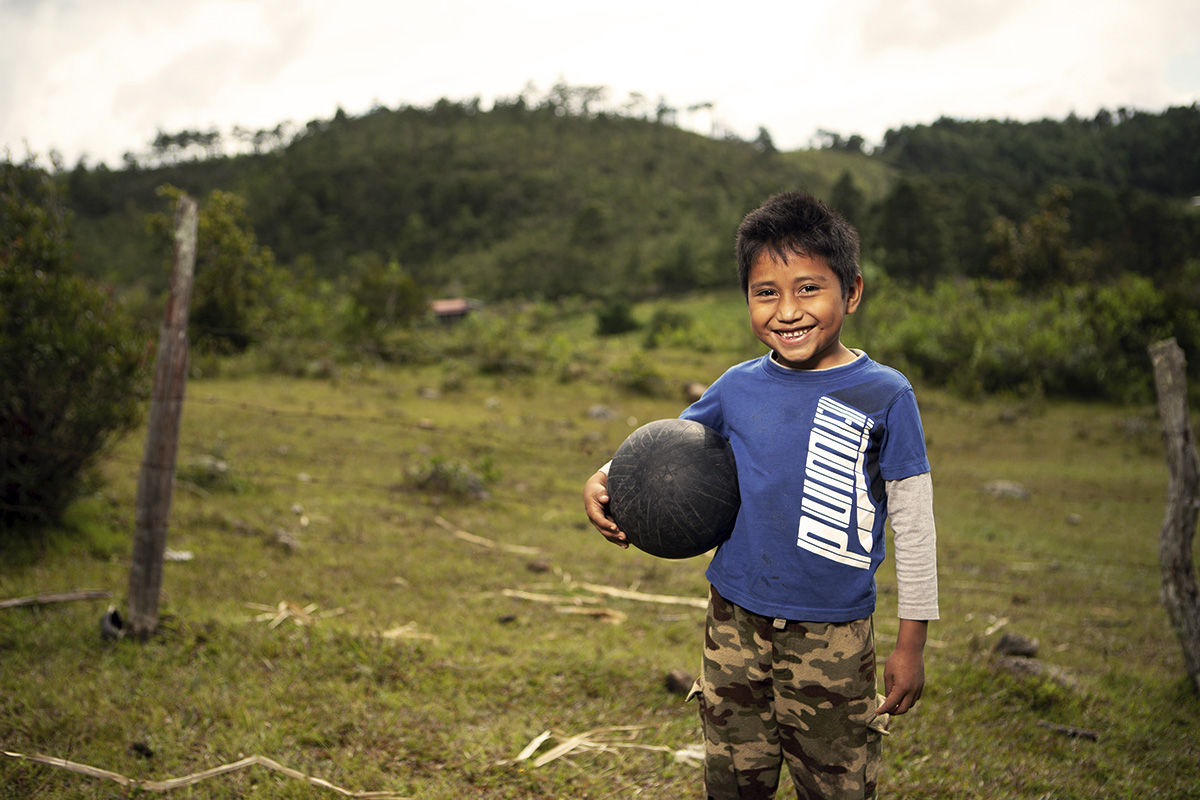
Communication
We want to see the joy of a life that has changed. Not only for the most vulnerable children that we work for. But also for our donors, child sponsors, ambassadors and volunteers in the Netherlands who are enabling us to achieve this together. The Fundraising and Communications Department informs, inspires and activates people, so that we touch hearts, and make and keep them involved. This past year, we were able to meet people in person again. We are grateful for the growing number of people that help us realise our mission.
Communication
In 2022, the aim of World Vision was to touch the hearts of 35,000 donors and other interested parties. Last year we realised a substantial growth to almost 28,000 hearts. Through our contact strategy we introduce people to World Vision and make them an offer that suits them. Moreover, we try to inspire existing donors and child sponsors and show them what the impact of their contributions is.
At the start of 2022, we launched our new positioning strategy and a so-called ‘identity passport’. That is a document stating in brief where we come from, what we want to achieve, what makes World Vision unique and who we want to be there for, enabling us to target our communications better. Plus, it is clearer for people what our organisation does. In 2023, we will translate the positioning strategy into appealing branding and a target audience policy.
In our work, vulnerable children are at the heart of what we do. In our communications, too, we use the children’s own stories. We show donors the impact of their contributions and how they can make a difference to the lives of children.
We share those stories through our magazine, letters and email newsletters. Our website and social media are becoming more and more important. This year, in the post-Covid-19 period, we were again able to be present at Dutch events such as ‘Opwekking’. Just before the summer, we launched our own event: ‘I Have A Dream’, and toured the country. We also told the stories via the media, for example further to reports published by World Vision, the visits of inspiring colleagues such as Asuntha Charles (page 37) and Tony Rinaudo. In addition, we organised several media trips, for example to Rwanda with Maurits Chabot in June.
Means of communication
In 2022, we published two issues of our magazine, which was received by some 17,000 sponsors, donors, and other interested parties. In it, we highlighted the programmes in various countries including South Sudan, Angola and the new sponsor programme in Tanzania.
Well over 70,000 people received our regular digital newsletter in 2022. The number of followers on social media is gradually growing. Facebook showed a growth in the number of followers by more than 300 to 11,706. The Instagram followers increased by 15% to 2,357, while we now have 1,137 LinkedIn followers (+30%). The number of followers on Twitter hardly changed.
For child sponsors, we developed several specific materials to inform them of the child they sponsor and the community in which they live. Sponsors received the annual update on their sponsor child in 2022, as well as seasons’ greetings, and the option to send seasons’ greetings to the child. Around the birthday of their sponsor child, they received an email as well as a video message from their sponsor child. To make it easier for sponsors to communicate with their sponsor child, we worked on an app in 2022, which will be launched in 2023.
Nanning-Jan Honingh,
Ecologist
In daily life Nanning-Jan Honingh is an ecologist and advisor on ecological issues. He is passionate about restoring the landscape and found his match in Tony Rinaudo of World Vision Australia. One of Rinaudo’s sayings is: ‘If you give nature a chance, it will heal itself.’
Nanning-Jan Honingh saw that most Dutch farmers fell into the trap of mass production. Including Christian farmers, he says. “I know it has to do with the interpretation of Genesis where it says that ‘we will rule over the earth’ and feeding the world is part of that. But the pure arrogance of ‘we are going to feed the world’ irritates me. As if you have everything under control as a human being. Fortunately, World Vision does not ‘save’ the world but helps people towards self-suffiency.
A while ago I heard another explanation for the word ‘rule’. It could also mean ‘making a path’. The interesting thing is that when you look at Tony’s method, Farmed Managed Natural Regeneration (FMNR), you will see pathways everywhere between the trees. To me he is the New Testament Boaz who not only produces for himself but for the whole community. Not only does he restore landscapes, but whole communities, their economy and agriculture. I think as a Christian we are called to preach the good news, but besides that we can do so much more like rebuilding the landscape.
“As Christians we are called to do much more!”
I have a piece of property myself and I try to farm based on the rules of the Old Testament. I was curious to see what the ‘Land of Milk and Honey’ would look like. I have been farming like that for the last fifteen years and I must say it is rather fruitful. I like that through FMNR, World Vision is working towards the future and restoring the land in anticipation of the renewal of all things, the entire world, mentioned in the book of Acts (3:21).
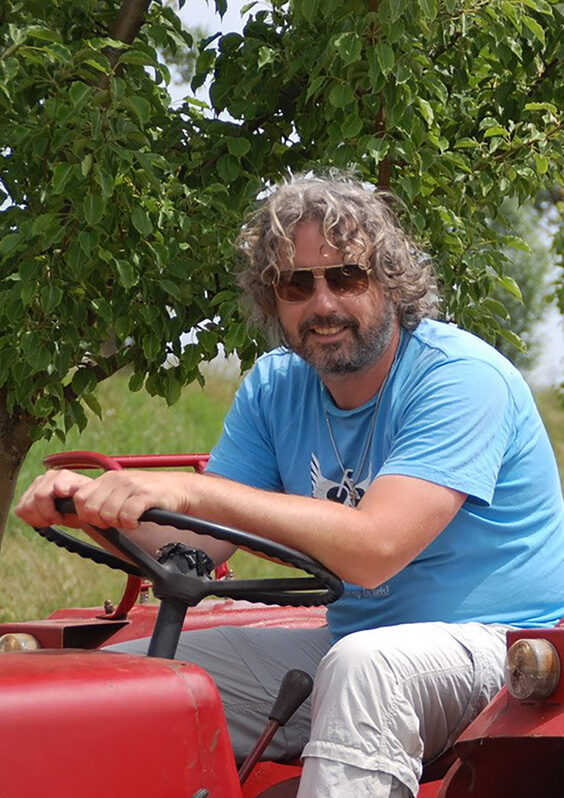
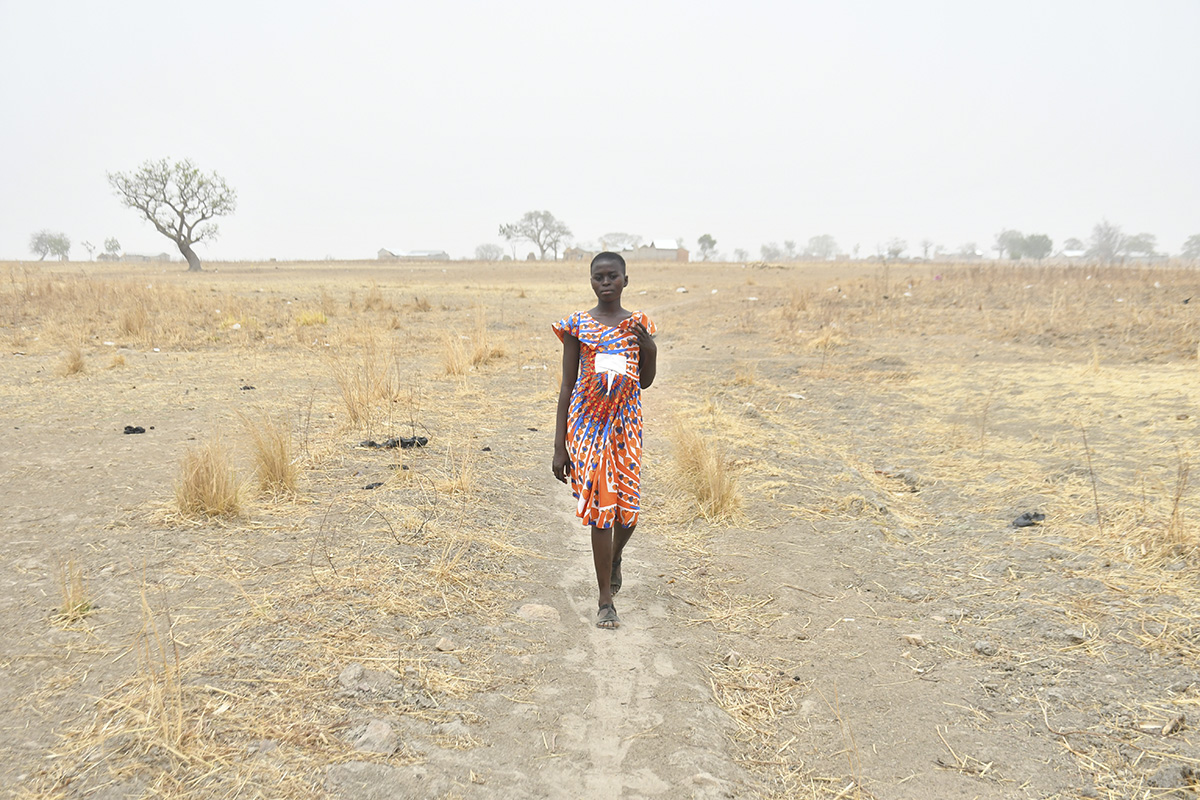
In the media
In order to increase our brand awareness we hired a press officer in 2022, who energetically got to work building a network and creating publicity. Farmer Managed Natural Regeneration or FMNR, a method developed by Tony Rinaudo to make the world greener, in particular received a lot of media attention, as did the visit of Asuntha Charles, the National Director for World Vision Afghanistan. Two press trips were organised in collaboration with EO, a Dutch broadcaster, one to Kenya and the other to Rwanda. The result is 4 mini documentaries broadcast in the programme EO Metterdaad and media attention around the documentary ‘Over de Kloof’ in which the peace building activities of World Vision Rwanda play a major role.
New website
In 2022, the new website of World Vision went live. Both in terms of looks and content, the website is consistent with our positioning strategy. And the website also offers more features for interaction with our supporters and other interested parties.
Lobbying & Advocacy
With support from Vereniging Prisma, a Dutch association of Christian development organisations, a Lobbying & Advocacy strategy was developed for World Vision, and a new staff member was hired to get working on this. The objective is to speak up for the most vulnerable children to politicians and policy makers in ‘The Hague’, the centre of power in the Netherlands. To date, we have achieved a number of great results.
Points of interest for our communications for 2023
- Branding and target audiences
In 2022, we translated our positioning strategy into clear branding and target audience policy. - More brand awareness
We want to increase our brand awareness to 35%. To that end, we are developing a communications and media (including social media) strategy. - Touching 35,000 hearts
In 2022 our aim was to involve 35,000 Dutch people in our work, which may take the form of financial support, child sponsorship or an order for a lead product.
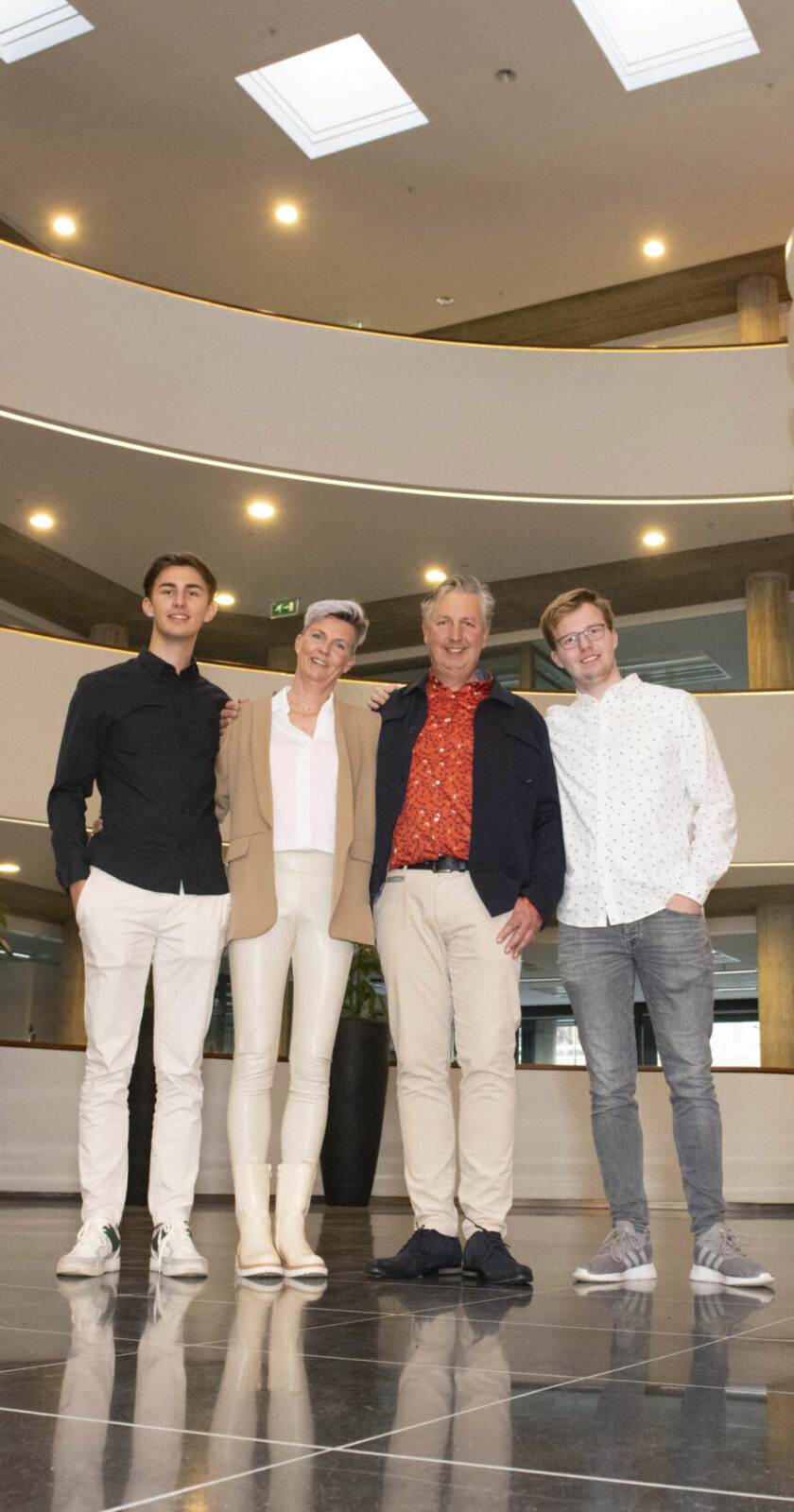
The Keizer-Koppelman family,
Private and business sponsor
We learnt about World Vision’s “Chosen” programme via social media. We think it is very special that the children are allowed to chose their sponsor. The moment we received the e-mail stating who had chosen us was indescribable.
They were Steven and Mecaiah from Sierra Leone, and the look in their eyes was uncertain. No doubt their lives will not be easy, but we hope that our contribution can help them get a step closer to making their dreams come true.
The fact that we can write each other also increases the level of involvement with the fortunes and misfortunes of these two boys. As it gave us such a good feeling, we also decided to provide financial support for 10 other children in their village through our company.
“They realise that they are privileged in the Netherlands.”
We also involve our sons – university student Rico (23) who lives on his own, and Carlos (19), still at home with us – in sponsoring the children in Sierra Leone. They realise that they are privileged in the Netherlands, and they like the concept of sponsorship; hopefully in another phase in their lives, they will join the “Chosen” programme too, and help less fortunate children somewhere in this world.
We can definitely recommend joining the “Chosen” programme. It feels very satisfying to be able to do something meaningful for a child living in a vulnerable environment and to hopefully help them make a better future for themselves. As a family, we want to thank World Vision for all the good work it does!
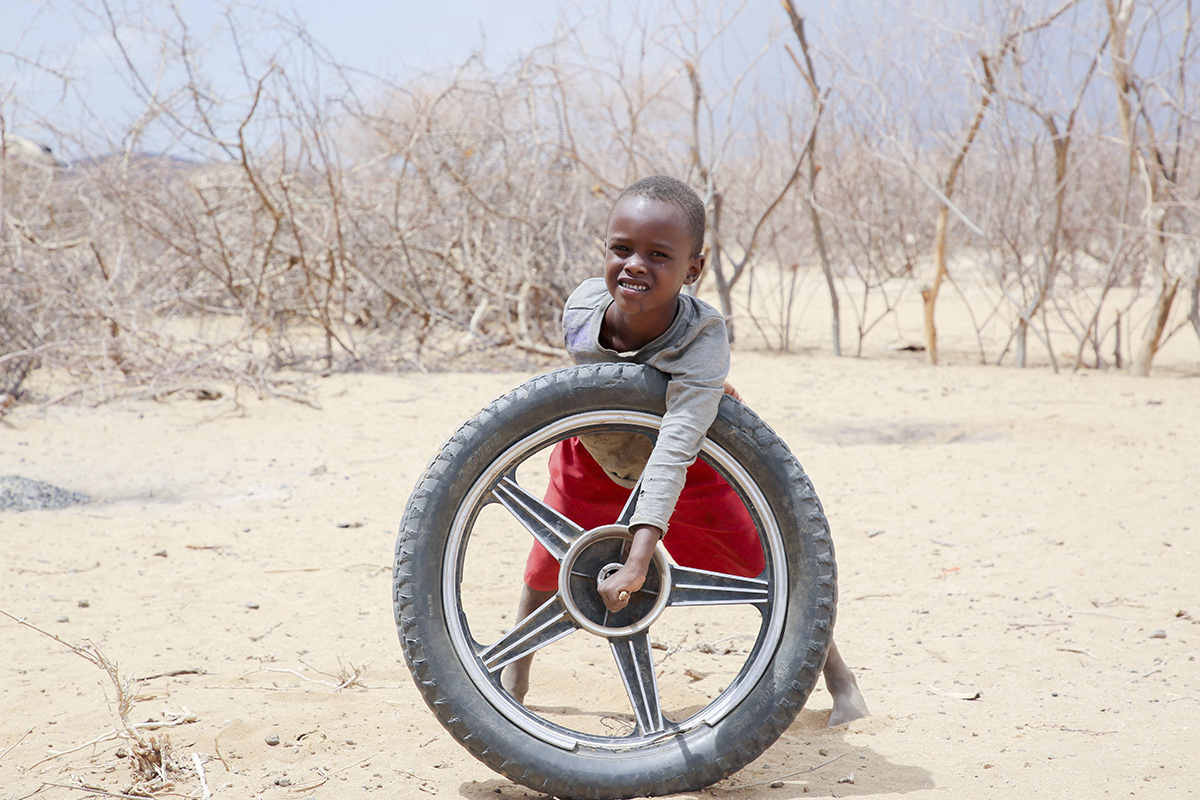
Fundraising
To change the lives of vulnerable children permanently, World Vision actively raises funds from institutional donors, private individuals, churches, equity funds and businesses. Every now and then, fundraising and creating awareness go hand in hand. For example via our Zip your Lip campaign in which we visit secondary schools every year to discuss the topic of hunger with the pupils. This school campaign helps us to welcome new donors year on year.
In 2022, income from private fundraising campaigns increased by 22% – this was exactly according to plan. The growth was mainly from major donors, equity funds, legacies and one-off donations.
The increase in child sponsors and structural donors fell short of expectations for this year. In 2022, World Vision Nederland had a total of 22,655 active donors and child sponsors.
In 2022, we still felt some effects from the Covid-19 pandemic. This impacted events, fundraising activities in churches and other face-to-face meetings. Indirectly, the pandemic also affected us. Several suppliers were having problems due to lack of staff, so that a number of activities did not go ahead, such as the door-to-door campaign.
Child sponsorship
To World Vision, child sponsorship is its most important product. Since 2020, we have added ‘Chosen’ to our conventional form of child sponsorship. Under the ‘Chosen’ programme, children choose their sponsor instead of the other way around. This is highlighted in particular while we recruit new sponsors. In 2022, the number of sponsored children increased to 9,595 (+127), fewer than planned. In online recruitment of child sponsors we had a backfall.
Ambassadors
World Vision has committed ambassadors, both in the Netherlands and in other countries. During events, concerts and other performances, they inform their audience of our work, and usually do an appeal to become child sponsors. In 2022 we had the pleasure of welcoming a new ambassador: Elizabeth Lopez – the winner of the Great Dutch Bake Off. She developed a baking book for children, which we offer as a welcome present to those getting involved in World Vision.
Events
The year 2022 slowly but surely saw events taking place again. We were present at the Opwekking conference to promote ‘Chosen’. In collaboration with Maarten Wassink of The Choir Company, we also launched our own event: I Have A Dream, a special music spectacle.
Giro555: Ukraine response
On February 24, 2022, Ukraine was invaded, and the conflict created an exodus of millions of refugees. Giro555 – which World Vision is part of – appealed to people to make donations. During the campaign week, and in later weeks, the Dutch population was very generous. An amount of – by now – well over €178 million, the second largest amount ever, was raised by the Giro555 campaign. From this amount, World Vision received in reporting year 2022 more than €8 million to help Ukraine and neighbouring countries.
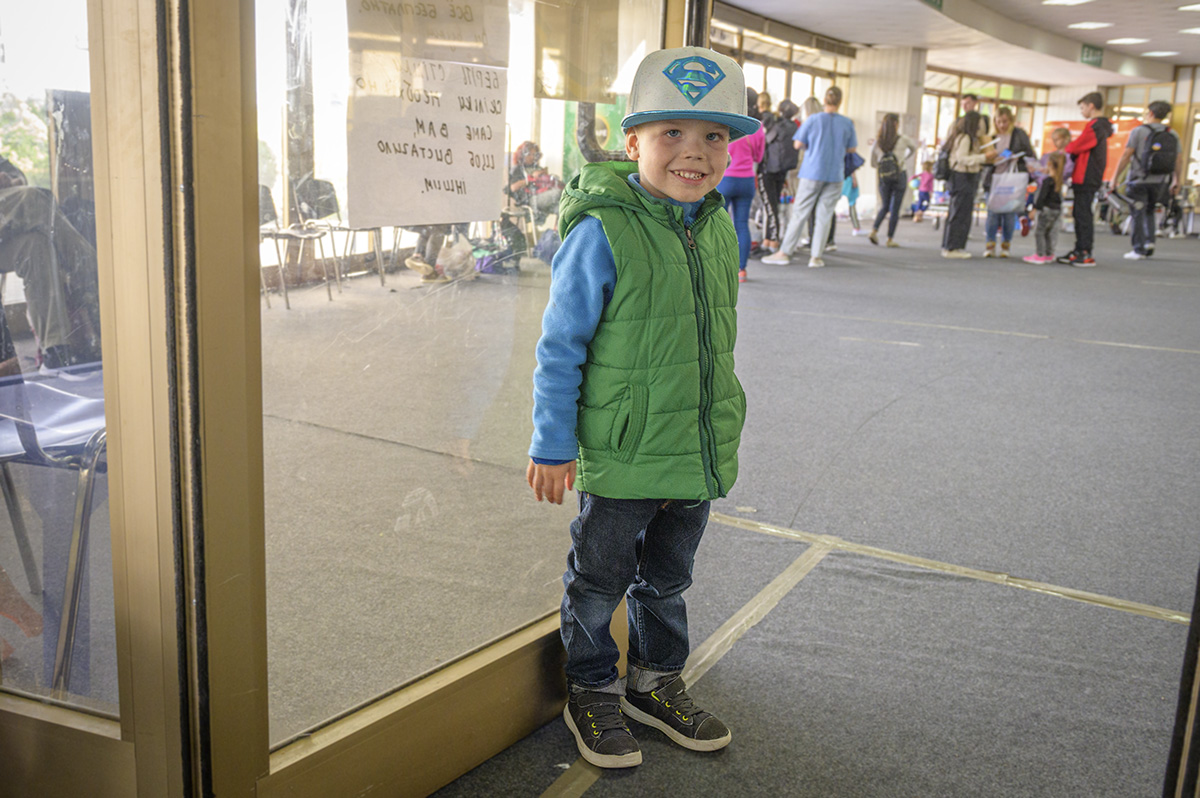

Churches
World Vision Nederland has a pool of speakers that can lead an inspiring church service and call on the congregation to consider the activities of World Vision. This option was not used much in 2022, but many churches did a collection plate around for emergency aid projects run by World Vision, including projects in Afghanistan.
Funds, businesses and major donors
The work of World Vision is supported by several foundations, trust funds and companies. In 2022, we were pleased to see a significant growth in donations and commitments.
Our exposure in various events and campaigns throughout the country has also resulted in an increased number of people taking up a very personal commitment into our projects. Whether it is constructing educational facilities in Uganda, or the facilitation of water in refugee camps in Lebanon or the lifeskills- and enterprise training to marginalized youth in DR Congo: we are very grateful for these relationships, enabling us to further support the vulnerable children we serve.
Foundations
World Vision Nederland works with a growing number of family foundations, trust funds and corporate foundations. Some new partners have been added in FY22, among others Bernard van Leer Foundation.
Thanks to the support of private foundations, World Vision Nederland was able to realise several significant projects. Some of the valued partners we have worked with in the past year are: Stichting De Pagter Fonds, W.M. de Hoop stichting, Made Blue Foundation, Heineken Africa Foundation, De Johanna Donk-Grote Stichting, Stichting Pharus, Stichting EO Metterdaad, Stichting 1 Kronieken 29:14b and Stichting Help2Change.
Together we have impacted the lives of thousands of vulnerable families in difficult places. Sometimes with innovative interventions like the usage of satellite data for small holder farmers. We feel great appreciation for the trust and donations, entrusted to us by the board members and staff of these foundations.
Legacy income
For the first time, World Vision actively campaigned in 2022 to make its followers interested in naming World Vision as a beneficiary in their will. Many people wanted to know more about it, and several actual commitments were made. In 2022, we also received a significant legacy as the sole beneficiary named.
In 2022, Zip your Lip had its 30th anniversary. In the course of time, thousands of young people participated in our youth campaign by fasting for 24 hours in return for sponsoring. With that money, they supported food projects throughout the world. Due to the aftermath of the Covid-19 pandemic, the number of groups that participated in 2022 was lower than planned: 517 participants in 14 groups raised more than €62,000. That was about half of the amount budgeted.
Fundraising focus points for 2023
- Adapting the growth plan
In 2023, we will adapt the growth plan to build more resilience and stability when child sponsorship numbers fluctuate. - Introduction of marketing funnel
We will be launching the marketing funnel strategy in 2023, which puts the donor at the centre, and is based on a more robust acquisition model. - MarTech stack in order
We will implement a new CRM system, improve the website and launch an app for child sponsors.

Henriétte den Olde
Sponsors 8-year-old Christopher
In daily life, Henriëtte den Olde is a registered child minder. In her spare time, she loves to sing with The Choir Company directed by Maarten Wassink, who is an enthusiastic ambassador of World Vision. “I saw what it did to Maarten emotionally. He is excited and emotional at the same time when he talks about his sponsor child.”
Since December of last year, Henriëtte was chosen as a sponsor for the eight-year-old Christopher in Tanzania. “I have two sons, both in their twenties. I realise how privileged they are; they both had a chance in life. I feel fortunate that I can give somebody else a chance too. I have wanted to do this for a long time and now I am able to do so. To me, it is important that there is somebody in the world for whom I can make a difference. That makes my heart glow.
“I want to make a lasting difference to his life.”
I feel blessed that I can do this. It is a privilege; I want to give Christopher a better life. Not just him, but also the community he lives in. More people than just him benefit from sponsorship, and I think that is very important. After all, I may well support Christopher but if the world he lives in does not change, it will have been in vain when the programme stops. Even though Christopher does not know me and I am far away, I want to let him know that somebody cares for him and that he can have a beautiful life.”
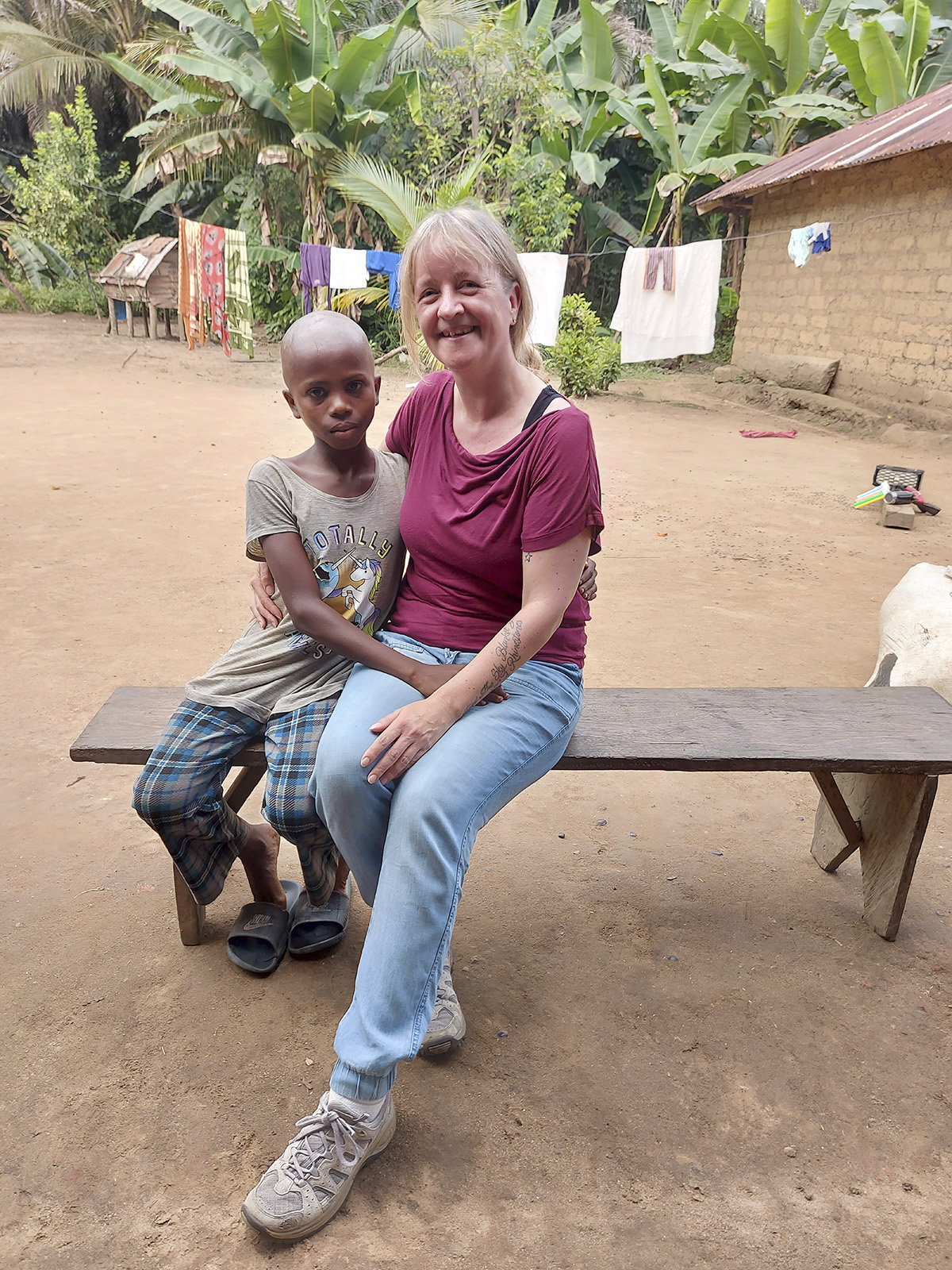
Henderina meets her sponsor child
In 2022, Henderina Stubbe visited the project area in Sierra Leone and met with Tamba, her sponsor child. As customer service officer, Hendrina needs to know how World Vision operates in an area programme. She therefor visited an area program in Sierra Leone. Together with two colleagues she visited water projects, health centres, sanitary facilities and a Chosen-party.
After two hours’ drive over difficult terrain we reached the end of the road. We arrived at a bridge that, earlier this year, had been completely under water after flooding. It was inadvisable to drive over it in a jeep. So we walked the last bit to the small village, which was made up of nine loam-walled houses. This is where my sponsor child Tamba lives. I wondered beforehand if I would know who he was when I saw him. But when I saw him, I recognised him immediately. Our meeting began with a big hug.
Tamba’s family tries to make the best of it in what [to western eyes] are incredible tropical surroundings. They have a small plot of land on which to grow things, which provides them with just enough to eat to feed a family of seven. There is nothing left to sell from the produce that they grow. Tamba stares at me with wide eyes. I am the first white person to have come to the village.
“Sponsoring is so much more than just transferring money once a month to cover basic necessities.”
Henderina Stubbe, employee at World Vision Nederland
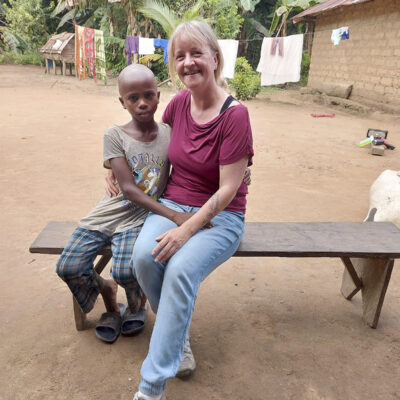
Dreaming about the future
As I walk around, I take in my surroundings. There is washing hanging outside, there are beans drying in the sun and colourful bowls scattered around in front of the houses. I pose for selfies with a number of children. Their cheeriness distracts me momentarily from the serious situation I can see all around me. Tamba’s father tells me that he is very happy that two of his children can now go to school. He hopes that all his children can go to school; then they’ll have better prospects than he had.
I heard many sad stories while I was in the project area in Sierra Leone. I saw poverty, but more than anything else, I got a glimpse of people who keep on going and don’t let things get them down. Over the past thirty years, this section of the population has had to contend with a major civil war, Ebola and Covid-19; yet I could see hope and positivity. The people were dancing and laughing; they told me about their dreams for the future. They’re just so thankful for the help they receive.
More than just school
It is unbelievable to see all that can be done with the contributions made by sponsors. The contributions don’t just ensure that children can go to school: they mean that children can get special lessons. About their rights as children, for instance, and about the responsibilities that go with that.
And many amenities are built, too, such as toilets at the schools and wells for water that don’t dry up when the rainy season ends. Pregnant women are given a telephone with an app that allows them to reach a doctor quickly. And there are courses for the elderly in which they learn to make nutritious meals for their grandchildren, to recognise the symptoms of illness and to act on them accordingly.
I have seen with my own eyes that a sponsor’s contribution is so much more than just transferring money once a month to cover basic necessities. There’s so much more besides: safety, security, visibility and building self-esteem.
Having access to clean water in the vicinity means less chance of assault or rape on long night-time journeys to fetch water. It means a good night’s sleep before the following school day. It means enough time to do homework. Toilets at school mean that girls no longer have to stay at home during their period, but can safely go to the toilet at school. The sponsor project allows the people to learn how to work together, stand up for themselves and develop ideas that can help them move forward together, even after World Vision has left the village.
Organisation, structure and internal resources
World Vision International
World Vision Nederland is part of the World Vision International federation. Agreements are laid down in the Covenant of Partnership. International principles and core values are laid down in the Core Documents. The International President and CEO of World Vision International is represented in the Supervisory Board of World Vision Nederland with one seat. The Chair of the Supervisory Board has a seat in the Triennal Council of World Vision International and participates in the World Vision Regional Forum (Europe & Middle East Region). Both forums are held once every three years. In the spirit of twin cities, the Executive Board/CEO contributes to formal and informal roles in World Vision International to further the organisation’s worldwide mission.
World Vision Nederland
Organisation and structure
World Vision Nederland has an executive board and a supervisory body known as the Supervisory Board (see chapter 5). The Executive Board of World Vision Nederland currently has one member: Mr. Marco van der Graaf. He has filled this position since March 2019, when he was appointed Chief Executive Officer of World Vision Nederland. The Executive Board is in charge of the organisation’s management under supervision of the Supervisory Board. The duties, responsibilities, and working method of the Executive Board in relation to the Supervisory Board are set out in the Charter.
Internal resources
The staff in the Netherlands is characterised by a very enthusiastic, involved and motivated team. Capacity was further expanded in line with the strategy. We started the year with 38 staff (30.3 FTE), and ended it with 42 employees (35.5 FTE). The organisation is divided into three teams: Finance & Operations, International Programmes & Grants, and Fundraising & Communication.
Daisy Tiemes (HR Business Partner) is commenting:
“Despite Covid-19, the absenteeism rate in the organisation remained low at 2.82% (2.52% in 2021). Our aim is to keep absenteeism below 3%. We have invested in resilience by offering (online) staff care sessions to all employees. We compare our absenteeism with the national rate average for organisations with ten to hundred employees (in Q3 2022, the national absenteeism rate was 4.9%).”
We measure our employee satisfaction level annually in Q2 using the ‘Our Voice’ tool. Our Voice is a tool used worldwide by World Vision, offering detailed insight into a wide range of indicators. This year, Our Voice offered additional insights per team. The outcomes of Our Voice are presented to all staff and discussed in the teams and with Staff Representation. Specific attention is being paid to reducing administrative burden and improving structure and reporting in the individual teams.
Frank van Kooten, Chair of Employee Representation:
“At the end of the year, the World Vision Nederland Employee Representation has two members, as one member left the organisation during the year. The representation has one vacancy. The Employee Representation has regular updates with the HR Business Partner and formal meetings with the executive board. Important topics during the year were resilience of staff (during Covid-19 lockdowns), the new working conditions, staff turnover and remuneration as well as more general and operational staff-related observations.”
The year is characterised by somewhat higher staff turnover. We have evaluated this, but it has not led to policy changes. The reasons for leaving the organisation varied widely. We have been able to fill 15 vacancies. There is still 1 vacancy at the end of the financial year.
Volunteers are a true assWWet to our organisation. In FY22 26 volunteers supported the work for the most vulnerable children during events and in the office, adding great value to the impact and reducing cost at the same time. Their enthusiasm and motivation are a big help to staff. In many cases, volunteering at World Vision is a first step to a new job in our organisation or elsewhere.
Marielle Gorter:
“Volunteering at World Vision means committing to children and people worldwide and being part of a motivated team. Working together for change and for life.”
World Vision consistently collaborates with universities to offer traineeships in various disciplines. In FY22, 8 students did their traineeship at World Vision. One of them is Margo Tromp, who at the end of her traineeship started her first job as a junior communications officer in the Fundraising & Communications team: “Touching hearts and starting a movement that makes the world a better place. That is the goal for my job at World Vision.”
In FY21, a new Staff Policy had been prepared, which was implemented in FY22. Clear job descriptions in an updated job and pay structure contribute to clarity about grading, budgets and growth opportunities.
The renewed training policy provides possibilities for employees to learn. In the performance agreement, we lay down arrangements on learning during work hours (70%), through coaching (20%) and in the classroom (10%). All employees followed a training course or received coaching.

Complaints
We welcome feedback and complaints so we can be more effective and improve safety, safeguarding the children and communities whose lives we impact.
We collect feedback and complaints at three different levels:
- Our Programme Accountability Framework outlines our approach to collecting feedback and the way in which we respond to complaints at programme level. This includes our commitment to granting the right to provide feedback and submit complaints and to share them with the relevant communities and how to do so.
- World Vision Nederland Donor Service keeps a complaints’ register. The number of complaints varies from year to year. In the year under review, we received 46 complaints (40 in 2021). Most complaints concern child sponsorship, especially when children leave the Area Development Programme (e.g. because of relocation or age) and the sponsor is introduced to another child. This is not always a positive experience for a sponsor. Other complaints concern flaws in communication by or about the sponsored child. Finally, we receive complaints about unwanted contact by mail, e-mail, phone or door-to-door. Reporting and review of the complaints registered takes place periodically. Where possible, corrective action is taken.
- World Vision International also receives feedback and complaints. Specific Safeguarding issues are being reported centrally. Misconduct by World Vision staff or our partners can be reported through our global Integrity & Protection Whistleblower Hotline. This routing guarantees confidentiality, and reports can be made anonymously.
We always respond to feedback and complaints. How and when we respond depends on the nature of the feedback and complaint and where the report is made. We respond to serious complaints in accordance with the relevant (international) policy, such as our Child & Adult Safeguarding Policy.
Our security policy coincides with World Vision International policies. World Vision contributes to the well-being of children through properly managed security in its programmes, advice, training and clear standards and procedures. This is how we save lives and promote the safety of our staff and everyone involved in our programmes. For World Vision Nederland staff, volunteers and donors who travel to the field, this involves following a mandatory training programme, adequate and up-to-date security information briefings and an authorisation process for permission to travel. All staff is required to complete an online safety training module before travelling. Staff travelling to high-risk areas must complete the Hostile Environment Awareness Training. World Vision also maintains one focal 24/7 emergency point of contact.
Safeguarding and Child Protection
Both the safety of children and adults in our programmes and of our staff are our top priority. World Vision Nederland complies with the World Vision International Safeguarding Policy. All new staff, volunteers, trainees and ambassadors contracted in the Netherlands have to submit a Certificate of Good Conduct from the Dutch government. In addition, we carry out a general reference check. World Vision Nederland participates in the Inter-Agency Misconduct Disclosure Scheme (MDS). Safeguarding is part of our recruitment process. New staff is mandated to complete the online Safeguarding training through our e-campus. It is mandatory to re-take this training every two years. World Vision Nederland has appointed a confidential counselor and two Safeguarding Focal Points.
The World Vision Nederland Integrity standards and procedures are audited both on the basis of the CBF Erkenningsregeling (CBF being the Dutch regulator for Dutch Recognised Charities) and the Partos – 9001 Quality system. In FY22, one (1) Safeguarding Incident was reported in a programme directly funded through World Vision Nederland. Such incidents are reported to World Vision International in accordance with procedures. In all cases, action has been taken in accordance with policy.
The FY22 Annual Safeguarding report and associated action plan has been reviewed and discussed with the Executive Board and Supervisory Board. The Executive Board has confirmed that the integrity policy meets the standards. The Dutch integrity policy is ensured in the international framework and is facilitated by annual feedback on the action plan as well as training provided. The Supervisory Board has appointed its member Almatine Leene as Safeguarding focus person. The Supervisory Board reassessed the policy in FY22 and took note of the action plan.
“The work that World Vision does is very important because it helps millions of children in more than a hundred countries in a structural way. Looking after the most vulnerable and addressing injustice is a clear biblical assignment and I am happy to contribute to that.” – Almatine Leene
Our anti-corruption and fraud policy is consistent with that of World Vision International. Annually all staff sign the Code of Conduct Policy and the Conflict-of-Interest Policy. Our processes and procedures are designed in such a way that the risk to misconduct and fraud is limited. These procedures and compliance with them are checked in various audit exercises. Any suspicion of fraud in our programmes will be immediately investigated and dealt with. We do so in close contact with the responsible Programme Officer in our office. Any donors involved are informed immediately.
Quality standards
World Vision Nederland is a signatory to the Code of Conduct of the International Red Cross and Red Crescent Movement and NGOs in Disaster Response Programmes. We provide humanitarian and development aid to those in need. Aid is given regardless of race, belief or nationality of the recipients and without any adverse distinction of any kind.
In its work, World Vision adheres to the Sphere Standards. These standards have been established to improve the quality of humanitarian interventions and contain a set of protocols, rules and processes. They set the minimum benchmark for any humanitarian response.
The Core Humanitarian Standards (CHS) Alliance is a global alliance of humanitarian and development organisations committed to making aid work better for people. World Vision is a member of the CHS Alliance (independent verification). CHS independent verification provides World Vision with an independent, external quality assurance assessment of capacity and performance against the CHS.
In the reporting year, the quality system of World Vision Nederland was audited for the second time under the current standards (Partos 9001). This standard has been approved by a Partos working group of quality managers and developed as the most appropriate application of ISO 9001 for development organisations. This standard takes into account the other existing industry standards and quality marks. The FY22 external audit revealed an excellent performance against standards and no significant areas for improvement.
IT
World Vision continues to collaborate with Global Technology Development of World Vision International for IT infrastructure and support. This cost-efficient approach offers great reliability, support, continuity as well as the latest standards in cyber security and data protection. We have launched a new HR support tool (NMBRS) offering a personalised portal for managers and all staff for HR files, holiday registration, pay slips etc. As for ERP, we have started the migration from Exact Globe to Exact on-line and this process will be finalised at the beginning of FY23. For marketing technology, we are planning the implementation of Microsoft Dynamics CRM with a Dutch provider. For the time being, we will continue to collaborate with World Vision International GTD to effect a full integration of this application to work with our website, mobile applications, and databases.
Sustainability and corporate social responsibility
Climate change and environmental degradation are key drivers of extreme poverty, inequality, and child vulnerability. World Vision is an accredited partner in the UN Decade for Ecosystem Restoration. Climate action will become more imminent, and various stakeholders including major donors will expect organisations like ours to demonstrate commitment to assessing and managing the environmental impacts of our activities.
Implementing guidelines will help us reduce our carbon footprint, which has a global negative impact on child well-being. World Vision already has tested various project models and approaches such as FMNR* that can be scaled up. In FY22, World Vision Nederland set up a ‘Green Team’. The purpose of this team is to lead, coordinate, promote and support activities that will enable World Vision Nederland to mainstream environmental and climate-change policy and practice across the organisation in an intentional, consistent and cohesive way both internally and in its field-facing programming. The Green Team has adapted the Environmental Stewardship Management Policy and has drafted Terms of Reference and a work plan. This work plan is developed annually as part of the annual plan and approved by the Executive Board for implementation.
Risk Management
World Vision Nederland developed and approved its own Enterprise Risk Management Policy in FY21. This policy fits within the international risk policy. Risk is defined in this policy as the uncertainty of events and their outcomes that have a significant effect on operational performance, achieving strategic objectives and finance and laws and regulations.
Risk Appetite appears in the World Vision Risk Appetite Statement where it is defined at four levels, namely ‘risk averse’ (e.g. Safeguarding Violations), minimal (e.g. Funding & Liquidity), calculated (e.g. Partnering) and ‘risk taking’ (e.g. Innovation). Risk Assessment within World Vision Nederland is always linked to one of the four strategic goals of the organisation.
In FY22, World Vision reassessed the identified risks. This is a bottom-up process involving the teams and management. The outcomes of the assessment have been presented to the Supervisory Board through the Audit & Risk Committee. The total number of risks identified went down from 29 to 20. Mitigating measures are in place for all risks identified.
Top-5 Risks
1. Allegation of misconduct in World Vision Nederland, World Vision International or the sector
The impact of misconduct of staff of NGOs within the development sector has had far-reaching consequences for people in need as well the reputation of the organisations they worked for. It is recognised that this could have a significant impact on World Vision as well. Within World Vision there are many measures mitigating this risk including, for example, staff training on safeguarding & anti-fraud, explicit hiring protocols and ensuring good feedback & complaints systems. At the same time World Vision works actively on a communicative approach of trust and is pro-active in reporting any incidents that may occur, both internally and externally.
2. High level of inflation / energy crisis
World Vision Nederland’s goal to receive more sustainable funding from a growing donor base is under pressure due to the high level of inflation in the Netherlands as well as the current energy crisis. A potential reduction in consumer confidence and donor confidence could have a negative impact on this strategic goal. Mitigating measures are discussed and in place where they relate to more focused and innovative fundraising approaches as well budget adjustments and cost control. Financial monitoring is in place on a monthly basis.
3. Cyber threats
It is recognised within World Vision that cyber threats could have a serious impact on the continuity of systems and could lead to a loss of data with potential reputational damage. With so many crises in the world it is felt that this risk increased in the last year. Mitigating measures are in place in the World Vision organisation. They include IT security measures and award-winning cyber security training for staff.
4. Shortage of staff
It is a challenge to find the right staff on the job market in the Netherlands at the moment, which could be a risk for the continuity of activities as well as overloading current staff. Mitigating measures include ensuring teams are allocated surplus capacity and providing extra care for staff. Investments are being made to nurture young professionals. New employer branding activities
are being initiated.
5. Unpredictable cash flow
As World Vision is largely dependent on grants, it sometimes needs to pre-finance grants when donor payments are received later in the process. This creates a risk for the cash flow level and the continuity of payments within the organisation. In the past year a forecasting dashboard was developed, and weekly monitoring is now in place.
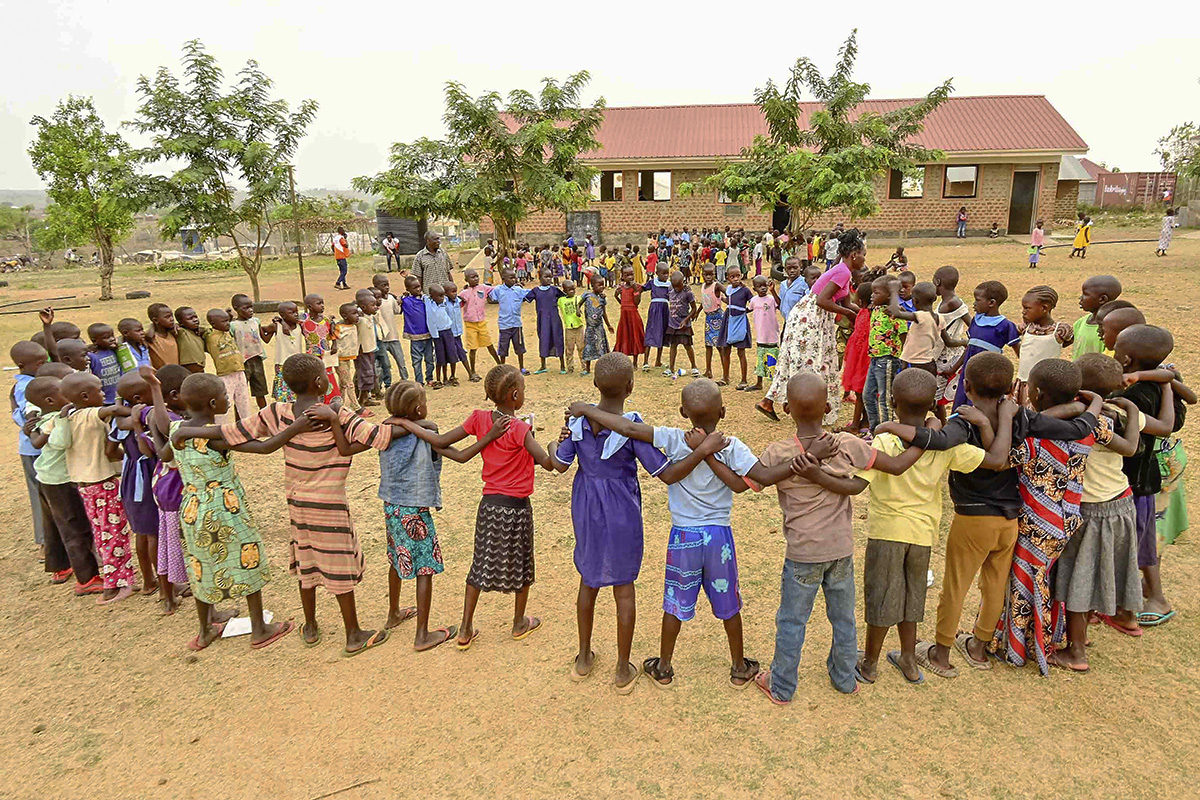
Optimising effectiveness and efficiency of the funds deployed
The progress of the multi-annual plan and the annual plan is checked and evaluated periodically, and the budget is reviewed by means of (financial) reports. During Supervisory Board meetings, the Executive Board/CEO reports on progress in relation to targets set. Among other things, specific attention is paid to fundraising results, the results of international programmes, grant acquisition, grant management and development of human resources. The International Programmes & Grants team periodically assesses the project proposals, project implementation and the partner organisations. This is effected by thorough analysis of financial and programme reports and project and field visits together with local partners.
World Vision uses the so-called ‘LEAP’ system for planning, implementation and evaluation of the programme activities. LEAP stands for ‘Learning’ through Evaluation, Accountability and Planning’ and is widely used internationally. LEAP is a monitoring tool that tracks programmes from the start-up phase to completion. Except for agreements on ways of reporting, agreements have also been made regarding the various evaluations which should be carried out during the term of a programme (interim and final evaluation).
World Vision Nederland has a quality management system in place and complies with the Partos 9001-2015 quality standard (the most appropriate application of the ISO 9001 for development organisations). Annually, an internal and external audit are executed in order to be certified. In addition, World Vision Nederland has been recognised by CBF, the Dutch regulator for Charities. In that capacity, CBF audits World Vision Netherlands on a regular basis for compliance with the requirements of the ‘Erkenningsregeling Goede Doelen’. Every year CBF carries out an interim assessment. Once every three years, CBF conducts a full assessment of compliance with the guidelines.
The annual accounts are audited by an external auditor. In addition, internal audits (including a so-called Peer Review) are performed by a team of independent board members and international colleagues from the World Vision partnerships.
The specific focus of the Peer Review is governance. The audit is carried out at least once every five years. The final report of the FY21 Peer Review was received in the year under review – and the conclusion is: ‘meets expectations’. In 2018, World Vision International launched internal risk-based audits that are carried out by the international World Vision’s internal audit department.
An important indicator of the efficient deployment of our resources is the level of cost of management, administration and fundraising. World Vision Nederland closely monitors the standards as determined for the organisation.
Improvements that follow from the aforementioned evaluations, as well as internal and external reviews can be seen in an audit dashboard. Actions are monitored and discussed during regular management meetings.
Optimising stakeholder engagement
The Supervisory Board acts as supervisor on behalf of the stakeholders of World Vision Nederland. They are:
- Beneficiaries
- Partner organisations and other World Vision offices (including field offices)
- Sponsors and donors
- Schools and churches
- Governments and Institutional donors
- Funds, companies, foundations
- Staff (employees, trainees and volunteers)
- Peer organisations in the Netherlands
Beneficiaries are first and foremost the most vulnerable children in the countries where World Vision Nederland is active. Through the programmes we also support parents, siblings and communities. We reach them through the World Vision field offices and partner organisations. We conclude agreements with these stakeholders about programmes to be implemented and we sign contracts on grants and donations.
In the Dutch context, World Vision Nederland distinguishes between child sponsors and individual donors, schools and churches, governments and institutional donors, funds, companies and foundations, our staff and our Dutch peer NGOs.
The Supervisory Board supervises World Vision Nederland’s adherence to the promises made to its stakeholders. World Vision Nederland communicates with the stakeholders through different channels, tailored to the various target groups. Information is shared through the website, e-newsletters and social media, such as Twitter, Instagram and Facebook. Sponsors receive annual updates from their sponsored child directly from the area programme. Governments, institutional donors, companies, foundations and funds receive reports as per the agreements. The CEO fulfills specific roles as Chair of the Board of the European Representation as well as Chair of the Supervisory Board of the Dutch Relief Alliance. In these roles there is a close structured relationship with European and Dutch govermental bodies. We meet Dutch Partner and Peer organisations in networks and partnerships. We ensure that these collaborations contribute to the vision and mission of World Vision. Where this overlaps with others we seek collaboration and join forces to achieve better results.
Financial results
In this chapter, we provide a summary of our annual accounts for 2022. The audited annual accounts for 2022 can be found from page 70.
Both income and commitments to the field have grown in 2022, which on the one hand means that World Vision Nederland is increasing its impact, but also shows that the number of crises around the world is increasing and worsening. It makes the future more uncertain than it was before.
The financial result of the reporting year was in line with the multi-annual strategy. The core of our strategy is to continue to increase the number of donors and our impact during the period 2021-2025. Through our investment in fundraising, our base of regular donors grew steadily. This shows that even in uncertain economic times, people are willing to let their hearts speak and get involved.
Income from private individuals and companies
The total number of child sponsors grew to almost 9,600 in 2022. Many of new sponsors were part of the Chosen Programme. The total number of donors grew to over 4,000 in 2022. Of the combined donations from individuals and companies, 66% were earmarked for our sponsorship programmes. The remaining donations were used for impact through humanitarian and development programmes that were already largely funded through government grants.
Income from government grants
Income from government grants was in total €20.7 million (2021: €21.8 million). This income includes partner funding on behalf of other partner organisations of €5.8 million (2021:
€5.3 million). The share of government grants in our total income was 59%, from 77% in the previous reporting year, which is the result of the increase in other funding, part of which is due to the Ukraine crisis which attracted a lot of other funding.
Income from other non-profit organisations
The 2022 income includes a contribution from Giro555 of €8,262,139. This income relates to
two different Giro555 campaigns. One was a remaining part of the Covid-19 response in Nepal (€51,692); this was fully spent in 2022. Also, the portion for which an special purpose fund was created in 2021 (€83,645) was fully spent in 2022. The other campaign was for the people affected by the war in Ukraine (€8,210,447), and with the help of the World Vision Partnership a quick response was possible and €5,773,313 has already been committed to immediately respond to the vulnerable children that are victims in this war. With the Giro555 campaign still ongoing and the crisis being far from over, the remaining income will be spent continuing in the next financial year from October 2022 onwards.
Expenditure on objectives
We committed a total of €28.9 million to programme contributions. This was €3.5 million more than in financial year 2021. In percentages, 87.5% of income was spent on the organisation’s objective, while compared to expenditure this was 93%. The organisation’s guiding principle is that as much as possible of the available funds are spent on the organisation’s statutory objectives, but at least 75%. Uncertainties during the year were there related to the weakening position of the EUR against USD. This impacted our global field commitments. By entering into hedging contracts at World Vision International, we reduced the exchange rate risks. In financial year 2022, World Vision Nederland does not have an investment policy or any investments that had any economic value.
Raising income and management and administration costs
In 2022, the management and administration percentage of total income was 1.3% (2021: 1.5%). In our multi-year strategy, we focus on growth of private fundraising in order to realise growth in private income. Raising income costs were €1.9 million, an increase of 18% compared to previous year, however, as a percentage of income they were slightly lower, namely 5.3% in 2022 compared to 5.6% in 2021. We are pleased that these investments allowed us to achieve growth and remain well within the internal standards (management and administration: 5%; raising income: 15%). For 2023, we are further committed to growth in income from private individuals and companie. During 2022, high inflation figures started to increase our costs already. In 2023 our costs are expected to increase further due to higher rent and energy costs.
Funds and reserves
We distinguish between funds and reserves. In the case of special purpose funds, our donors designate the purpose for which the income must be spent. In the case of special purpose reserves, the purpose of the expenditure is at the discretion of the Executive Board.
The continuity reserve is designed to cover financial risks to ensure the continuity of the work is not put at risk by sudden unforeseen events. The required amount of the continuity reserve is set at €1.9 million for 2023, based on the internally conducted risk analysis. The level of the continuity reserve at the close of the financial year 2022 is €2.2 million. This corresponds to 74% of the costs of our own operations. Guideline for Financial Management of Goede Doelen Nederland uses a maximum standard of 150% for the level of the continuity reserve. Thus, the continuity reserve is sufficient to cover the expenses for our working organisation in the event of unforeseen circumstances.
In 2022 it was decided to create an special purpose reserve for improvements for the internal organisation, which led to a total of €250,000 being set aside at the end of FY22.
The special purpose funds increased by €1.6 million in FY22. This is mainly caused by the special purpose fund for Ukraine funding, €1.9 million of the raised income (GIRO555) will be committed in the next financial year.
Financial result
The financial year ended with a positive result of €2.2 million. Adjusted for the special purpose funds and reserves, this result would be €285,515 (2021: €478,078 deficit). This is higher than budget due to different timing of income and expenditure.
“The work that World Vision does is very important because it helps millions of children in more than a hundred countries in a structural way. Looking after the most vulnerable and addressing injustice is a clear biblical assignment and I am happy to contribute to that.” – Almatine Leene
Our anti-corruption and fraud policy is consistent with that of World Vision International. Annually all staff sign the Code of Conduct Policy and the Conflict-of-Interest Policy. Our processes and procedures are designed in such a way that the risk to misconduct and fraud is limited. These procedures and compliance with them are checked in various audit exercises. Any suspicion of fraud in our programmes will be immediately investigated and dealt with. We do so in close contact with the responsible Programme Officer in our office. Any donors involved are informed immediately.
Quality standards
World Vision Nederland is a signatory to the Code of Conduct of the International Red Cross and Red Crescent Movement and NGOs in Disaster Response Programmes. We provide humanitarian and development aid to those in need. Aid is given regardless of race, belief or nationality of the recipients and without any adverse distinction of any kind.
In its work, World Vision adheres to the Sphere Standards. These standards have been established to improve the quality of humanitarian interventions and contain a set of protocols, rules and processes. They set the minimum benchmark for any humanitarian response.
The Core Humanitarian Standards (CHS) Alliance is a global alliance of humanitarian and development organisations committed to making aid work better for people. World Vision is a member of the CHS Alliance (independent verification). CHS independent verification provides World Vision with an independent, external quality assurance assessment of capacity and performance against the CHS.
In the reporting year, the quality system of World Vision Nederland was audited for the second time under the current standards (Partos 9001). This standard has been approved by a Partos working group of quality managers and developed as the most appropriate application of ISO 9001 for development organisations. This standard takes into account the other existing industry standards and quality marks. The FY22 external audit revealed an excellent performance against standards and no significant areas for improvement.
IT
World Vision continues to collaborate with Global Technology Development of World Vision International for IT infrastructure and support. This cost-efficient approach offers great reliability, support, continuity as well as the latest standards in cyber security and data protection. We have launched a new HR support tool (NMBRS) offering a personalised portal for managers and all staff for HR files, holiday registration, pay slips etc. As for ERP, we have started the migration from Exact Globe to Exact on-line and this process will be finalised at the beginning of FY23. For marketing technology, we are planning the implementation of Microsoft Dynamics CRM with a Dutch provider. For the time being, we will continue to collaborate with World Vision International GTD to effect a full integration of this application to work with our website, mobile applications, and databases.
Sustainability and corporate social responsibility
Climate change and environmental degradation are key drivers of extreme poverty, inequality, and child vulnerability. World Vision is an accredited partner in the UN Decade for Ecosystem Restoration. Climate action will become more imminent, and various stakeholders including major donors will expect organisations like ours to demonstrate commitment to assessing and managing the environmental impacts of our activities.
Implementing guidelines will help us reduce our carbon footprint, which has a global negative impact on child well-being. World Vision already has tested various project models and approaches such as FMNR* that can be scaled up. In FY22, World Vision Nederland set up a ‘Green Team’. The purpose of this team is to lead, coordinate, promote and support activities that will enable World Vision Nederland to mainstream environmental and climate-change policy and practice across the organisation in an intentional, consistent and cohesive way both internally and in its field-facing programming. The Green Team has adapted the Environmental Stewardship Management Policy and has drafted Terms of Reference and a work plan. This work plan is developed annually as part of the annual plan and approved by the Executive Board for implementation.
Risk Management
World Vision Nederland developed and approved its own Enterprise Risk Management Policy in FY21. This policy fits within the international risk policy. Risk is defined in this policy as the uncertainty of events and their outcomes that have a significant effect on operational performance, achieving strategic objectives and finance and laws and regulations.
Risk Appetite appears in the World Vision Risk Appetite Statement where it is defined at four levels, namely ‘risk averse’ (e.g. Safeguarding Violations), minimal (e.g. Funding & Liquidity), calculated (e.g. Partnering) and ‘risk taking’ (e.g. Innovation). Risk Assessment within World Vision Nederland is always linked to one of the four strategic goals of the organisation.
In FY22, World Vision reassessed the identified risks. This is a bottom-up process involving the teams and management. The outcomes of the assessment have been presented to the Supervisory Board through the Audit & Risk Committee. The total number of risks identified went down from 29 to 20. Mitigating measures are in place for all risks identified.
Top-5 Risks
1. Allegation of misconduct in World Vision Nederland, World Vision International or the sector
The impact of misconduct of staff of NGOs within the development sector has had far-reaching consequences for people in need as well the reputation of the organisations they worked for. It is recognised that this could have a significant impact on World Vision as well. Within World Vision there are many measures mitigating this risk including, for example, staff training on safeguarding & anti-fraud, explicit hiring protocols and ensuring good feedback & complaints systems. At the same time World Vision works actively on a communicative approach of trust and is pro-active in reporting any incidents that may occur, both internally and externally.
2. High level of inflation / energy crisis
World Vision Nederland’s goal to receive more sustainable funding from a growing donor base is under pressure due to the high level of inflation in the Netherlands as well as the current energy crisis. A potential reduction in consumer confidence and donor confidence could have a negative impact on this strategic goal. Mitigating measures are discussed and in place where they relate to more focused and innovative fundraising approaches as well budget adjustments and cost control. Financial monitoring is in place on a monthly basis.
3. Cyber threats
It is recognised within World Vision that cyber threats could have a serious impact on the continuity of systems and could lead to a loss of data with potential reputational damage. With so many crises in the world it is felt that this risk increased in the last year. Mitigating measures are in place in the World Vision organisation. They include IT security measures and award-winning cyber security training for staff.
4. Shortage of staff
It is a challenge to find the right staff on the job market in the Netherlands at the moment, which could be a risk for the continuity of activities as well as overloading current staff. Mitigating measures include ensuring teams are allocated surplus capacity and providing extra care for staff. Investments are being made to nurture young professionals. New employer branding activities
are being initiated.
5. Unpredictable cash flow
As World Vision is largely dependent on grants, it sometimes needs to pre-finance grants when donor payments are received later in the process. This creates a risk for the cash flow level and the continuity of payments within the organisation. In the past year a forecasting dashboard was developed, and weekly monitoring is now in place.
Supervisory Board Report and Accountability Statement
Supervisory Board
In general, the responsibilities and tasks of the Supervisory Board are to supervise the overall direction for ensuring the standards of ministry and mission of World Vision Nederland, as well as the organisation’s participation in partnership processes. The Supervisory Board has to approve and supervise the Articles of Association and strategic directions (Multi-Year Plan, Annual Plan and Budget) that are drafted by the Executive Board / CEO. It also has to approve specific actions or resolutions of the Executive Board as defined in the Articles of Association as well as in the Board Charter.
The Supervisory Board determines the number of members of the Executive Board and is responsible for their appointment, suspension and removal from office.
The Supervisory Board supervises the Executive Board pursuant to the Board Charter which, in addition to the Articles of Association, regulates the cooperation between the Supervisory Board and the Executive Board. This Board Charter and the Articles of Association contain provisions that avoid conflicts of interest and prevent positions becoming entangled.
World Vision Nederland uses the so-called ‘two-tier system’. In this system, there is a clear separation between management and implementation.
The Supervisory Board is made up of six members plus a representative of World Vision International. Supervisory Board members do not receive any remuneration, but their justifiable expenses incurred in the course of their duties are reimbursed.
The Supervisory Board has two formal committees: the Audit & Risk Committee (ARC) and the Governance Committee (GC). Almatine Leene (member of the Supervisory Board) was appointed as the Safeguarding Focal point within the Supervisory Board.
The purpose of the ARC is to assist the Supervisory Board in its oversight responsibilities of World Vision Nederland by ensuring the integrity of statutory financial reporting, the effectiveness of the external audit function, the effectiveness of the risk management and internal control framework, compliance with established accounting practices and principles, organisational policies, legal, regulatory and donor requirements as well as other financial matters.
| Supervision | Management & Implementation | Implementation |
|---|---|---|
| The supervisory role is the responsibility of the Supervisory Board, which: | The supervisory role is the responsibility of the Supervisory Board, which: | The supervisory role is the responsibility of the Supervisory Board, which: |
| appoints, suspends and removes from office the Executive Board members | appoints, suspends and removes from office the Executive Board members | appoints, suspends and removes from office the Executive Board members |
| monitors the Executive Board’s performance; | monitors the Executive Board’s performance; | monitors the Executive Board’s performance; |
| appoints the auditor; | appoints the auditor; | appoints the auditor; |
| appoints the committee members; | appoints the committee members; | appoints the committee members; |
| approves the articles of association, the strategic policy documents, | approves the articles of association, the strategic policy documents, | approves the articles of association, the strategic policy documents, |
| approves the Board Charter | The management and the day-to-day operations are the responsibility of the statutory Executive Board/CEO, who: | approves the Board Charter |
| operates within the boundaries set by the articles of association and the Board Charter. | operates within the boundaries set by the articles of association and the Board Charter. | operates within the boundaries set by the articles of association and the Board Charter. |
| reports regularly to the Supervisory Board on proceedings in the organisation. | reports regularly to the Supervisory Board on proceedings in the organisation. | reports regularly to the Supervisory Board on proceedings in the organisation. |
| Policy development and policy implementation are the responsibility of the Executive Board/CEO, who: | ||
| is responsible for the policy implementation process in the organisation; | is responsible for the policy implementation process in the organisation; | is responsible for the policy implementation process in the organisation; |
| delegates to the management team; | delegates to the management team; | delegates to the management team; |
| has ultimate responsibility for the decisions made. | has ultimate responsibility for the decisions made. | has ultimate responsibility for the decisions made. |
The purpose of the GC is to enable the Supervisory Board to fulfil its oversight responsibilities of World Vision Nederland in relation to developing governance principles that are consistent with high standards of governance and with the policies and decisions of World Vision International, reviewing and assessing the organisation’s system of governance on an ongoing basis, identifying and recommending candidates for appointment to the Supervisory Board, providing an effective orientation to new members, ensuring that regular governance reviews take place and supporting the ongoing development of Supervisory Board members.
The Supervisory Board is responsible for determining the overall remuneration of the Executive Board/CEO.
Supervisory Board Report
In FY22, the Supervisory Board met five times, including a full day of retreat in June. In March 2022, the entire Supervisory Board attended its first virtual field visit to Uganda offering the members great insight into the work in Kyabigambire in Uganda.
The Supervisory Board discussed and approved the FY23 Annual plan and Annual budget. In 2022, one of the Supervisory Board members also met twice with the employee representation; in these meeting, insights were shared on issues like the impact of Covid-19 and work-life balance of staff. The members of the Supervisory Board regularly represent World Vision at events such as major donor events and international meetings of World Vision International.
The Supervisory Board is happy to see that Private Revenue has increased by 22% compared to last year. The impact realised by World Vision in the Ukraine crisis has been substantial. The Dutch office has been able to significantly contribute to the victims of this crisis thanks to the national appeal through Giro555.
The results of the annual employee satisfaction survey (‘Our Voice’) were presented and discussed. The survey showed good results and general improvement on sections previously agreed (complexity, bureaucracy).
World Vision Nederland’s activities in Lobbying & Advocacy have been stepped up. The action plan was presented and discussed during the Supervisory Board meeting of March 2022. The Supervisory Board is very pleased to see the increased ability to act as a sparring partner for important stakeholders in both the Netherlands and Europe.
The FY21 Peer Review Report on governance has been finalised and an action plan has been developed. Agreed actions for FY22 (e.g. field visits and risk oversight) have been implemented.
In the March meeting, the Supervisory Board discussed and approved the FY21 performance review and the FY22 remuneration of the CEO. In addition, during this meeting the Supervisory Board discussed and approved the FY21 annual accounts and appointed WITh Accountants as External Auditor for FY22.
During the meeting in June 2022, the Supervisory Board performed and discussed the self-assessment on its functioning. An external advisor was invited to provide a governance update as well as insights into focus areas and points for improvement.
The Supervisory Board discussed the amendment of the Board Charter. This Charter regulates the cooperation between the Supervisory Board and the Executive Board, in addition to the Articles of Association.
Besides the scheduled Supervisory Board meetings, the Supervisory Board Chair has regular meetings with the Executive Board/CEO. The Executive Board/CEO also regularly seeks advice from individual Supervisory Board members.
Chair of the Supervisory Board/ Audit & Risk Committee member
Mrs. I.J.M. (Ingrid) Allemekinders-Pols
Member since September 2019 Partner at Ernst & Young Belastingadviseurs LLP Relevant other positions: none
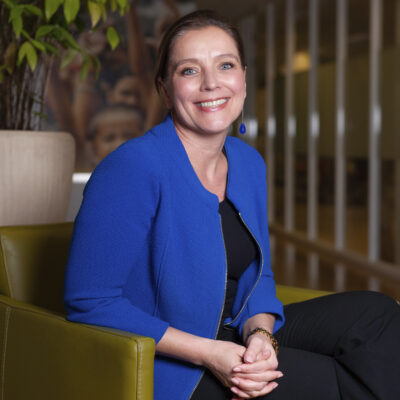
Supervisory Board member/Chair of the Governance Committee
Mr. H.A.L. (Alrik) Boonstra
Member since June 2020 Global SVP Human Resources Irdeto B.V. From 1 January 2023 - Chief Human Resources Officer at Roompot Relevant other positions: Interim Chair of the Supervisory Board of AT Osborne Holding B.V. Chair of the Supervisory Board of CVO Groep Supervisory Board Member and Chair of the Audit Committee of Stichting Timon
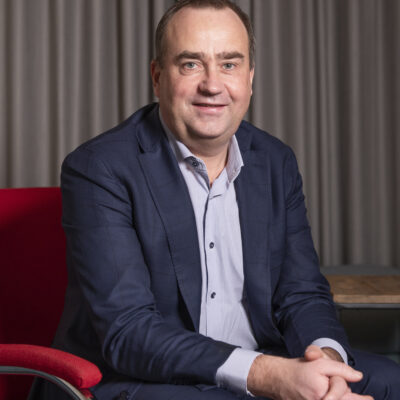
Supervisory Board member, focusing on Safeguarding
Mrs. A.M.J. (Almatine) Leene
Member since March 2021 Reverend at GKV Hattem-Noord, lecturer at Viaa Hogeschool Zwolle Relevant other positions: Chair of the Board of Stichting Veilige Kerk
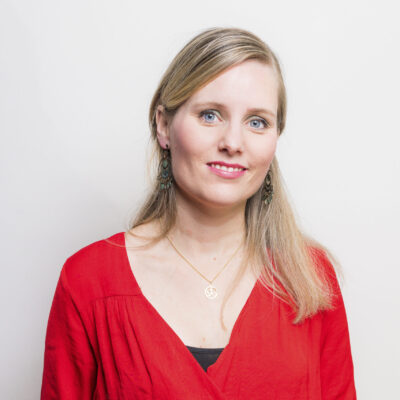
Supervisory Board member, representing the President of World Vision International
Ms. K.M. (Kristin) Anderson
Member since March 2021 Chief People and Culture Officer, World Vision International Relevant other positions: none

Supervisory Board member/ Audit & Risk Committee member
Mr. A.J. (Arco) van Wessel
Member since September 2019 Chair of the Executive Board of De Passie scholen Relevant other positions: none
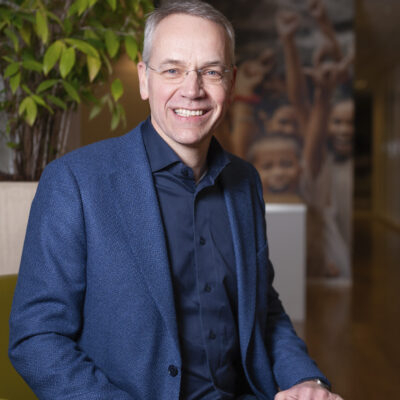
Vice-Chair of the Supervisory Board/ Chair of the Audit & Risk Committee
Mr. J. (Johan) van Renselaar
Member since March 2017 Partner at Anders Invest B.V. Relevant other positions: Chair of the Supervisory Board of Ontwikkelingsmaatschappij Hattemerbroek B.V. (H2O) Member of the Advisory Board of Inclusief Groep in Nunspeet
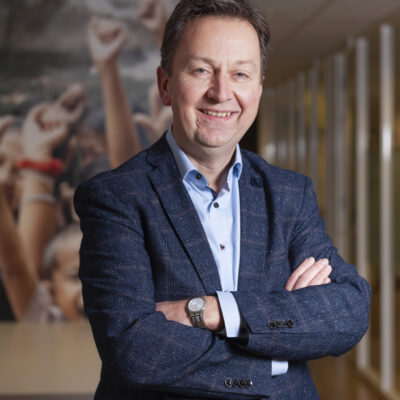
Supervisory Board member/ Governance Committee member
Mr. W. (Walter) Wassenaar
Member since March 2017 Principal of the Mr. J.J.L. van der Brugghenschool and Prins Willem-Alexanderschool, stichting Prohles in Katwijk Relevant other positions: none
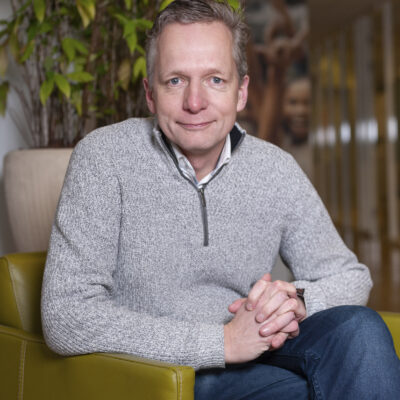
Accountability Statement
Governance at World Vision Nederland is based on the three principles of the ‘Erkenningsregeling Goede Doelen’ [Charity Qualification Rules] as applied by CBF, the Dutch Regulator for Charities:
1. separation between supervision and management (section 5.1)
2. effective and efficient spending (section 5.4)
3. stakeholder interactions (section 5.5)
Financial Statements 2022
Balance sheet
| Assets | 2022 | 2021 | |
|---|---|---|---|
| Tangible fixed assets | 1 | 245,913 | 256,471 |
| Current assets | |||
| Receivables from grants | 2 | 12,255,691 | 10,066,225 |
| Other receivables | 3 | 2,832,857 | 338,114 |
| Cash and cash equivalents | 4 | 4,658,511 | 2,302,180 |
| Total current assets | 19,747,059 | 12,706,519 | |
| Total assets | 19,992,972 | 12,962,990 |
| Liabilities | 2022 | 2021 | |
|---|---|---|---|
| Reserves and funds | |||
| Continuity reserve | 5 | 2,193,995 | 1,908,480 |
| Special purpose reserves | 6 | 250,000 | 0 |
| Special purpose funds | 7 | 1,900,002 | 253,000 |
| Total reserves and funds | 4,343,997 | 2,161,480 | |
| Current liabilities | |||
| Amounts payable from grants | 8 | 14,983,278 | 10,202,582 |
| Other liabilities | 9 | 665,697 | 598,928 |
| Total current liabilities | 15,648,975 | 10,801,510 | |
| Total liabilities | 19,992,972 | 12,962,990 |
| Statement of income and expenditure | * | Result 2022 | Budget 2022 | Result 2021 |
|---|---|---|---|---|
| income | ||||
| Income from private individuals | 10 | 4,993,562 | 4,631,457 | 4,220,073 |
| Income from companies | 11 | 185,928 | 588,004 | 266,746 |
| Income from government grants | 12 | 20,608,253 | 24,929,000 | 21,813,709 |
| Income from affiliated non-profit organisations | 13 | 207,051 | 0 | 62,303 |
| Income from other non-profit organisations | 14 | 9,146,008 | 1,677,540 | 1,871,608 |
| Total income raised | 35,140,802 | 31,826,000 | 28,234,439 | |
| Other income | 48,618 | 0 | 646 | |
| Total Income | 35,189,420 | 31,826,000 | 28,235,085 |
| Statement of income and expenditure | * | Result 2022 | Budget 2022 | Result 2021 |
|---|---|---|---|---|
| Expenditure | ||||
| Expenditure on objectives | ||||
| Contributions to aid programmes | 29,616,415 | 28,589,789 | 25,978,543 | |
| Awareness raising and advocacy | 1,167,333 | 1,109,474 | 867,373 | |
| Total expenditures on objectives | 15 | 30,783,748 | 29,699,263 | 26,845,916 |
| Costs of raising income | 16 | 1,859,414 | 2,033,672 | 1,575,098 |
| Management and administration costs | 17 | 464,392 | 434,065 | 416,285 |
| Total expenditure | 33,107,554 | 32,167,000 | 28,837,299 |
| Net result | Result 2022 | Budget 2022 | Result 2021 | |
|---|---|---|---|---|
| Net result before financial income and expenditures | 2,081,866 | -341,000 | -602,214 | |
| Net financial income and expenditure | 18 | 100,651 | 0 | 34,080 |
| Net result | 19 | 2,182,517 | -341,000 | -568,134 |
| Appropriation of net result | ||||
| Added / charged to: Continuity reserve | 285,515 | -249,000 | -478,078 | |
| Added / charged to: Special purpose reserves | 250,000 | 0 | 0 | |
| Added / charged to: Special purpose funds | 1,647,002 | -92,000 | -90,056 | |
| Net result | 2,182,517 | -341,000 | -568,134 |
Accounting policies
General Accounting Policies
Activities
World Vision Nederland is a foundation established under Dutch law.
Our activities consist of (Article 3 of the foundation’s bylaws):
- To improve the living conditions of underprivileged children on a structural basis, including through the creation of a safe and just environment, without distinction of faith, race or political beliefs, as well as through sustainable aid, emergency aid and reconstruction assistance.
- To raise awareness and educate society about development cooperation in order to increase public support for and involvement in international society.
The foundation has a non-profit purpose.
General
The annual accounts have been prepared in accordance with Accounting Guideline 650 for Fundraising Organisations. The reporting period is from
1 October 2021 to 30 September 2022. All amounts are in euros.
Comparison previous year
The accounting policies used are unchanged from the previous year.
Functional currency
The annual accounts have been prepared in euros; this is both World Vision Nederland’s functional and presentation currency.
Use of estimates
The preparation of the annual accounts requires the Executive Board to make judgements, estimates and assumptions which influence the application of policies and the reported values of assets, liabilities, income and expenses. Actual results may differ from these estimates. Estimates and the underlying assumptions are assessed regularly. Whenever an estimate is revised, the revised estimate is stated in the period in which the revision was made and in future periods for which the revision has consequences.
Transactions, receivables and payables
Transactions in foreign currencies during the reporting period are recorded in the annual accounts at the exchange rate at the transaction date. Monetary assets and liabilities denominated in foreign currencies are translated into the functional currency at the exchange rate at the balance sheet date. Exchange rate differences arising from settlement and conversion are credited or debited to the statement of income and expenses. Together with World Vision International, we enter into hedging contracts to minimise exchange rate risks. Non-monetary assets valued at acquisition cost in a foreign currency are translated at the exchange rate on the transaction date.
Accounting Policies for valuation of Assets and Liabilities
Tangible fixed assets
Tangible fixed assets are valued at acquisition costs less linear depreciation and impairment. We calculate depreciation on the basis of a percentage of the cost in accordance with the straight-line method over the economic life.
We apply the following depreciation percentages:
- Tangible fixed assets and IT investments 25%
- Installations: 20%
- Office fittings and fixtures: 10%
Receivables and accrued items
Receivables and accrued income are initially stated at fair value and subsequently at amortised cost less any provisions deemed necessary.
Cash and cash equivalents
Cash and cash equivalents consist of cash and bank balances with a maturity of less than twelve months. Bank overdrafts are included in debts to credit institutions under current liabilities. Cash and cash equivalents are stated at nominal value.
Reserves
We distinguish between reserves and funds. In the case of reserves, the Executive Board determines the purpose for which the available income is used.
Continuity reserve
The continuity reserve is designed to cover financial risks to ensure the continuity of the work is not put at risk by sudden unforeseen events. World Vision Nederland adheres to the Guideline for Financial Management of Goede Doelen Nederland (sector organisation for the Dutch charitable sector; see www.goededoelennederland.nl), which states that the continuity reserve may not exceed 150% of the annual costs of the working organisation. The annual costs of the working organisation consist of:
- Communication expenses. These costs are counted in full in compliance with the Guideline, including the portion that is attributed to our objectives.
- Operational expenses (staff, travel & lodging, vehicle, housing, office and networks, general expenses and depreciation). These costs are counted in full, including the portion that is attributed to our objectives.
- Programme costs which are structural in the sense that they are unlikely to be phased out within one year. These programme costs are important for the continuity of our activities.
Special purpose reserves
Special purpose reserves are subtracted from the net result that the Executive Board has earmarked for a specific purpose.
Special purpose funds
In the case of special purpose funds, our donors designate the purpose for which the income must be spent.
Use of special purpose funds
Expenses covered by special purpose funds are recorded in the statement of income and expenditure and charged to the relevant fund via the appropriation of results. Changes in the limitation of the appropriation of funds made by the appropriate bodies or authorities are processed as other movements within the reserves and funds.
Current liabilities and accruals
Unless stated otherwise, liabilities are recognised at fair value and subsequently at amortised cost.
Accounting Policies for the Income and Expenditure statement
All revenues are stated gross under income, unless stated otherwise. Costs necessary to realise certain income items are stated as expenses in the ‘Statement of income and expenditure’.
Income
- Income from own fundraising is recognised in the year of receipt.
- Legacy income is stated in the financial year in which we can reliably determine the amount involved. Provisional advance payments are stated as ‘Legacy income’ in the financial year of receipt, insofar as these have not already been recognised in a previous financial year.
- Income from SHO campaigns is recognised in the year of receipt.
- Income from government grants exclusively comprises grants obtained from a government, including the European Union or comparable international organisations, government institutions and public law organisations. If the grant conditions require the repayment of any unspent monies, the amount is only recognised as grant income upon the actual allocation of the monies to expenditure on the subsidised project or programme that meet the grant conditions.
Expenditure
Expenses are determined in accordance with the accounting policies and allocated to the year to which they relate.
Expenditure on objectives
Programme commitments are reported in the year in which the award to the partner is approved. For multi-year programmes, which are contractually recorded, costs are allocated to the year to which they relate.
Costs of raising income
All costs of activities we undertake to encourage people to give money for one or more of our objectives are designated as ‘Raising income costs’. These therefore include publicity and communication costs, unless these costs were incurred for awareness-raising activities. Activities regularly involve a combination of awareness-raising and fundraising. In these cases, based on an allocation table the portion of costs relating to awareness-raising activities is allocated as accurately as possible. The costs of our own organisation (staff costs and other organisational costs), insofar as these cannot be directly attributed to the fundraising activities and expenditure on our objectives, are allocated on the basis of expenditure allocation. This means that staff costs are allocated on the basis of time spent on the activities. The allocation of indirect costs takes place pro rata to the results of the allocation of staff costs.
Staff costs
Wages, salaries and social charges are recognised in the income statement under the terms of employment to the extent they are payable to employees and the tax authority, respectively. For pension expenses, we only charge the contribution payable for the financial year to the result. Contributions payable or paid in advance at year-end are stated as accrued items under liabilities or assets.
Management and administration costs
Management and administration costs are costs incurred for internal management and administration that are not attributed to a specific objective or income generation. The method of allocation of these expenses is included in the ‘Expenditure Allocation’.
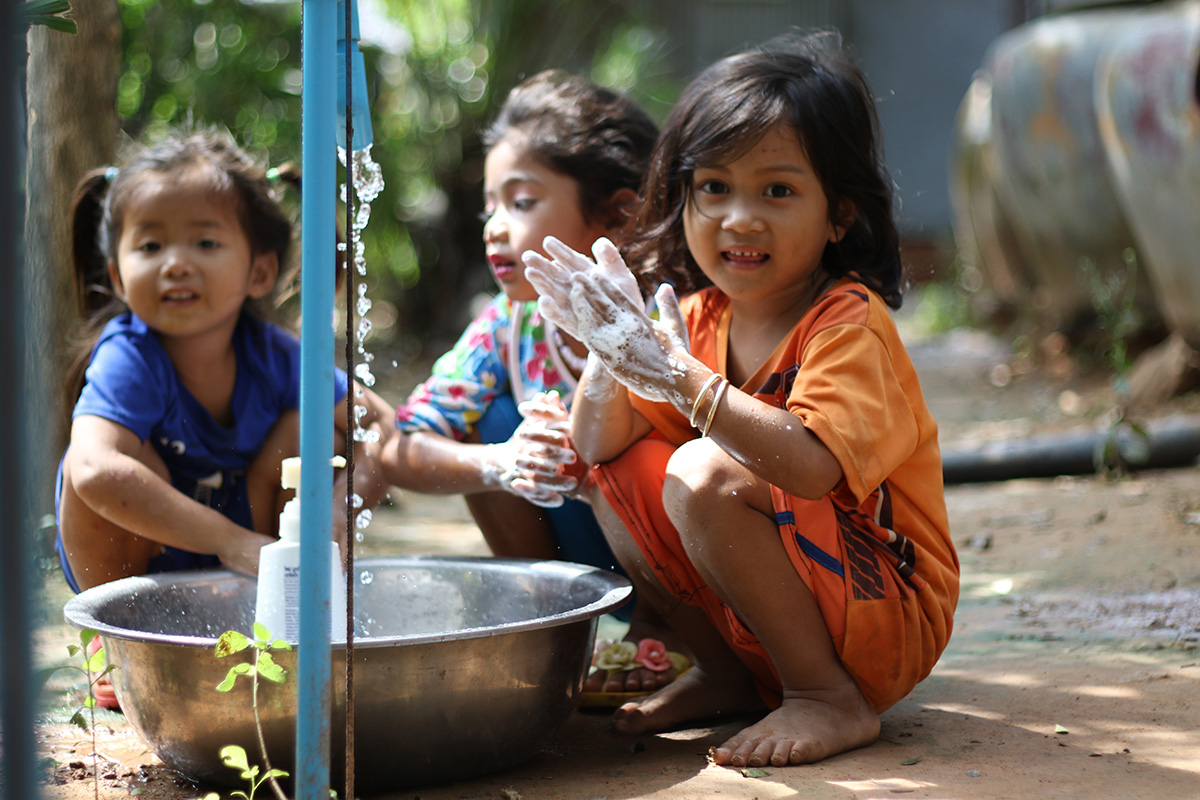
Notes to the balance sheet
1. Tangible fixed assets
The tangible assets within World Vision Nederland relate exclusively to assets held for the purpose of business operations and include mainly the renovation and furnishing fixture costs related to the move to our new office in 2020. Investments in 2022 are mainly IT-related.
| Tangible fixed assets | 2022 | 2021 |
|---|---|---|
| Start balance | 256,469 | 347,422 |
| Investments | 59,787 | 13,561 |
| Amortisation | -68.524 | -97,679 |
| Divestments | -1,818 | -6,833 |
| End balance | 245,913 | 256,471 |
2. Receivables from government and other organisations
The grants yet to be received concern income to be expected from existing grant agreements with government bodies and other organisations. Of the total amount yet to be received, €11,758,167 relates to contracts with a term of more than one year.
| Receivables from grants | 2022 | 2021 |
|---|---|---|
| Ministry of Foreign Affairs | 6,829,392 | 2,515,312 |
| European Commission | 4,317,889 | 4,590,885 |
| Other organisations | 1,108,411 | 2,960,028 |
| Total | 12,255,691 | 10,066,225 |
3. Other receivables
At the end of FY22, other receivables have increased with nearly €2.5 million due to positive intercompany position with World Vision International. This includes mainly a hedged USD position of €1.2 m at World Vision International in order to reduce risk on the lowering currency exchange rates and €1.0 m of intercompany balance with other World Vision International based on intercompany charges. Other receivables and accruals arecified in the table below.
| Other receivables | 2022 | 2021 |
|---|---|---|
| Receivables from World Vision International | 2,327,184 | 0 |
| Miscellaneous receivables | 297,339 | 213,414 |
| Deposit Utrechtseweg 12 | 28,112 | 28,112 |
| Deposit amount Post NL | 2,780 | 2,780 |
| Various prepaid expenses | 177,442 | 73,450 |
| Prepaid expenses employees | 0 | 20,358 |
| Total | 2,832,857 | 338,114 |
4. Cash and cash equivalents
The balances of all accounts are at the immediate disposal of the World Vision Nederland. During 2022 ABN AMRO applied an interest rate of -0.5%, on the balance above €100,000 per entity as of January 1, 2022 and an interest rate of -0.25% on the balance above €100,000 as of August 1, 2022. During 2022, ING applied an interest rate of -0.5% on balances above €100,000. Both ABN AMRO and ING apply an interest rate of 0% as of October 1, 2022.
| Cash and cash equivalents | 2022 | 2021 |
|---|---|---|
| ABN AMRO bank accounts | 4,449,983 | 2,096,865 |
| ING bank accounts | 208,461 | 205,151 |
| Cash | 67 | 164 |
| Total | 4,658,511 | 2,302,180 |
5. Continuity reserve
The continuity reserve is formed to cover short-term financial risks. In addition, the reserve also ensures that obligations can be met in the future. The level of the continuity reserve at the close of the financial year 2022 is €2.2 million. Based on the internally conducted risk analysis, this is sufficient.
Guideline for Financial Management of Goede Doelen Nederland uses a maximum standard of 150% of costs working organisation for the level of the continuity reserve. The level of the continuity reserve of World Vision Nederland was calculated on 74% of the costs of the working organisation in FY22.
| Continuity reserve | 2022 | 2021 |
|---|---|---|
| Start balance | 1,908,480 | 2,386,558 |
| Movements to continuity reserve | 285,515 | -478,078 |
| End balance | 2,193,995 | 1,908,480 |
6. Special purpose reserve
In 2022 it was decided to create a special purpose reserve for improvements in the internal organisation, which led to a total of €250,000 being set aside at the close
of FY22.
| Special purpose reserve | Header 2 | Header 3 |
|---|---|---|
| ‘ Investments ‘ | Cell 2 | Cell 3 |
| Start balance | Cell 2 | Cell 3 |
| Movements | ||
| End balance |
7. Special purpose funds
If third parties make funds available for a specific purpose, these funds, unless spent during the reporting year, are added to a special purpose fund, these are earmarked. The special purpose funds increased by €1.6 million in FY22. This is mainly caused by the special purpose fund for Ukraine,
€1.9 million of the raised income will be committed in the next financial year. The summary below shows the composition of the appropriated fund item.
| Special purpose funds | 2022 | 2021 | |
|---|---|---|---|
| Start balance | 253,000 | 343,056 | |
| Movements to special purpose funds* | 1,647,002 | -90,056 | |
| End balance | 1,900,002 | 253,000 | |
| * Notes to movements to special purpose funds 2022 | * Notes to movements to special purpose funds 2022 | ||
| Charged, to Nepal Giro555 campaign conform guidelines | -83,645 | Charged, to Nepal Giro555 campaign conform guidelines | |
| Added, to Ukraine Giro555 campaign conform guidelines | 1,900,002 | Added, to Ukraine Giro555 campaign conform guidelines | |
| 1,816,357 | |||
| Added, to (child) sponsorship 2022 | 1,897,112 | ||
| Charged, to (child) sponsorship 2022 | -2,066,467 | ||
| -169,355 | |||
| Movements to funds 2022 | 1,647,002 |
8. Amounts payable from grants
The grants payable concern expenditure to be expected from existing grant agreements. Of the total amount yet to be spent, €9,807,705 relates to contracts with a term of more than one year.
| Amounts payable to partners (by donor) | 2022 | 2021 |
|---|---|---|
| Ministry of Foreign Affairs | 7,840,611 | 2,600,284 |
| European Commission | 5,677,546 | 4,646,341 |
| Other organisations | 1,465,121 | 2,955,957 |
| Total | 14,983,278 | 10,202,582 |
9. Other liabilities
Costs related to the year-end audit, such as the external auditor, pension provisions and SHO contributions, among others, are reported under the heading ‘amounts to be paid’. The maturity of the amounts included under other liabilities is less than one year.
| Other liabilities | 2022 | 2021 |
|---|---|---|
| Payroll tax/social insurance | 109,367 | 89,855 |
| Holiday pay and days’ leave | 94,627 | 76,434 |
| Creditors | 83,349 | 111,221 |
| Amounts to be paid | 166,348 | 72,139 |
| Other accrued liabilities | 200,943 | 11,143 |
| Payable to World Vision International | 11,063 | 238,136 |
| Total | 665,697 | 598,928 |
Assets and liabilities not included in the balance sheet
On 15 January 2020, the organisation signed a lease agreement for our new office building on the Utrechtseweg in Amersfoort. The term of this agreement is 60 months. For the purpose of this agreement, a deposit has been made to the landlord in the amount of €28,112. The total remaining contract obligation is: €194,451.
On 1 January 2020, the organisation entered into a lease agreement for the phone and internet service in our office building. The term of this agreement is 60 months. The total remaining contract obligation is: €20,730.
In February 2022, the organisation entered into a lease agreement for the copier in our office building. The term of this agreement is 60 months. The total remaining contract obligation is: €48,098.
Since 2013, World Vision Nederland has been a shareholder of Vision Fund Kenya, a microfinance institution of Vision Fund International (VFI). The shares with a nominal value of €1,003,088 were donated by VFI to World Vision Nederland. Economic ownership of the shares rests with Vision Fund International. As such, World Vision Nederland has no financial control over the shares and is indemnified from any liability. The shares are legally owned.
Notes to the statement of income and expenditure
Both income and commitments to the field have grown in 2022. Income increased by almost €7.0 million in FY22 compared to the previous year. This is mostly due to high income from other non-profit organisations, including €8.2 million for Ukraine (Giro555). Furthermore, income from government decreased by nearly €1.2 million and income from private individuals increased by nearly €0.8 million. Expenditures on objectives have increased as well and were nearly €4.0 million higher than the previous year. Total result ended on nearly €2.2 million positive, which is almost fully due to timing of commitments, which will be done in financial year 2023.
10. Income from private individuals
Income from private individuals increased by 18% in financial year 2022, mostly due to larger single gifts this year. The total number of child sponsors grew to almost 9,600 in 2022. Many of the new sponsors were part of the Chosen programme. In addition, the number of other donors making monthly donations reached over 4,000 in 2022.
| Income from private individuals | 2022 | Budget 2022 | 2021 |
|---|---|---|---|
| Gifts for (child) sponsorship programmes | 3,440,770 | 3,703,192 | 3,383,862 |
| Donations and gifts | 1,297,972 | 898,265 | 836,179 |
| Legacy income | 254,820 | 30,000 | 32 |
| Total | 4,993,562 | 4,631,457 | 4,220,073 |
The breakdown below shows the average number of donors by reporting year. The number of structural donors and child sponsors increased in financial year 2022 and single gifts were
also up compared to last year as more events could take place.
| Average per reporting period* | Number of donors | |
|---|---|---|
| Financial year 2022 (2021 + 2022): | 22,655 | |
| Financial year 2021 (2020 + 2021): | 20,594 | |
| Financial year 2020 (2019 + 2020): | 24,833 |
11. Income from companies
Income from companies is lower compared to 2021. Furthermore the expected growth on income from companies was not realised in 2022 due to more focus on income from non-profit organisations. For 2023 new initiatives are planned to further grow in this category.
| Income from companies | 2022 | Budget 2022 | 2021 |
|---|---|---|---|
| Gifts for (child) sponsorship programmes | 87,675 | 88,004 | 81,604 |
| Donations and gifts | 98,253 | 500,000 | 185,142 |
| Total | 185,928 | 588,004 | 266,746 |
12. Income from government grants
World Vision Nederland receives grants for both development as well as for emergency relief and rehabilitation. World Vision Nederland is a member of the Dutch Relief Alliance (DRA), a partnership of Dutch humanitarian organisations and the Ministry of Foreign Affairs (DSH). World Vision Nederland also cooperates with DG ECHO (European Commission Civil Protection and Humanitarian Aid Operations). The total grant income in the reporting year was almost €20.6 million. Of this, €14.8 million was for own programs and €5.8 million for partner organisations. Total income from grants is lower than budget since capacity was needed for increased income in FY22 from other non-profit organisations.
| Income from government grants | 2022 | Budget 2022 | 2021 |
|---|---|---|---|
| Ministry of Foreign Affairs | 11,845,711 | 12,349,624 | 12,161,762 |
| European Commission | 4,521,612 | 8,026,609 | 7,786,330 |
| Other | 4,240,930 | 4,552,767 | 1,865,617 |
| Total | 20,608,253 | 24,929,000 | 21,813,709 |
Cooperating with Partners
In respect of certain grants, World Vision Nederland is working together with one or multiple partners. During financial year 2022, a total of €5,787,255 has been remitted to partners according to the table below.
| Donor | Country | Programme | Partners | Total Income 2022 | Remittance to Partners | Balance of Income 2022 World Vision Nederland |
|---|---|---|---|---|---|---|
| Ministry of Foreign Affairs | Angola | Mavo Diami - Geodata for smallholder farmers | Geodata partners | € 850,02 | € 367,28 | € 482,74 |
| Ministry of Foreign Affairs | DR Congo | DRC Joint response 2020 | DRA-partners | € -44,97 | € 13,59 | € -58,56 |
| Ministry of Foreign Affairs | DR Congo | DRC Joint response 2021 | DRA-partners | € 439,54 | € 107,68 | € 331,86 |
| Ministry of Foreign Affairs | DR Congo | DRC Joint response 2022-2023 | DRA-partners | €6,651,121 | €4,969,847 | €1,681,274 |
| Ministry of Foreign Affairs | Ethiopia | Drylands Development Programme Bridge to Scale | World Vision Australia | € -27,30 | € 12,73 | € -40,03 |
| European Commission | South Sudan | Enhancing Access to Safe and Inclusive Life-saving Education in Emergencies and Child Protection services | War Child Netherlands | €1,010,037 | € 316,13 | € 693,91 |
| Total | 8,878,448 | 5,787,255 | 3,091,193 | |||
13. Income from affiliated non-profit organisations
Income from affiliated organisations consists of reimbursements of charges from World Vision Nederland to various World Vision partners. In 2022, this mainly pertained to a position related to acquisition of grants in the Nordics and a position related to our ECHO Centre of Excellence with expertise on grants for DG ECHO.
| Income from affiliated non-profit organisations | 2022 | Budget 2022 | 2021 |
|---|---|---|---|
| World Vision partners | 207,051 | 0 | 62,303 |
| Total | 207,051 | 0 | 62,303 |
14. Income from other non-profit organisations
Income from non-profit organisations increased significantly during financial year 2022, mostly thanks to €8.2 million income through Giro555 campaigns for Ukraine. As part of the multi-annual strategic plan, gifts from other non-profit organisations for sponsor programmes and donations increased by €224,000.
| Income from affiliated non-profit organisations | 2022 | Budget 2022 | 2021 |
|---|---|---|---|
| World Vision partners | 207,051 | 0 | 62,303 |
| Total | 207,051 | 0 | 62,303 |

Giro555 Disclosure
World Vision Nederland is a member of ‘Giro555’ (Samenwerkende Hulporganisaties).
In May 2021, Giro555 launched a campaign against the effects of Covid-19 in India and Nepal. In financial year 2022 World Vision Nederland received an additional €51,692 for this campaign and together with the amount of €83,645 that was set apart in 2021 as earmarked fund, a total of €131,955 was contributed to projects in Nepal in financial year 2022.
On February 28, 2022, Giro555 launched a campaign for the people affected by the war in Ukraine. World Vision Nederland received €8,210,447. Of this, €5,773,313 has been spent in financial year 2022 with the focus on people in Ukraine and refugees in Romania. The remaining amount of €1.9 million has been included in the earmarked fund and will be spend within 24 months in accordance with the Giro555 guidelines.
Disclosure national campaign Giro555: Nepal Covid-19 response
| Income | Reporting year | Up to and including reporting year |
|---|---|---|
| Income from third party actions | 51,692 | 301,692 |
| Interest | ||
| Total income | 51,692 | 301,692 |
| Cost of preparation and coordination | 3,382 | 19,737 |
| Total available for aid activities | 48,310 | 281,955 |
| Expenditure | ||
| Understanding expenditure in the field | ||
| Expenditure on site by implementing organisation | 131,955 | 281,955 |
| Field expenses by the international umbrella organisation | ||
| Expenditure on site by Giro555 participant | ||
| Total expenditure | 131.955 | 281,955 |
Disclosure national campaign Giro555: Ukraine response
| Income | Reporting year | Up to and including reporting year |
|---|---|---|
| Income from third party actions | 8,210,447 | 8,210,447 |
| Interest | ||
| Total income | 8,210,447 | 8,210,447 |
| Cost of preparation and coordination | 537,132 | 537,132 |
| Total available for aid activities | 7,673,315 | 7,673,315 |
| Expenditure | ||
| Understanding expenditure in the field | ||
| Expenditure on site by implementing organisation | 5,773,313 | 5,773,313 |
| Field expenses by the international umbrella organisation | ||
| Expenditure on site by Giro555 participant | ||
| Total expenditure | 5,773,313 | 5,773,313 |
15. Expenditure on objectives
Expenditure Allocation
In order to provide insight into the details of the organisation’s costs, the model below is used to allocate the different types of expenditure.
| Expenditures | Objective Contributions to aid programmes | Objective Information and awareness | Costs of raising income | Management & Administration | Total 2022 | Budget 2022 | Total 2021 |
|---|---|---|---|---|---|---|---|
| Programme contributions | 28,904,826 | 0 | 0 | 0 | 28,904,826 | 27,890,000 | 25,380,283 |
| Staff costs | 547,023 | 519,025 | 1,003,551 | € 343,42 | 2,413,018 | 2,328,000 | 1,979,479 |
| Direct costs related to aid programmes | 44,41 | 0 | 0 | 0 | € 44,41 | € 34,00 | 6,824 |
| Publicity and communication expenses | 234 | 534,524 | 635,859 | 0 | 1,170,617 | 1,318,000 | 901,904 |
| Housing costs | 36,395 | 34,532 | 66,769 | 22,849 | 160,546 | 129,912 | 128,932 |
| Supervisory Board expenses | 0 | 0 | 4,082 | 4,082 | 8,12 | 4,971 | |
| Travel expenses | 2,095 | 1,988 | 3,843 | 1,315 | 9,241 | 11,38 | 2,082 |
| Office and general expenses | 59,58 | 56,531 | 109,304 | 50,866 | 276,282 | 329,157 | 263,784 |
| Other general expenses | 21,851 | 20,733 | 40,087 | 41,861 | 124,532 | 118,431 | 169,041 |
| Total | 29,616,415 | 1,167,333 | 1,859,414 | 464,392 | 33,107,554 | 32,167,000 | 28,837,299 |
Expenditure on objectives
Expenditure on objectives means expenditure related to one of the organisation’s objectives.
Raising income costs
Costs for raising income are incurred by activities aimed at asking people to contribute to one of the organisation’s objectives.
Management and administration expenses
Management and administration expenses include the costs related to management, internal control and administration, which cannot be charged to one of the objectives. The organisation distinguishes between direct and indirect costs. Indirect costs involve combined activities. Publicity and communication expenses are divided into generating income costs and information and awareness costs based on a fixed allocation table. Other costs are allocated on the basis of the (estimated) time spent by staff on the organisation’s various objectives. The established allocation table is evaluated at least once every three years. Supervisory Board costs, bank costs and auditor costs are allocated 100% to management and administration.
Expenditure on objectives
As set out in its articles of association, World Vision has two objectives:
- To improve the living conditions of underprivileged children on a structural basis, including through the creation of a safe and just environment, without discrimination on the basis of religion, race or political beliefs, as well as through sustainable aid, emergency aid and reconstruction assistance (provided contribution to aid programmes).
- To raise awareness and educate society about development cooperation in order to increase public support for and involvement in international cooperation (education and awareness).
In financial year 2022, World Vision Nederland committed €28.9 million for programme contributions. This is €3.5 million more than in the previous year. The growth in information and awareness follows from the organisation’s efforts to communicate more frequently with its donors and sponsors. The expenditure on objectives as a percentage of our total income was 87.5% in 2022 (budget 2022: 93.3% and 2021: 95.1%). This is lower since funding for Ukraine will be spent in part next year, thus this part is added to the special purpose fund.
| Objective expenditures | 2022 | Budget 2022 | 2021 |
|---|---|---|---|
| Contributions to aid programmes | 29,616,415 | 28,589,789 | 25,978,543 |
| Information and awareness | 1,167,333 | 1,109,474 | 867,373 |
| Total expenditure on objectives | 30,783,748 | 29,699,263 | 26,845,916 |
Overview of programme contributions
For the purpose of emergency relief and reconstruction programmes, World Vision Nederland contributed a total of €649,698 from its own resources and general donations during the year under review. The organisation aims to spend as much of the available resources as possible on its objective. In financial year 2022, the organisation achieved a spending ratio (to income) of 87.5%. This is slightly lower than the previous reporting year, as it is the result of timing of incoming and outgoing funds between financial years. The spending ratio as percentage to expenditure is the same compared to the previous year.
| Spending ratios | 2022 | Budget 2022 | 2021 |
|---|---|---|---|
| Expenditure on objectives as % of income | 87.5% | 93.3% | 95.1% |
| Expenditure on objectives as % of total expenditure | 93.0% | 92.3% | 93.1% |
| Category* | Country | Programme | Partner | Amount |
|---|---|---|---|---|
| SD | Afghanistan | WV Afghanistan’s Staff Capacity Building-Herat Area Programme | WV Afghanistan | 73,433 |
| SD | Angola | Mavo Diami - Geodata for smallholder farmers | WV Angola, Geodata Partners | 963,587 |
| SD | Various countries | Chosen | WV Partners | 6,006 |
| SD | Various countries | Right2Grow | WV & Right2Grow Partners | 919,783 |
| SD | Ethiopia | Dembia Area Programme | WV Partners | 338,429 |
| SD | Ethiopia | Drylands Development Programme Bridge to Scale | WV Ethiopia, WV Australia, Wageningen Centre for Development Innovation | 12,955 |
| SD | Ethiopia | Northern Ethiopia Crisis Response Programme (NECR) | WV Ethiopia | 80,000 |
| SD | India | Dharavi Mumbai Area Programme | WV India | 338,429 |
| SD | Indonesia | North Halmahera Area Programme | WV Indonesia | 158,616 |
| SD | Indonesia | Sambas Area Programme | WV Indonesia | 190,366 |
| SD | Mali | Projet pour la promotion d’un Environnement Soutenant l’Exercice des Droits des Enfants victimes des pires formes de travail et des mineurs migrants, déplacés et réfugiés au Mali (PESEDEM) | WV Mali, Association Malienne pour la Protection de l’Environment (Stop-Sahel) | 598,431 |
| SD | Uganda | Kyabigambire Area Programme | WV Uganda | 319,494 |
| SD | Uganda | Alito Assessm and Design programme Uganda | WV Uganda | 27,228 |
| SD | Sierra Leone | Sarwah Area Programme | WV Sierra Leone | 253,822 |
| SD | Tanzania | Isanga Area Programme | WV Tanzania | -7,506 |
| SD | Tanzania | Malangali assessment and design project | WV Tanzania | 123,683 |
| SD | Tanzania | Idumbala Area Programme | WV Tanzania | 50,038 |
| ER | Afghanistan | Life-saving support to drought affected populations in Herat and Badghis | WV Afghanistan | 826 |
| ER | Afghanistan | Badghis & Ghor Seasonal Support Food response | WV Afghanistan | 1,125,476 |
| ER | Afghanistan | Afghanistan Joint Response 3 | WV Afghanistan, DRA Partners | 928,772 |
| ER | Armenia | Protection Assistance and Monitoring of persons of concern in Armenia | WV Armenia | 30,816 |
| ER | Armenia | Recovery of Lives Through Income Generation Activities | WV Armenia | 52,500 |
| Category* | Country | Programme | Partner | Amount |
|---|---|---|---|---|
| ER | Bangladesh | Access to quality informal education Rohingya refugee children in Rohingya camps of Cox’s Bazar | WV Bangladesh | 136,818 |
| ER | Burkina Faso | Burkina Faso Acute Crisis Joint Response | WV Burkina Faso, DRA Partners | 462,963 |
| ER | Burundi | Programme d’appui à la continuité des apprentissages face à la pandémie Covid-19 (PACA-GUMAWIGA) | WV Burundi | 193,371 |
| ER | Various countries | HAF Covid-19 WASH Response | WV Partners | 70,481 |
| ER | DR Congo | DRC Joint Response 2019-2021 | WV DRC, DRA Partners | 375,104 |
| ER | DR Congo | WASH in le Grand Nord of North Kivu phase 2 | WV DRC | 224,353 |
| ER | DR Congo | UNPBF Renforcer la justice, la cohésion sociale et la réinsertion socioéconomique | WV DRC | 100,614 |
| ER | DR Congo | North Kivu General Food Distribution Project | WV DRC, WV Australia, WV Canada, WV Hong Kong, WV Japan, WV Taiwan, WV UK, WV VS | 1,396,769 |
| ER | DR Congo | DRC Joint Response 2022-2023 | WV DRC, DRA Partners | 6,475,808 |
| ER | Haiti | Earthquake Emergency WASH response | WV Haiti | 71,174 |
| ER | Indonesia | I-COPE (Indonesia Covid-19 Pandemic Emergency Response) | WV Indonesia | 488,055 |
| ER | Jordan | School Readiness and Early Childhood Development in Azraq Syrian Refugee Camp | WV Jordan | 42,793 |
| ER | Lebanon | Provision of WASH services for vulnerable Syrian and Lebanese children in the Bekaa Phase 9 Amendmt4 | WV Lebanon | 907,028 |
| ER | Nepal | Giro555 Strengthening Covid-19 Response of the Health Sector in Nepal | WV Nepal | 131,955 |
| ER | Uganda | Equitable Access to Quality and Transformational Education for refugee and host communities in West | WV Uganda | 949,592 |
| ER | Ukraine, Romania | Giro555 Ukraine Crisis Response | WV Romania, WV Ukraine, WV Ukraine Crisis Response | 5,773,313 |
| ER | Somalia | Somalia Joint Response 2021 | WV Somalia, DRA Partners | 166,939 |
| ER | Somalia | Somalia Protracted Crisis Joint Response 2022-2023 | WV Somalia, DRA Partners | 785,065 |
| ER | South Sudan | South Sudan Western Equatoria Civil Society Capacity Development Project | WV South Sudan | 7,620 |
| ER | South Sudan | Enhancing Access to Safe and Inclusive Life-saving Education in Emergencies and Child Protection services | WV South Sudan, War Child Holland | 1,017,092 |
| ER | Sudan | Sudan Joint Response 3 | WV Sudan, DRA Partners | 129,902 |
| Category* | Country | Programme | Partner | Amount |
|---|---|---|---|---|
| ER | Syria | Integrated Health and Protection Assistance for the most vulnerable IDP’s returnees and host communi | WV Syria Response | 36,638 |
| ER | Syria | Reduced vulnerability of crisis affected people in North West Syria through improved access to healt | WV Syria Response | 2,819 |
| ER | Syria | Multisectoral intervention to scale up humanitarian assistance in North West Syria | WV Syria Response, WV Japan, WV Singapore | 1,303,591 |
| ER | Turkey | Providing information and protection assistance to vulnerable refugees in Turkey and enhancing community-based protection | WV Syria Response, WV Japan | -100,155 |
| ER | Vietnam | Enhancing inclusive and gender-responsive forecast-based early action for effective disaster prepare | WV Afghanistan, Stichting CARE Nederland, Plan International Finland | 124,405 |
| ER | Zimbabwe | Emergency Social Cash Transfer in the Southern Cluster | WV Zimbabwe | 470,847 |
| Other | China | A Community for ALL! - Disability Inclusion | WV Partners | 6,000 |
| Other | International | Core Ministry Support | WV Partners | 555,091 |
| Other | Kenya | KENYA-Kenya | WV Partners | 4,250 |
| Other | Rwanda | RWANDA-Rwanda | WV Partners | 9,350 |
| Total | 28,904,826 |
16. Costs of raising income
The organisation incurs costs for the purpose of raising income to be spent on its mission: improving the living conditions of vulnerable children. In its multi-year strategic plan, the organisation is committed to revenue growth, which will increase the costs of raising income. The actual costs of raising income are within budget and 18% higher than the previous reporting year. Combined with the increase in income, the percentage of income raising costs has slightly decreased from 5.6% to 5.3% from financial year 2022.
| Costs of raising income | 2022 | Budget 2022 | 2021 |
|---|---|---|---|
| Costs of raising income | 1,859,414 | 2,033,672 | 1,575,098 |
17. Management and administration costs
The costs of management and administration during 2022 financial have gone up to a total of €464,000. However, as a percentage of total income it decreased to 1.3% (budget 2022: 1.4% and 2021: 1.5%). Management and administration costs include the costs incurred by the Supervisory Board. The members of the Supervisory Board receive no remuneration other than reimbursement of expenses incurred in connection with their role as members of the Supervisory Board. The total reimbursement of expenses incurred by members of the Supervisory Board amounts to €671.
| Costs management and administration | 2022 | Budget 2022 | 2021 |
|---|---|---|---|
| Management and administration costs | 464,392 | 434,065 | 416,285 |
Staff costs
At the start of fiscal year 2022, World Vision Nederland employed 38 employees (31.0 FTE). At the end of fiscal year 2022, the organisation had grown and now has 42 employees, together representing 35.5 FTEs. Six vacancies opened at the end of the fiscal year. The absenteeism rate in the past fiscal year was 2.83% (2021: 2.52%). We aim to keep absenteeism below 3.0%. The breakdown of total staff costs for the reporting year is shown in the table below. Charged staff costs include salary costs that are part of the programme budget. World Vision Nederland has a pension scheme in place for employees. This is a defined contribution scheme. The costs of the premiums are accounted for in the year to which they pertain. The pension system is based on an investment arrangement.
| Staff costs | 2022 | 2021 |
|---|---|---|
| Salaries | 1,670,147 | 1,375,499 |
| Social security contributions | 316,073 | 261,021 |
| Pension | 155,530 | 135,410 |
| Temporary workers | 269,345 | 190,122 |
| Other staff costs | 208,031 | 178,697 |
| Charged to programmes | -206,109 | -161,270 |
| Total staff costs | 2,413,018 | 1,979,479 |
Salary and emoluments paid to Executive Board
The remuneration of the managing director has been tested against the regulation on remuneration of directors of Goede Doelen Nederland. Marco van der Graaf is the CEO and Executive Board of World Vision Nederland. He has been appointed as of 1 March 2019. Goede Doelen Nederland has set a maximum for the remuneration of directors. The executive compensation is calculated on the basis of the BSD index (Basic Score for Executive Positions). The BSD score has been evaluated by the Supervisory Board and set at 365 in 2020. The management remuneration policy is in line with the guidelines as established by Goede Doelen Nederland.
Ancillary positions of Marco van der Graaf are: Member of the Board of Stichting Samenwerkende Hulporganisaties (Giro555), Member of the Board of World Vision EUREP – World Vision Brussels & EU representation, Member of the Supervisory Board of Stichting Beheer Subsidiegelden Dutch Relief Alliance (DRA) and Chair of the Supervisory Board of Stichting Tijd voor Actie. Marco van der Graaf receives no remuneration for these positions.
| Remuneration Marco van der Graaf | 2022 | 2021 |
|---|---|---|
| Type | permanent | permanent |
| Hours full-time work week | 38 | 38 |
| Part-time percentage | 100 | 100 |
| Gross salary | 90,150 | 88,546 |
| Holiday pay | 7,212 | 7,084 |
| Unused days’ leave | 5,410 | |
| Total annual income | 102,772 | 95,630 |
| Taxable allowances/additions | 188 | 111 |
| Pension charges (employer’s share) | 16,171 | 16,910 |
| Total other charges and benefits | 16,359 | 17,021 |
| Total remuneration | 119,131 | 112,651 |
18. Net Financial income and expenditure
In financial year 2022 we had a positive result of €0.1 million that was realised due to the exchange rate effect of a debit USD position held at World Vision International. This is due to the strengthened USD position compared to the Euro position at the close of our financial year. The following table shows the details of the amount recognised under the net financial income and expenses.
| 2022 | 2021 | |
|---|---|---|
| Interest income/expenses | -40,449 | -13,719 |
| Payment differences | 54 | 40 |
| Realised and unrealised foreign exchange results | 141,047 | 47,759 |
| Total | 100,651 | 34,080 |
Signing of Annual Report
Amersfoort, 20 March 2023
Supervisory Board:
Ms. drs. I.J.M. (Ingrid) Allemekinders-Pols
Ms. K.M. (Kristin) Anderson
Mr. drs. H.A.L. (Alrik) Boonstra
Ms. A. (Almatine) Leene
Mr. drs. J. (Johan) van Renselaar
Mr. W. (Walter) Wassenaar
Mr. ir. A.J. (Arco) van Wessel
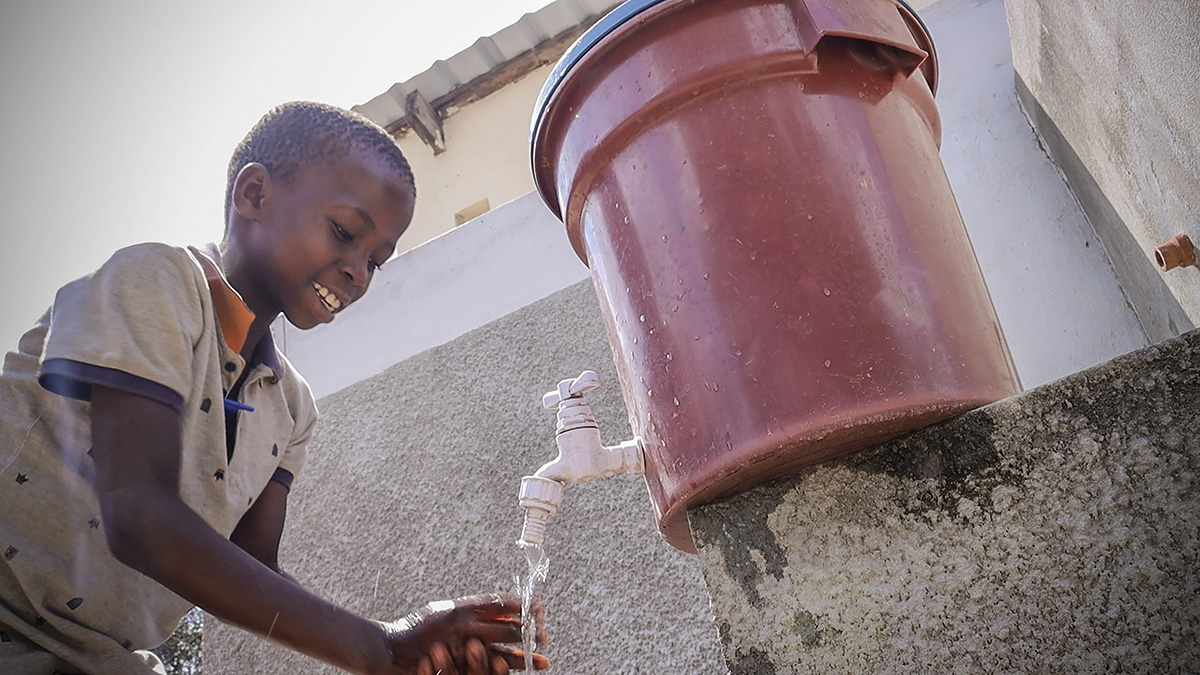
Independent auditor’s report
To: the Supervisory Board of Stichting World Vision Nederland
Report on the audit of the financial statements 2022 included in the annual report
Our opinion
We have audited the financial statements 2022 of Stichting World Vision Nederland based in Amersfoort.
In our opinion, the accompanying financial statements give a true and fair view of the financial position of Stichting World Vision Nederland as at 30 September 2022 and of its result for the period 1 October 2021 until 30 September 2022 in accordance with the Guideline for annual reporting 650 ‘Fondsenwervende organisaties’ of the Dutch Accounting Standards Board.
The financial statements comprise:
- the balance sheet as at 30 September 2022;
- the statement of income and expenditure for the period 1 October 2021 until 30 September 2022 and
- the notes comprising a summary of the accounting policies and other explanatory information.
Basis for our opinion
We conducted our audit in accordance with Dutch law, including the Dutch Standards on Auditing. Our responsibilities under those standards are further described in the ‘Our responsibilities for the audit of the financial statements’ section of our report.
We are independent of Stichting World Vision Nederland in accordance with the ‘Verordering inzake de Onafhankelijkheid van accountants bij assurance-opdrachten’ (ViO, Code of Ethics for Professional Accountants, a regulation with respect to independence) and other relevant independence regulations in the Netherlands. Furthermore we have complied with the ‘Verordening gedrags- en beroepsregels accountants’ (VGBA, Dutch Code of Ethics).
We believe the audit evidence we have obtained is sufficient and appropriate to provide a basis for our opinion.
Report on the other information included in the annual report
The annual report contains other information, in addition to the financial statements and our auditor’s report thereon.
Based on the following procedures performed, we conclude that the other information:
- is consistent with the financial statements and does not contain material misstatements;
- contains all the information regarding the management report and the other information as required by the Guideline for annual reporting 650 ‘Fondsenwervende organisaties’ of the Dutch Accounting Standards Board.
We have read the other information. Based on our knowledge and understanding obtained through our audit of the financial statements or otherwise, we have considered whether the other information contains material misstatements.
By performing these procedures, we comply with the requirements of the Dutch Standard 720. The scope of the procedures performed is substantially less than the scope of those performed in our audit of the financial statements.
The Board is responsible for the preparation of the management report and other information in accordance with the Guideline for annual reporting 650 ‘Fondsenwervende organisaties’ of the Dutch Accounting Standards Board.

Description of responsibilities regarding the financial statements
Responsibilities of the Board and the Supervisory Board for the financial statements
The Board is responsible for the preparation and fair presentation of the financial statements in accordance with the Guideline for annual reporting 650 ‘Fondsenwervende organisaties’ of the Dutch Accounting Standards Board. Furthermore, the Board is responsible for such internal control as the Board determines is necessary to enable the preparation of the financial statements that are free from material misstatement, whether due to fraud or error.
As part of the preparation of the financial statements, the Board is responsible for assessing the foundation’s ability to continue as a going concern. Based on the financial reporting framework mentioned, the Board should prepare the financial statements using the going concern basis of accounting unless the Board either intends to liquidate the foundation or to cease operations, or has no realistic alternative but to do so. The Board should disclose events and circumstances that may cast significant doubt on the foundation’s ability to continue as a going concern in the financial statements.
The Supervisory Board is responsible for overseeing the foundation’s financial reporting process.
Our responsibilities for the audit of the financial statements
Our objective is to plan and perform the audit assignment in a manner that allows us to obtain sufficient and appropriate audit evidence for our opinion.
Our audit has been performed with a high, but not absolute, level of assurance, which means we may not detect all material errors and fraud during our audit. Misstatements can arise from fraud or error and are considered material if, individually or in the aggregate, they could reasonably be expected to influence the economic decisions of users taken on the basis of these financial statements. The materiality affects the nature, timing and extent of our audit procedures and the evaluation of the effect of identified misstatements on our opinion.
We have exercised professional judgement and have maintained professional skepticism throughout the audit, in accordance with Dutch Standards on Auditing, ethical requirements and independence requirements.
Our audit included e.g.:
- identifying and assessing the risks of material misstatement of the financial statements, whether due to fraud or error, designing and performing audit procedures responsive to those risks, and obtaining audit evidence that is sufficient and appropriate to provide a basis for our opinion. The risk of not detecting a material misstatement resulting from fraud is higher than for one resulting from error, as fraud may involve collusion, forgery, intentional omissions, misrepresentations, or the override of internal control;
- obtaining an understanding of internal control relevant to the audit in order to design audit procedures that are appropriate in the circumstances, but not for the purpose of expressing an opinion on the effectiveness of the foundation’s internal control;
- evaluating the appropriateness of accounting policies used and the reasonableness of accounting estimates and related disclosures made by the Board;
- concluding on the appropriateness of the Board’s use of the going concern basis of accounting, and based on the audit evidence obtained, whether a material uncertainty exists related to events or conditions that may cast significant doubt on the foundation’s ability to continue as a going concern. If we conclude that a material uncertainty exists, we are required to draw attention in our auditor’s report to the related disclosures in the financial statements or, if such disclosures are inadequate, to modify our opinion. Our conclusions are based on the audit evidence obtained up to the date of our auditor’s report. However, future events or conditions may cause a foundation to cease to continue as a going concern;
- evaluating the overall presentation, structure and content of the financial statements, including the disclosures; and
- evaluating whether the financial statements represent the underlying transactions and events in a manner that achieves fair presentation.
We communicate with the Supervisory Board regarding, among other matters, the planned scope and timing of the audit and significant audit findings, including any significant findings in internal control that we identify during our audit.
Was signed,
Sliedrecht, 20 March 2023
WITh Accountants B.V.
- Alblas RA
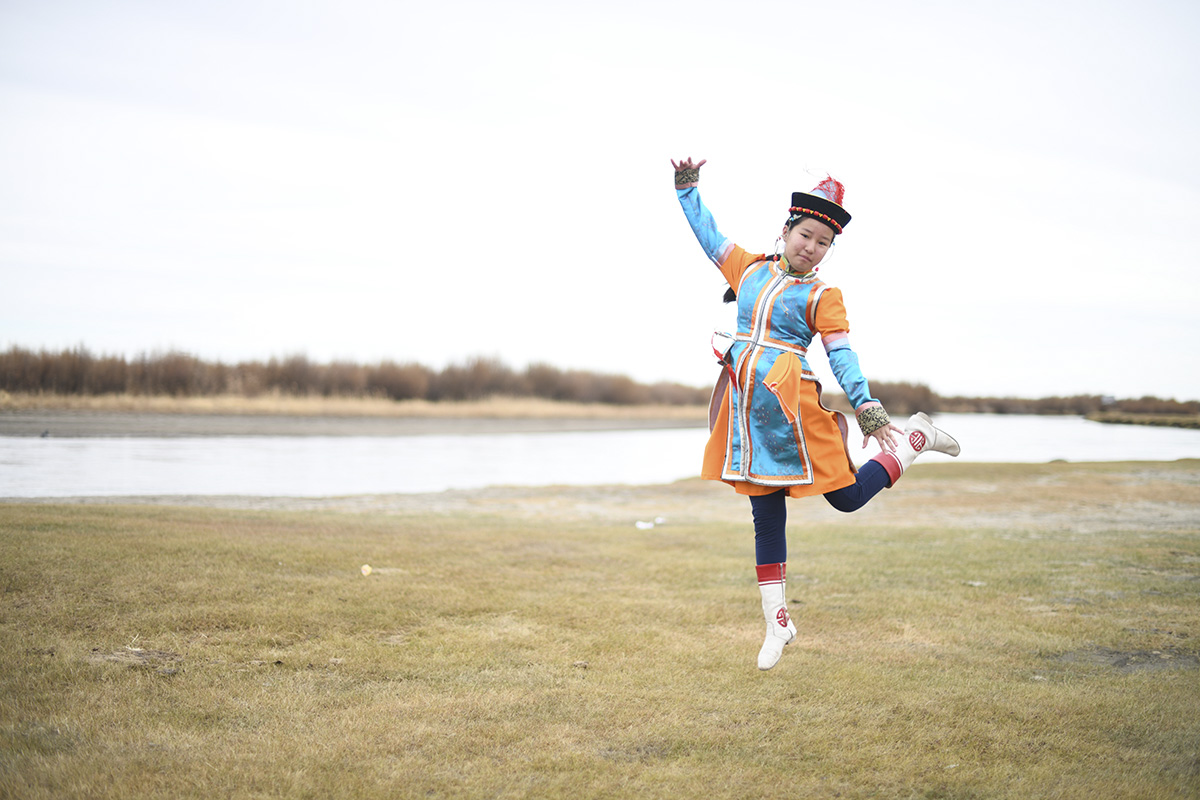
Budget
Budget 2023 Income
| Income | Budget 2023 | Result 2022 | Budget 2022 |
|---|---|---|---|
| Income from private individuals | 5,663,451 | 4,993,562 | 4,631,456 |
| Income from companies | 211,322 | 185,928 | 588,004 |
| Income from government grants | 25,624,842 | 20,608,253 | 24,929,000 |
| Income from affiliated non-profit organisations | 211,368 | 207,051 | 0 |
| Income from other non-profit organisations | 1,610,017 | 9,146,008 | 1,677,540 |
| Total income raised | 33,321,000 | 35,140,802 | 31,826,000 |
| Other income | 0 | 48,618 | 0 |
| Total Income | 33,321,000 | 35,189,420 | 31,826,000 |
Budget Expenditure
| Expenditure | Budget 2023 | Result 2022 | Budget 2022 |
|---|---|---|---|
| Expenditure on objectives | |||
| Contributions to aid programmes | 31,420,087 | 29,616,415 | 28,589,789 |
| Awareness raising and advocacy | 1,394,341 | 1,167,333 | 1,109,474 |
| Total expenditures on objectives | 32,814,428 | 30,783,748 | 29,699,263 |
| Raising income costs | 2,220,419 | 1,859,414 | 2,033,672 |
| Management and administration costs | 550,153 | 464,392 | 434,065 |
| Total expenditure | 35,585,000 | 33,107,554 | 32,167,000 |
Budget total
| Net result before financial income and expenditures | -2,264,000 | 2,081,866 | -341,000 |
|---|---|---|---|
| Net financial income and expenditure | 0 | 100,651 | 0 |
| Net result | -2,264,000 | 2,182,517 | -341,000 |





